These are more of the progress pictures taken over the last few years. Check out the previous post for more information.
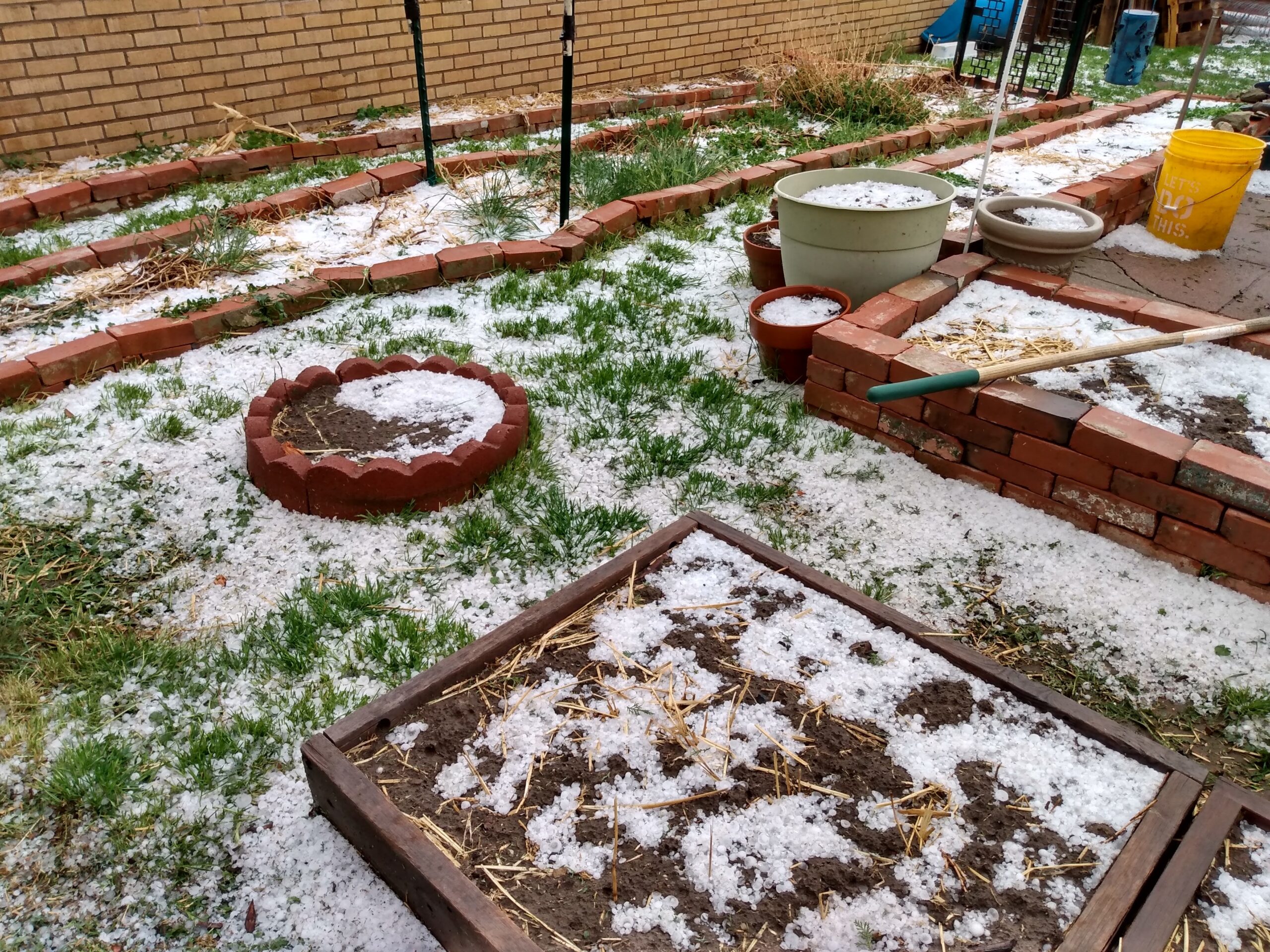
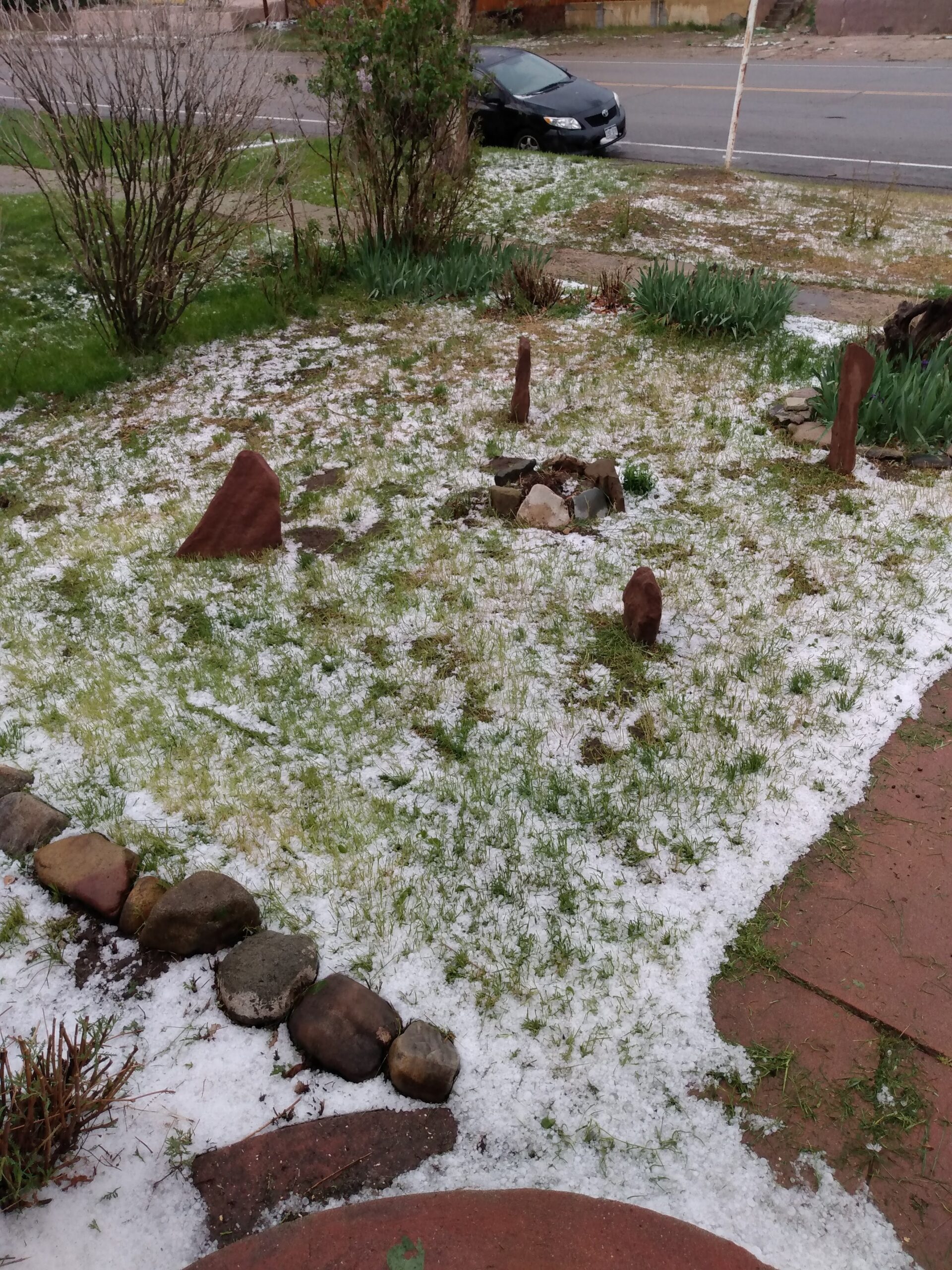
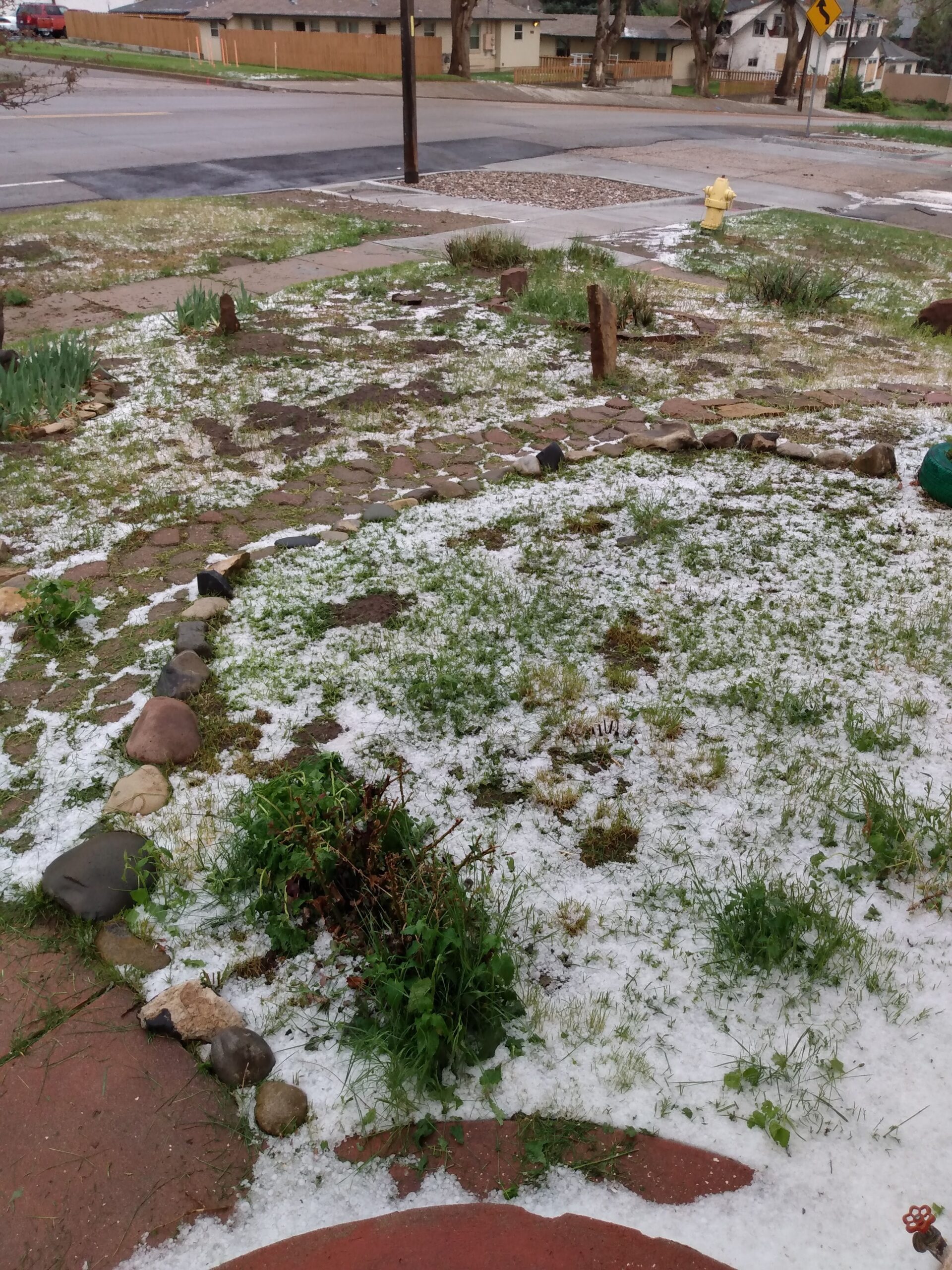
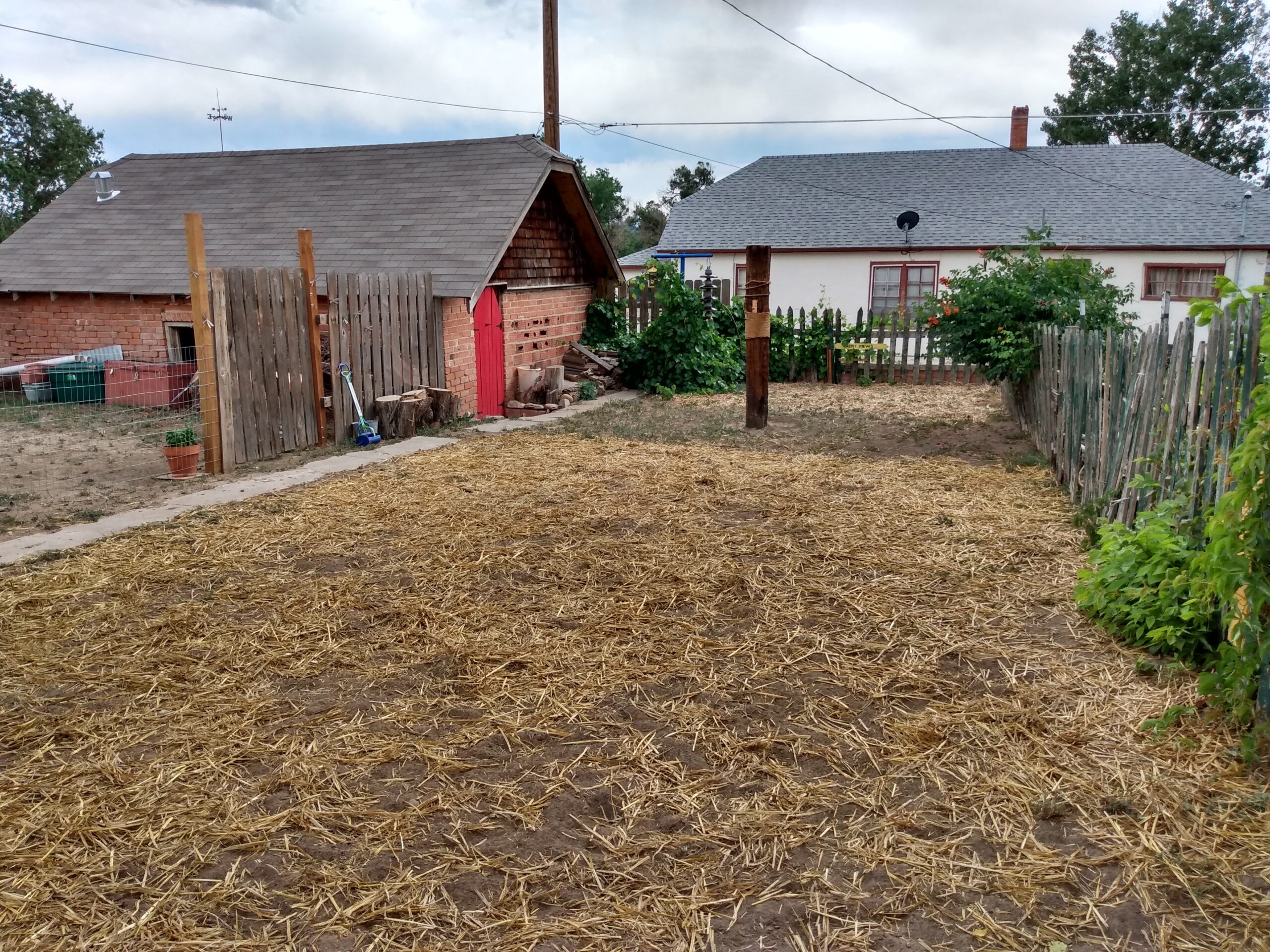
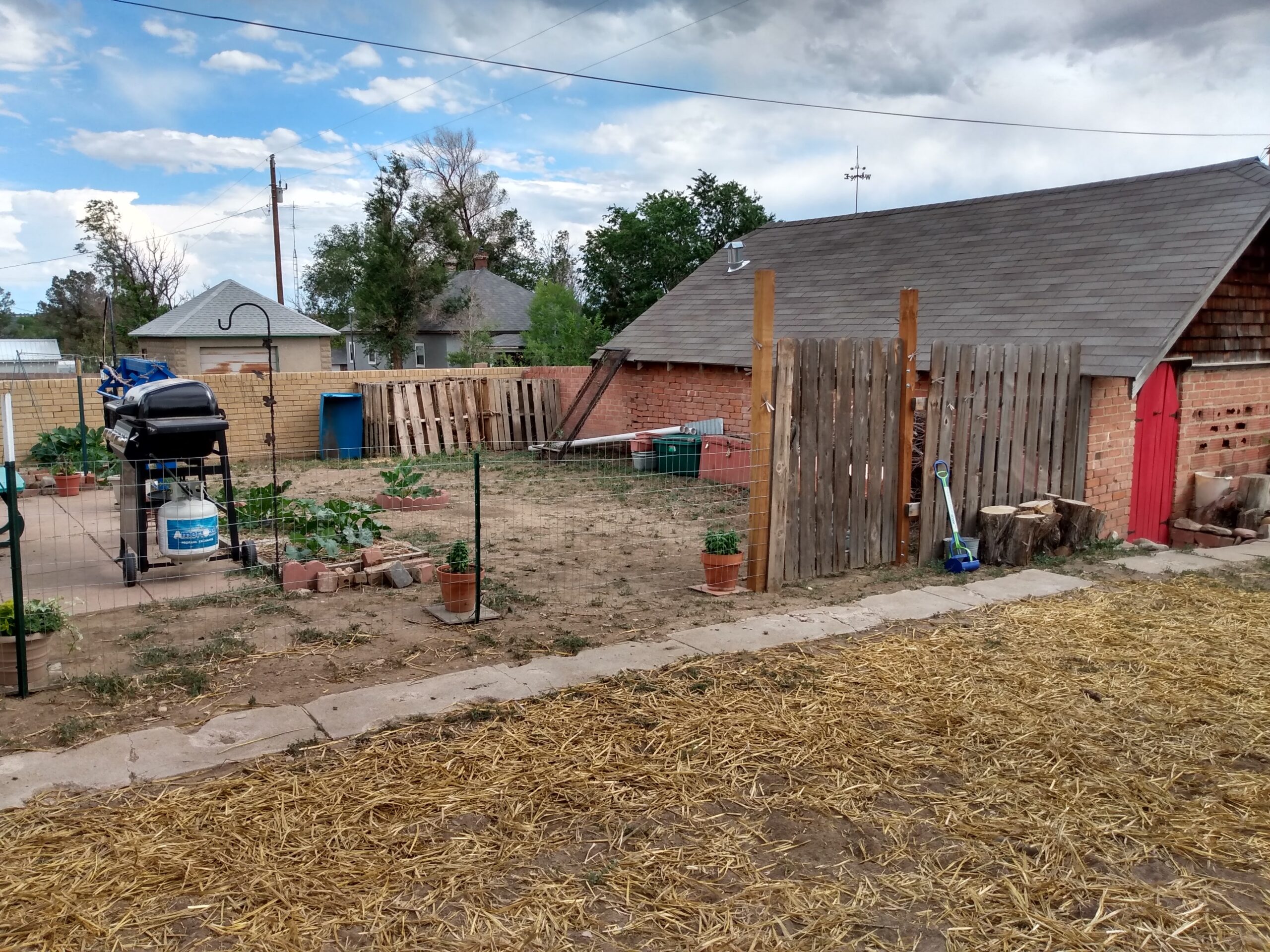
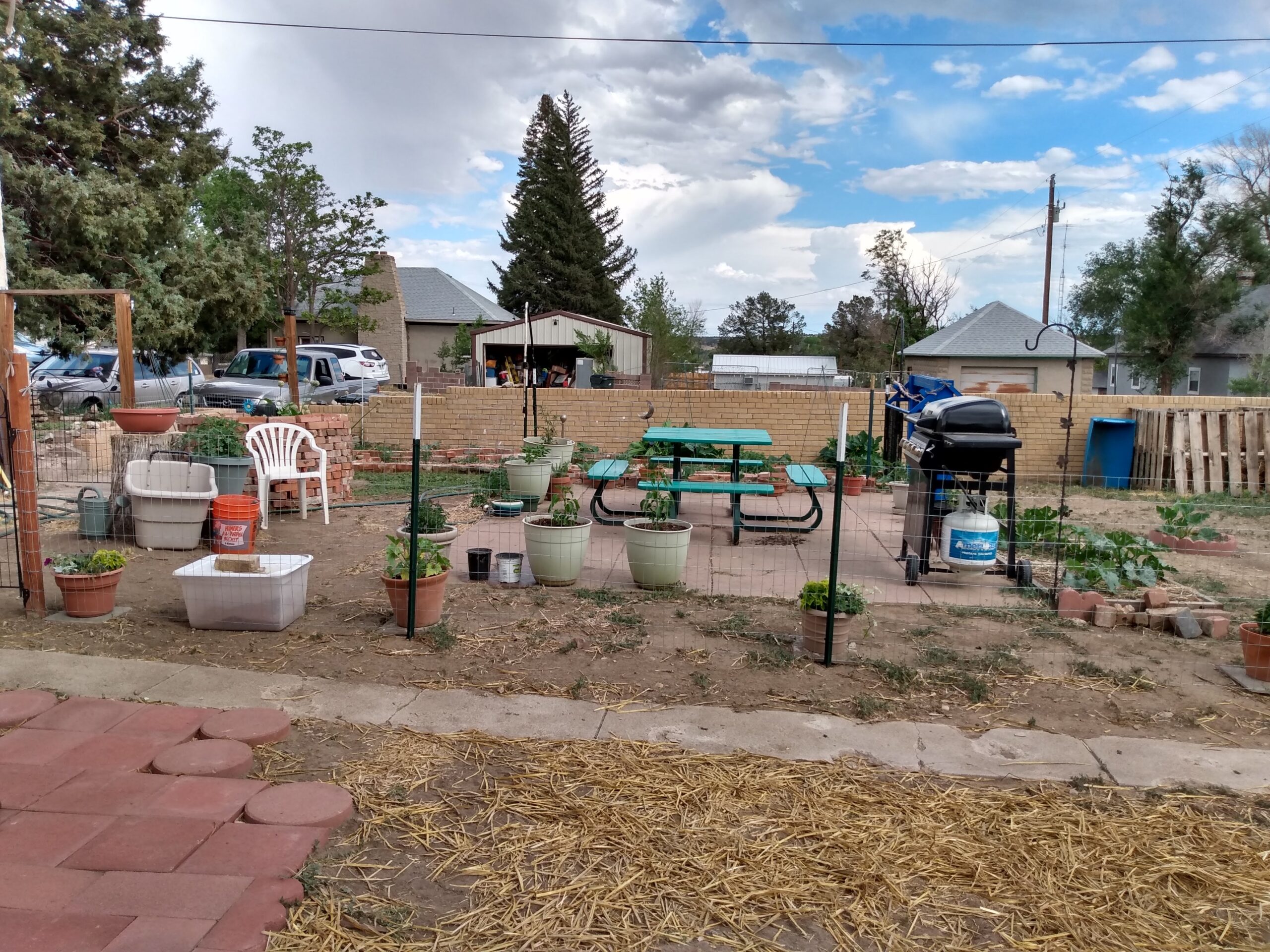
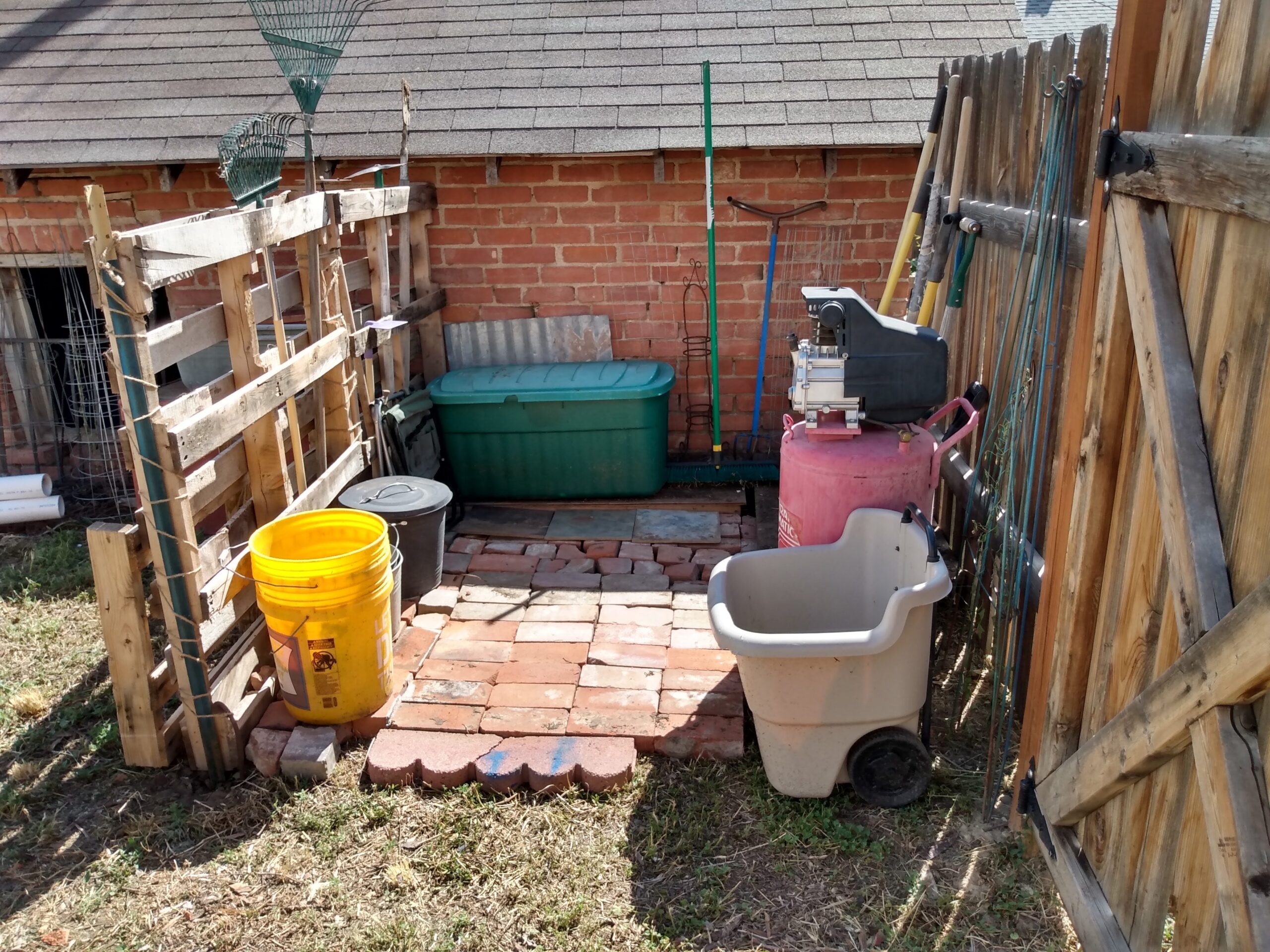
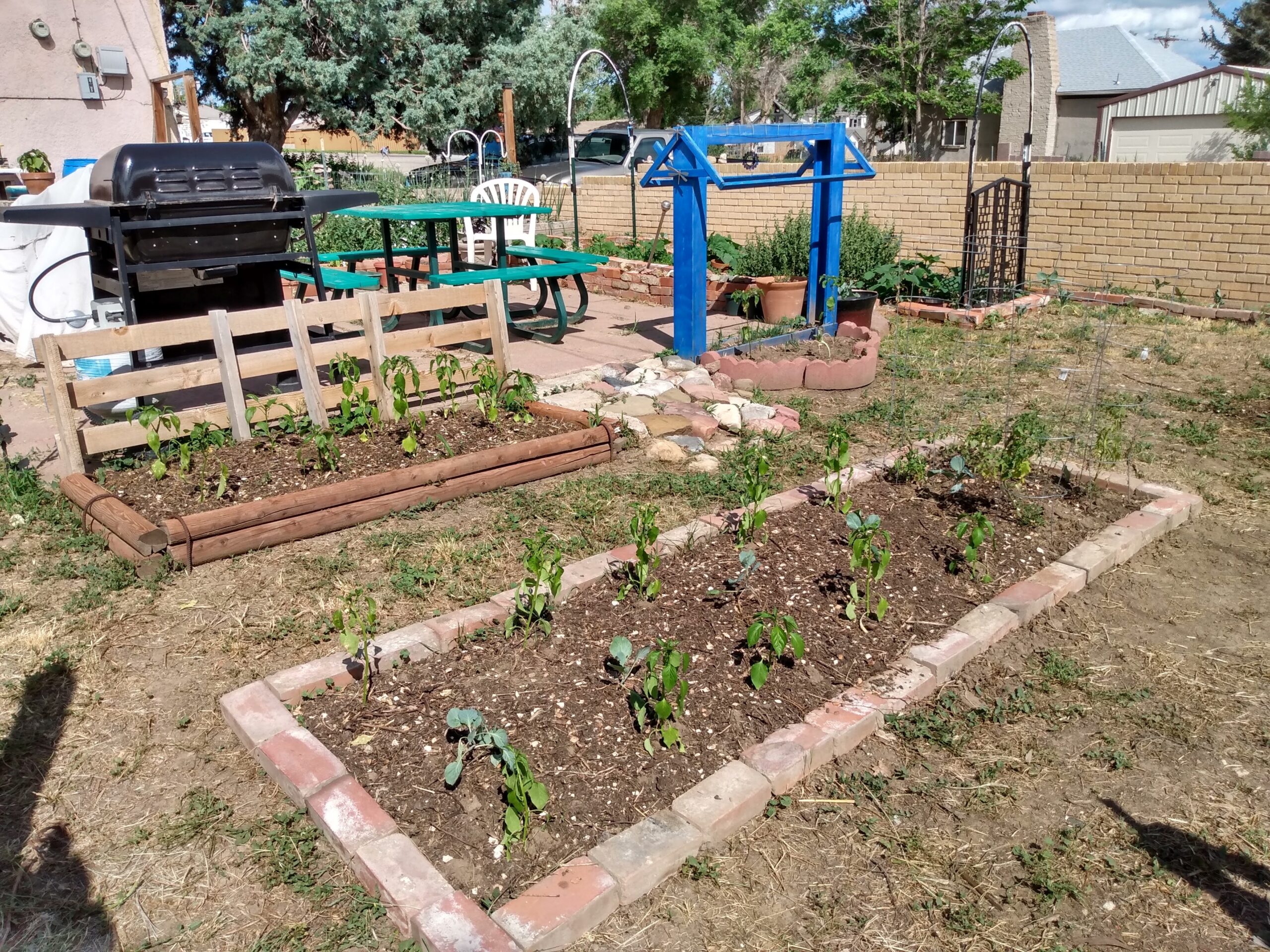
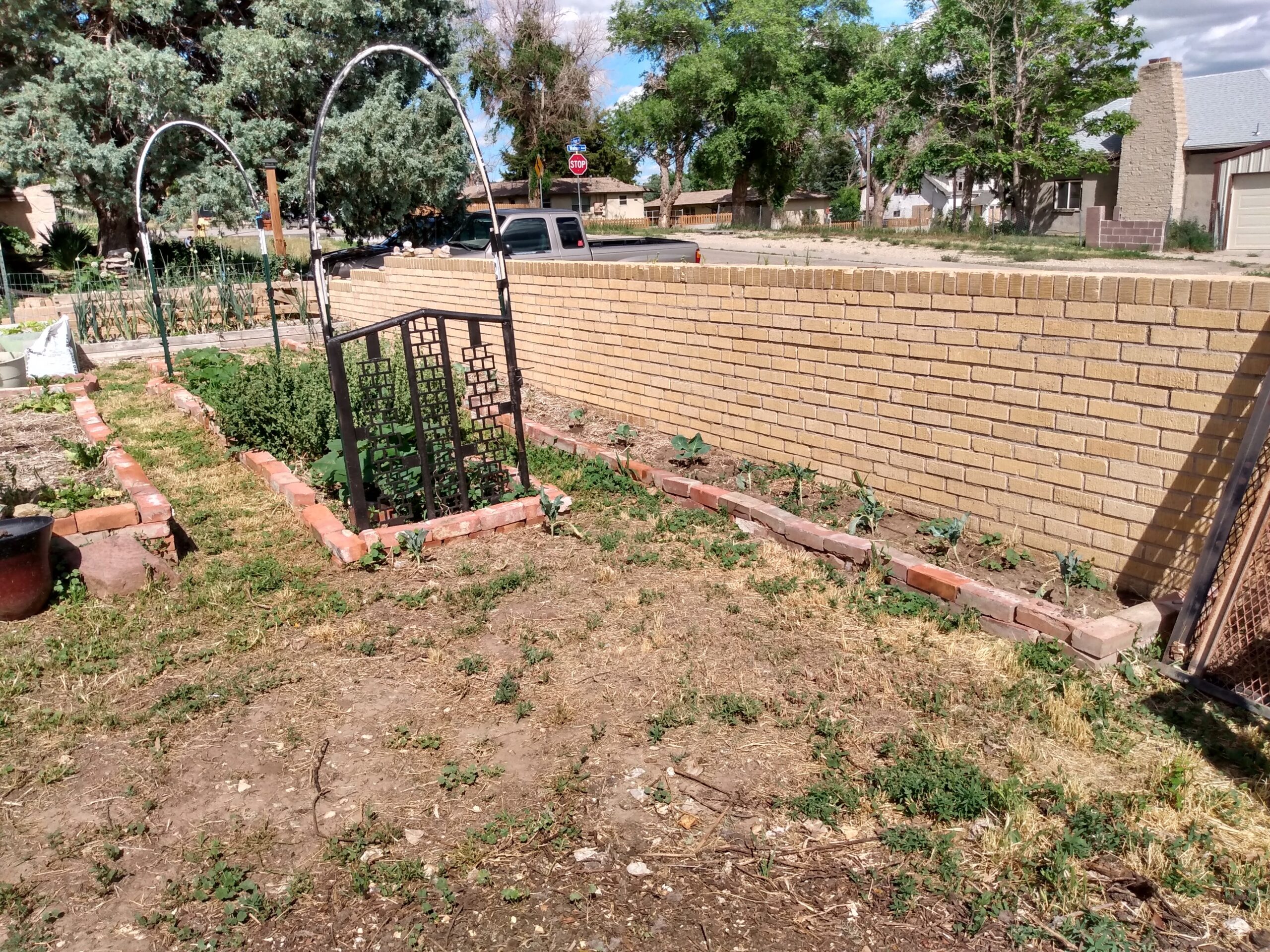
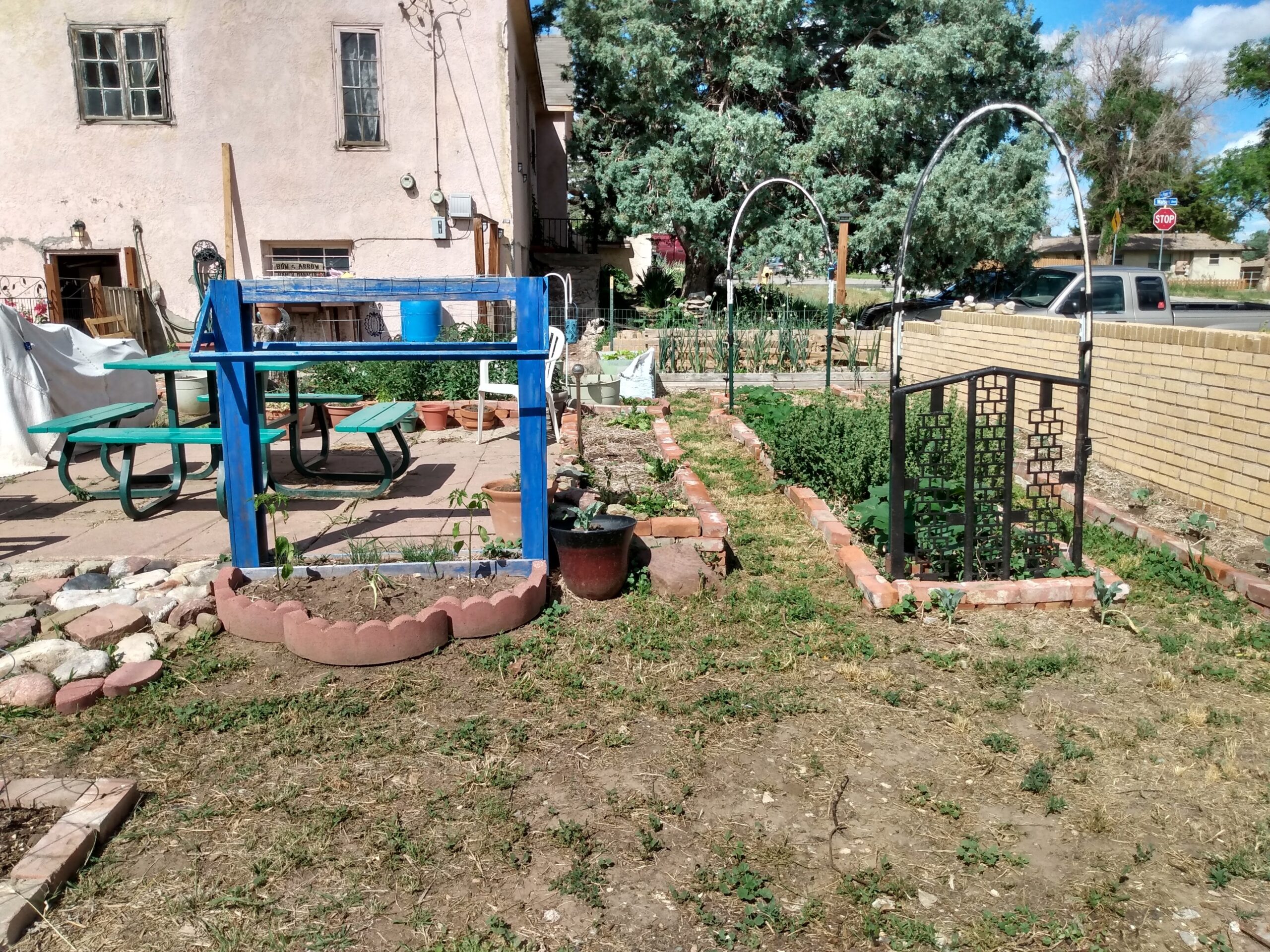
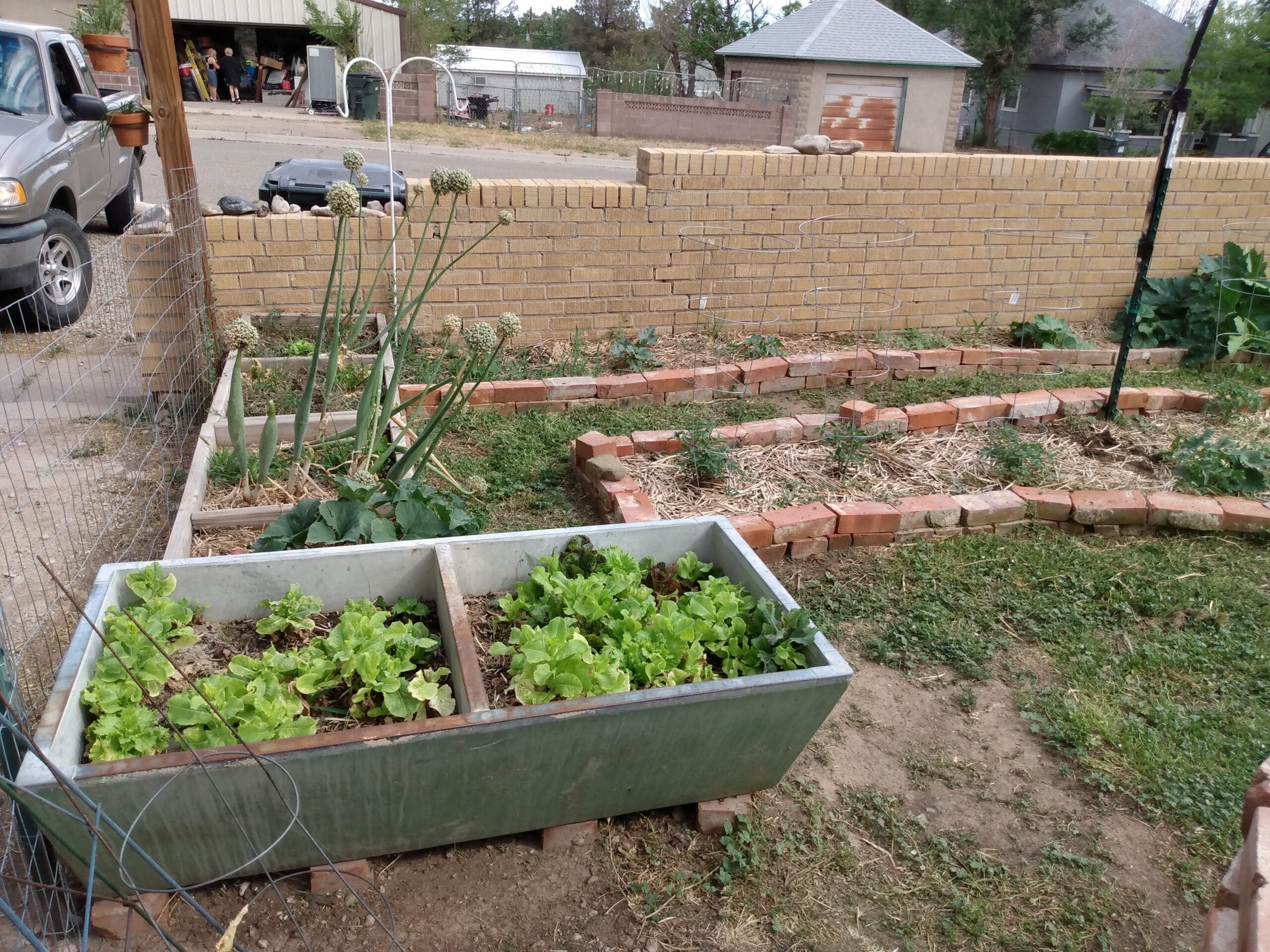
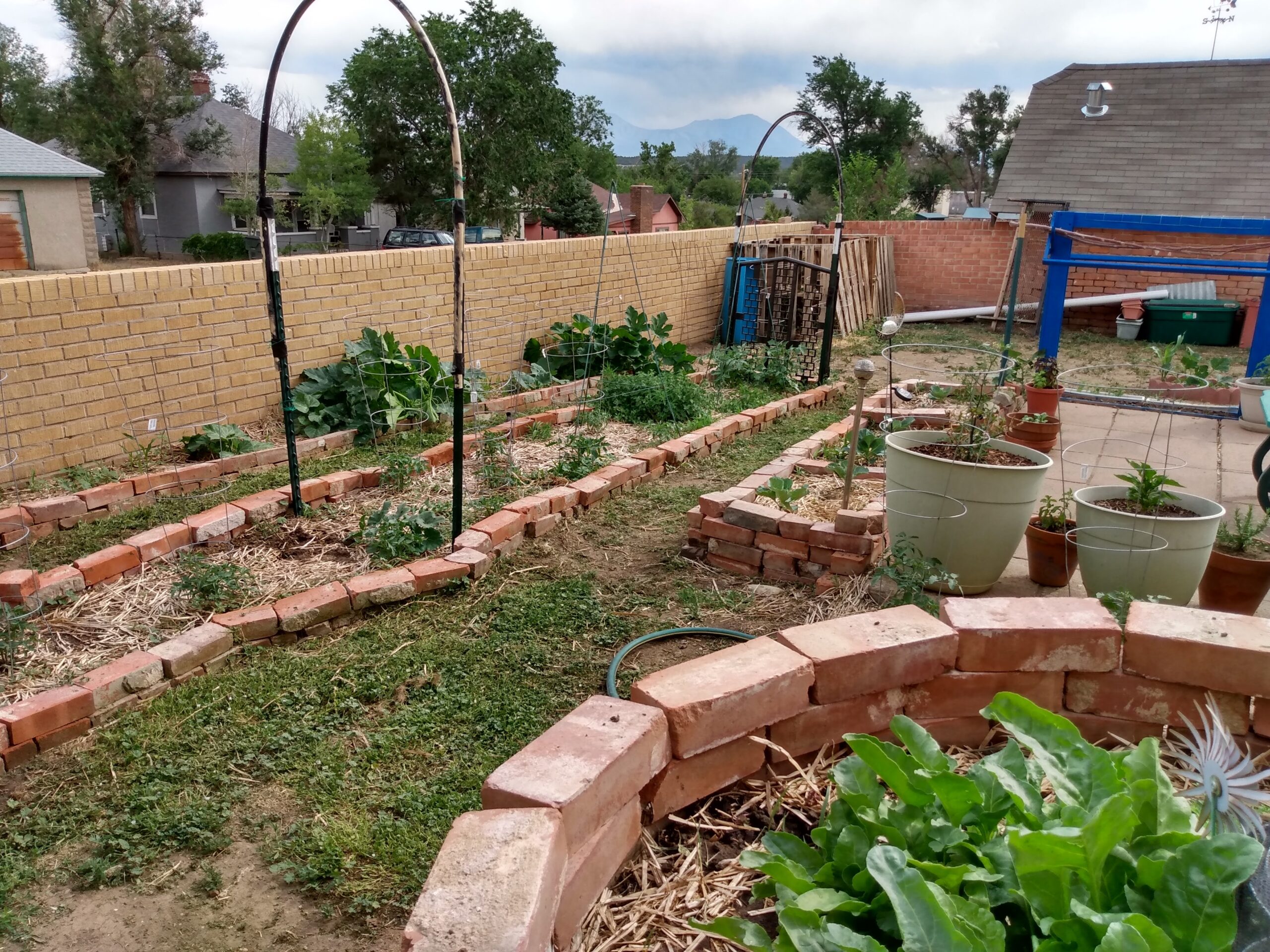
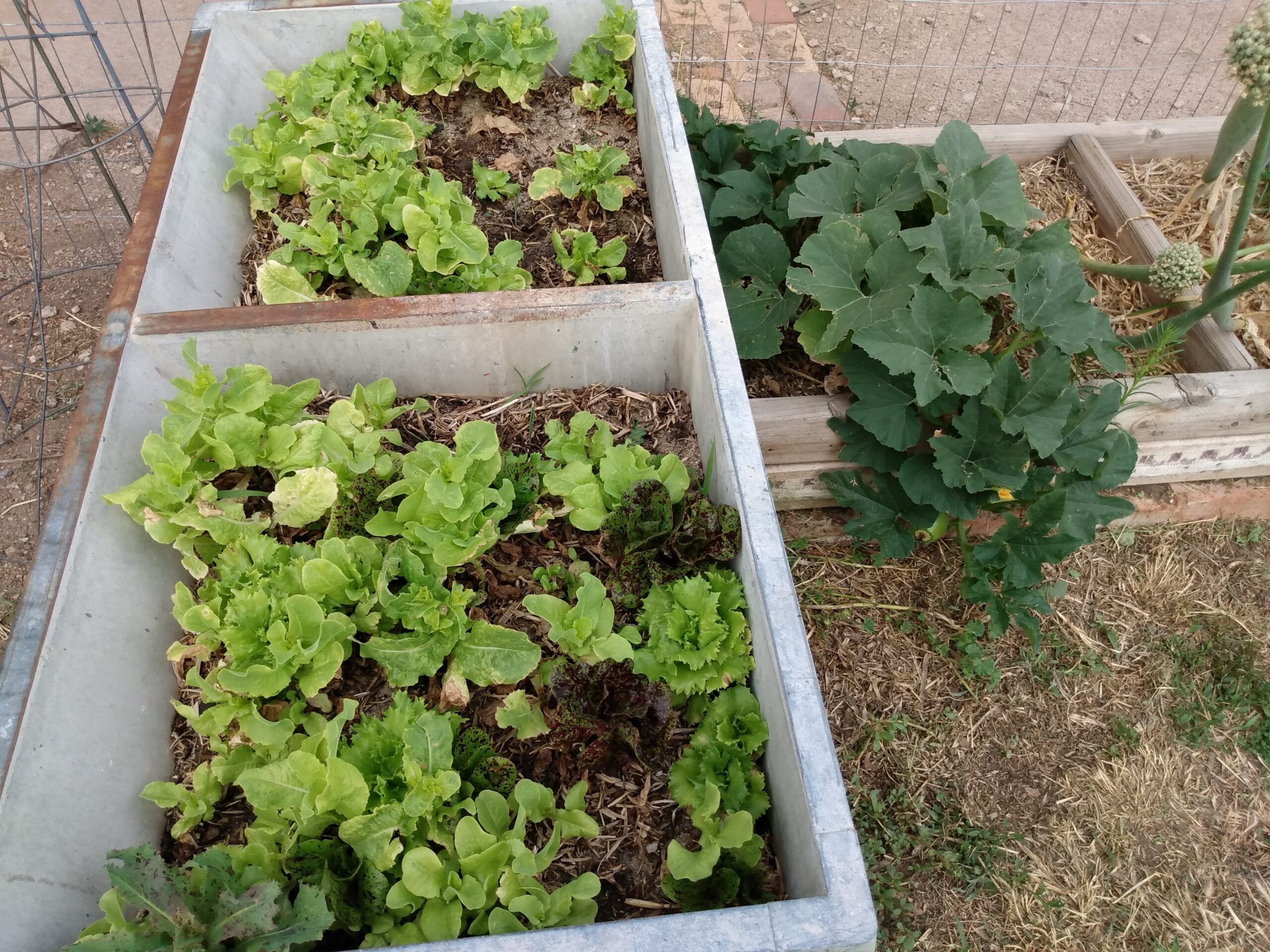
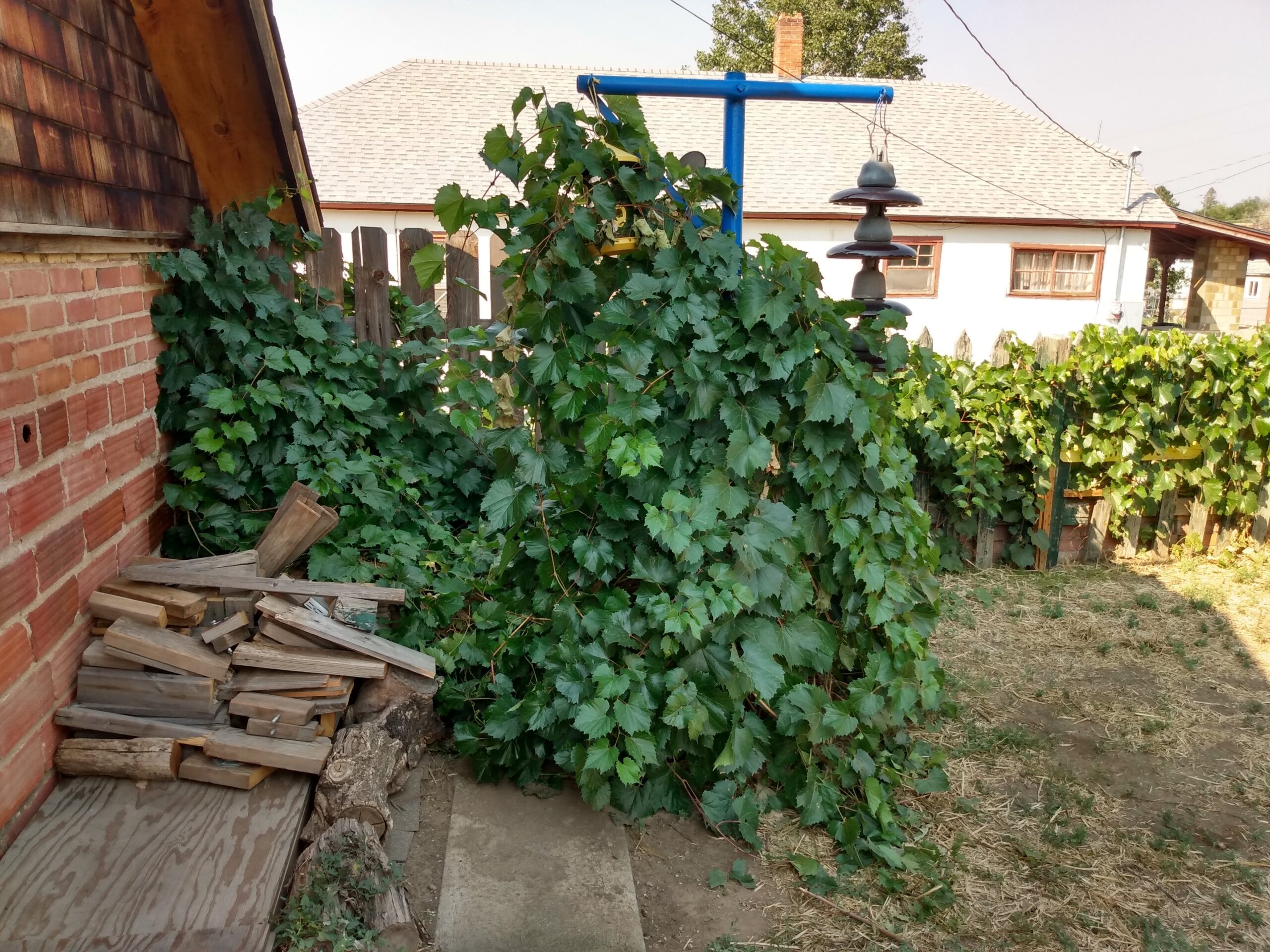

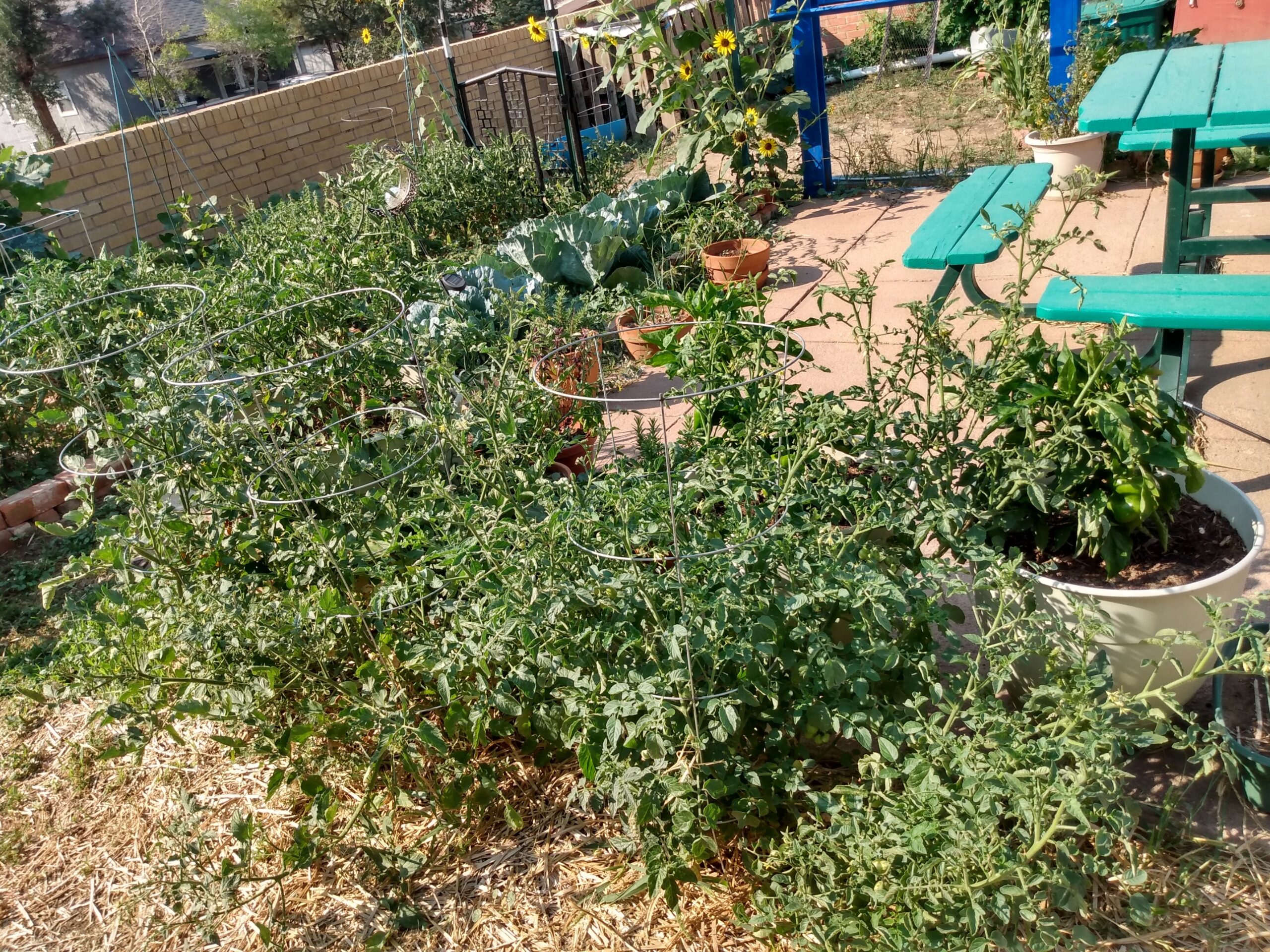
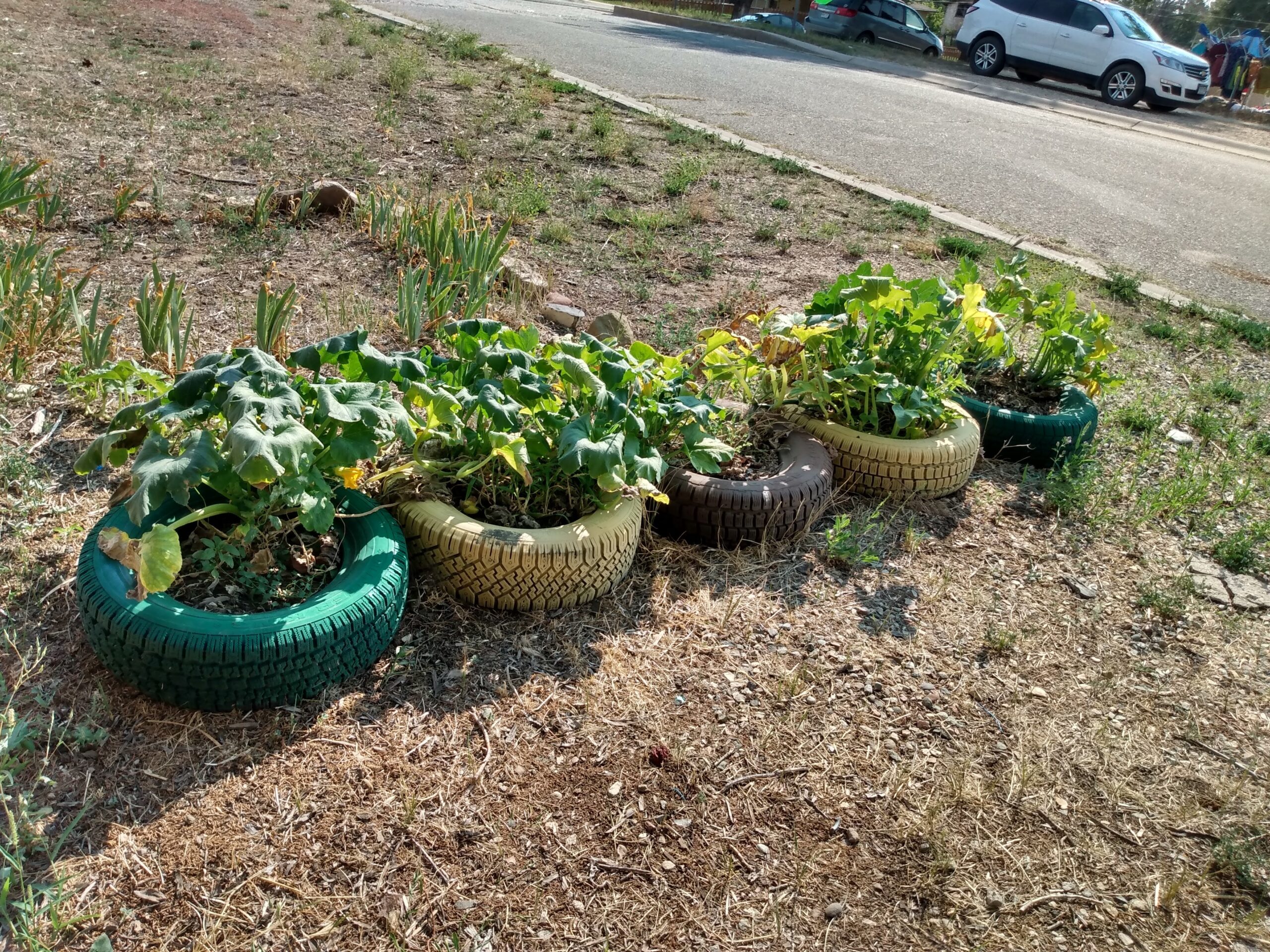
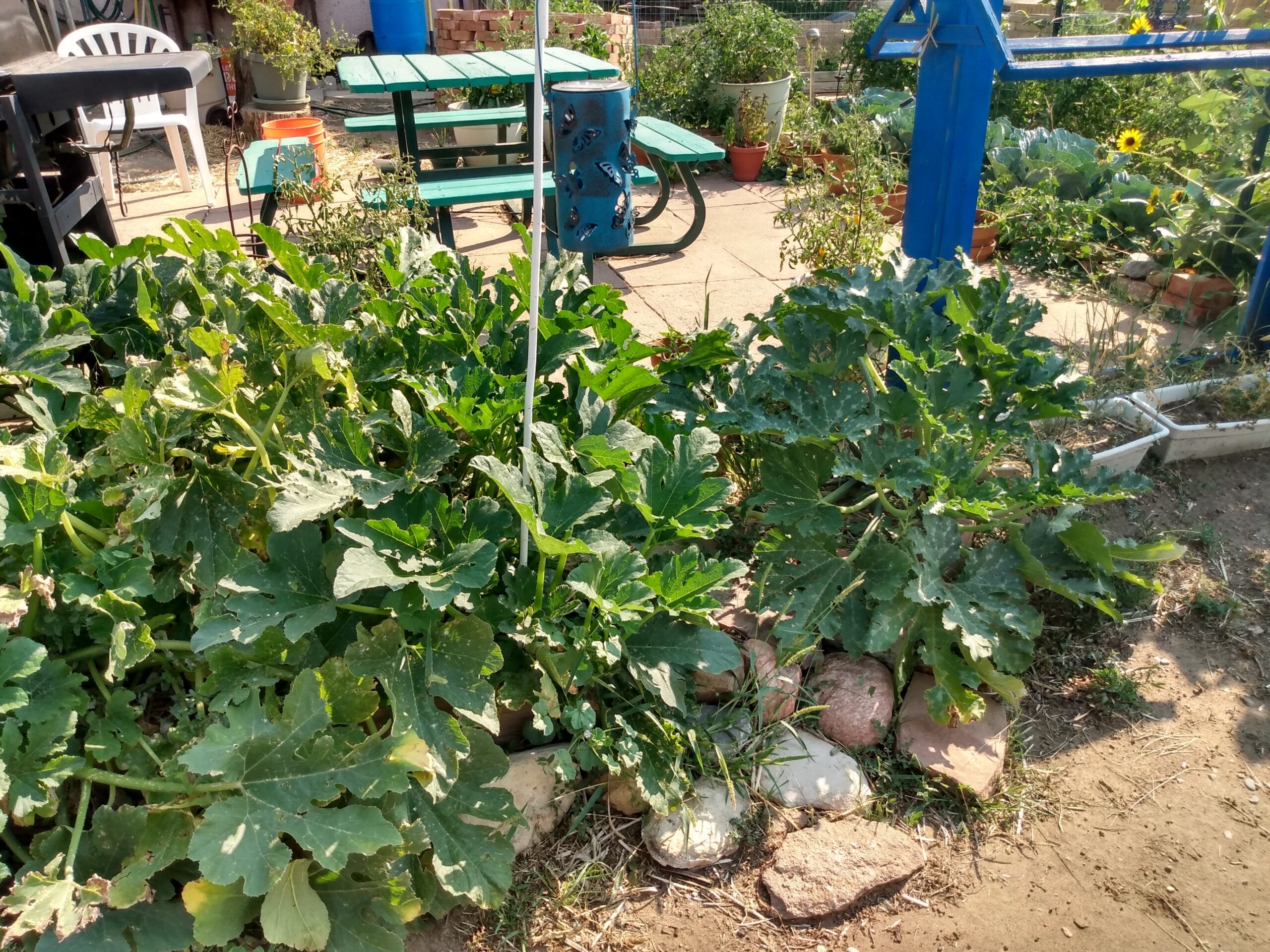
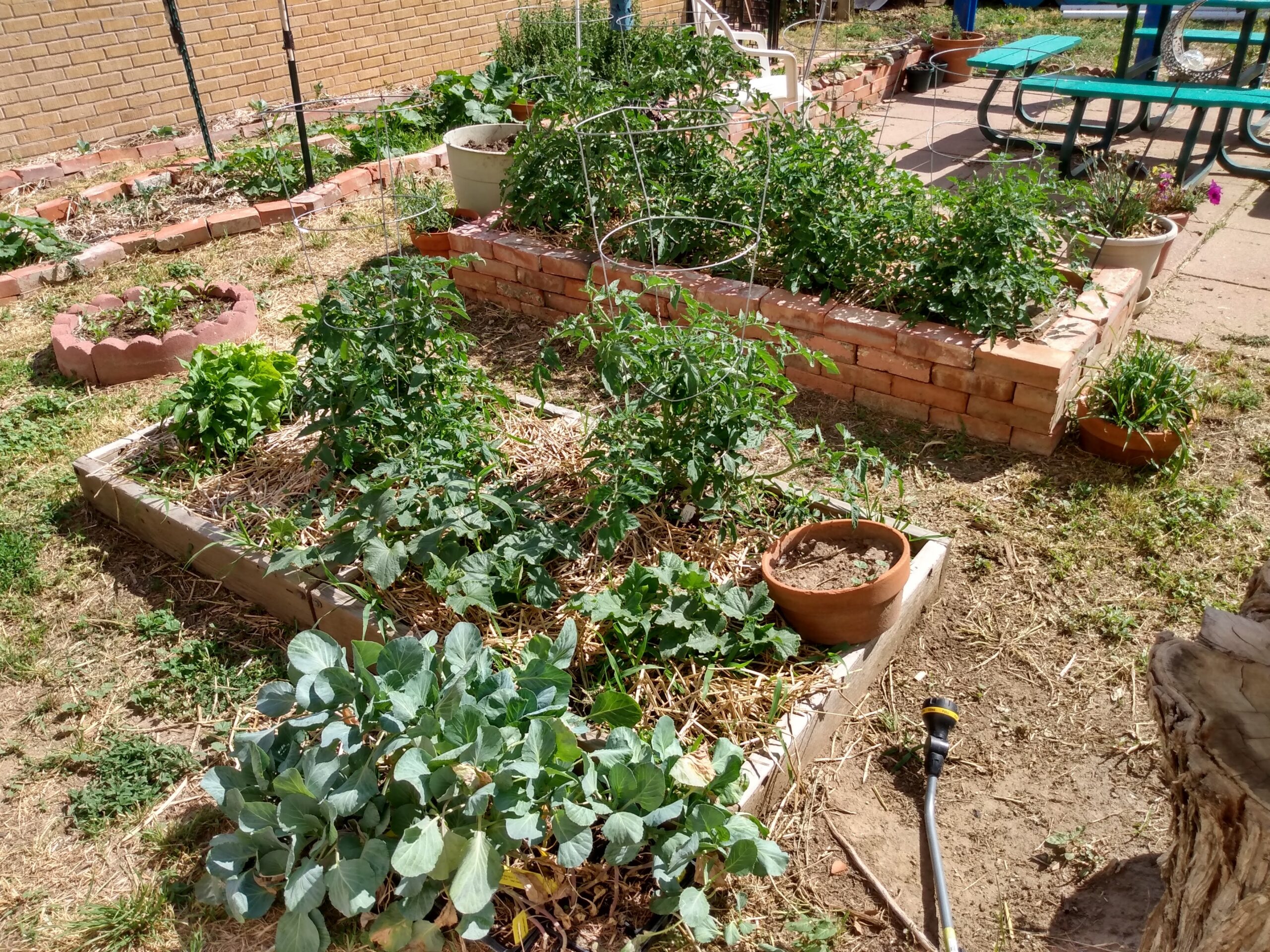
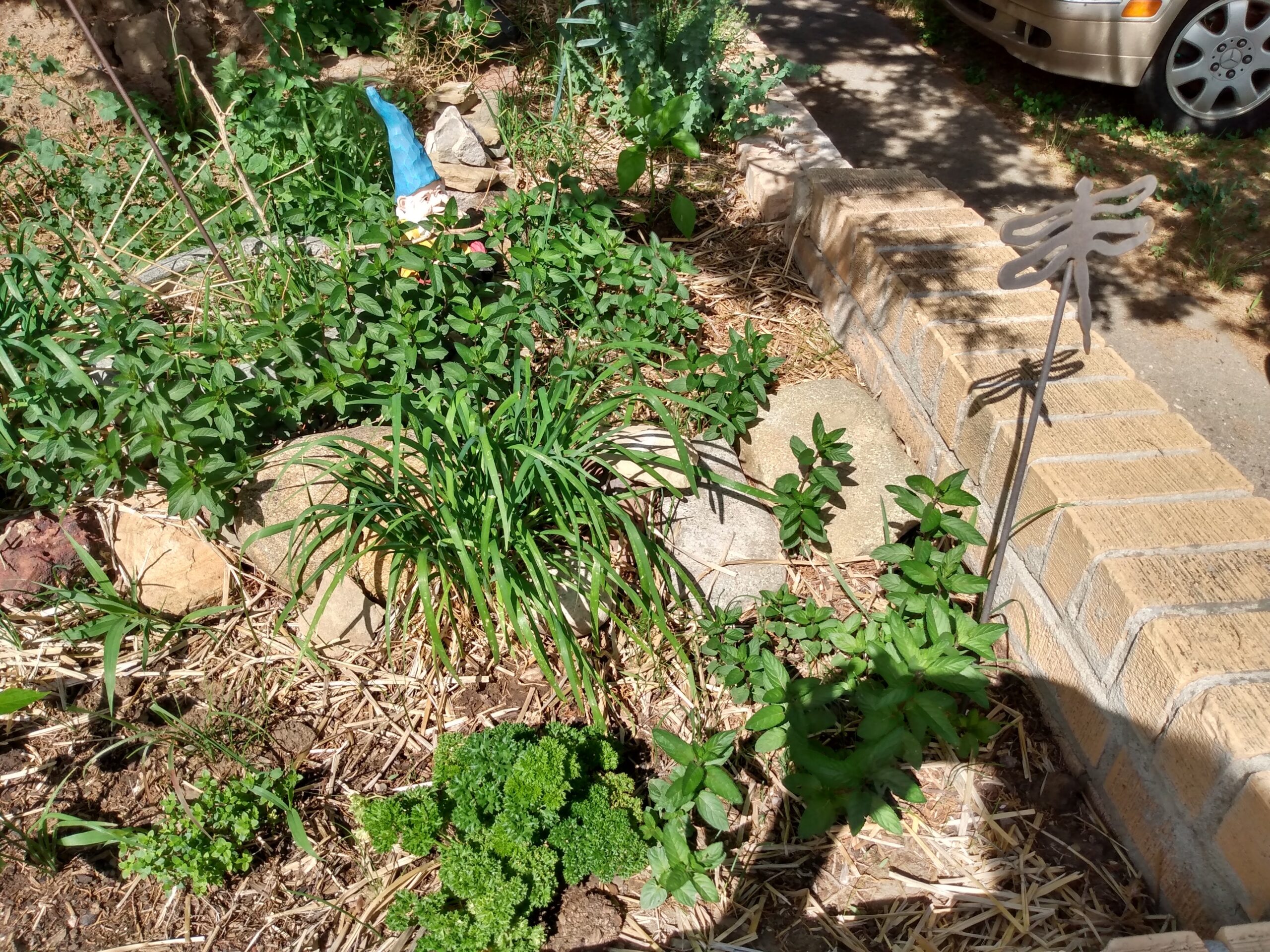
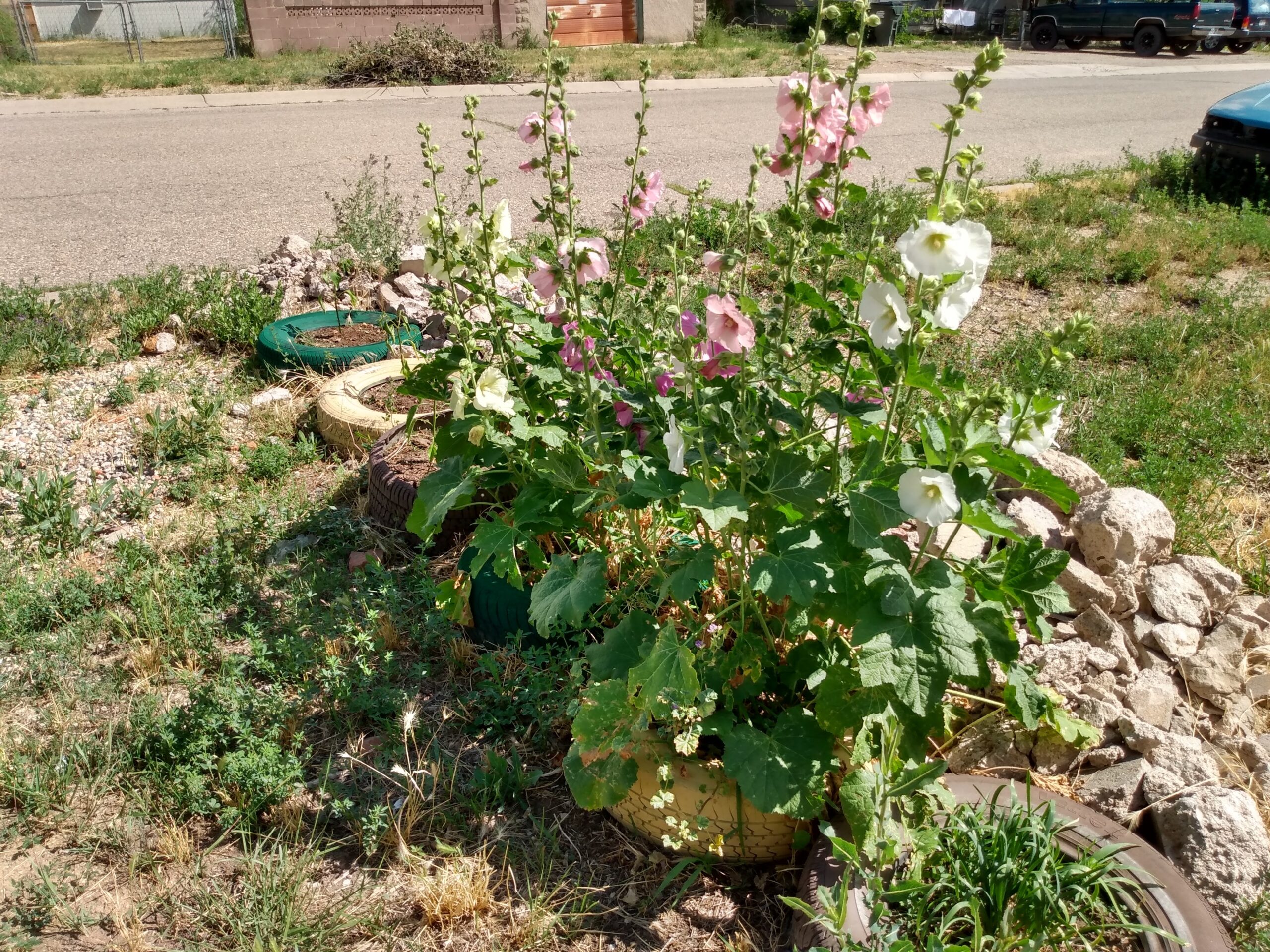
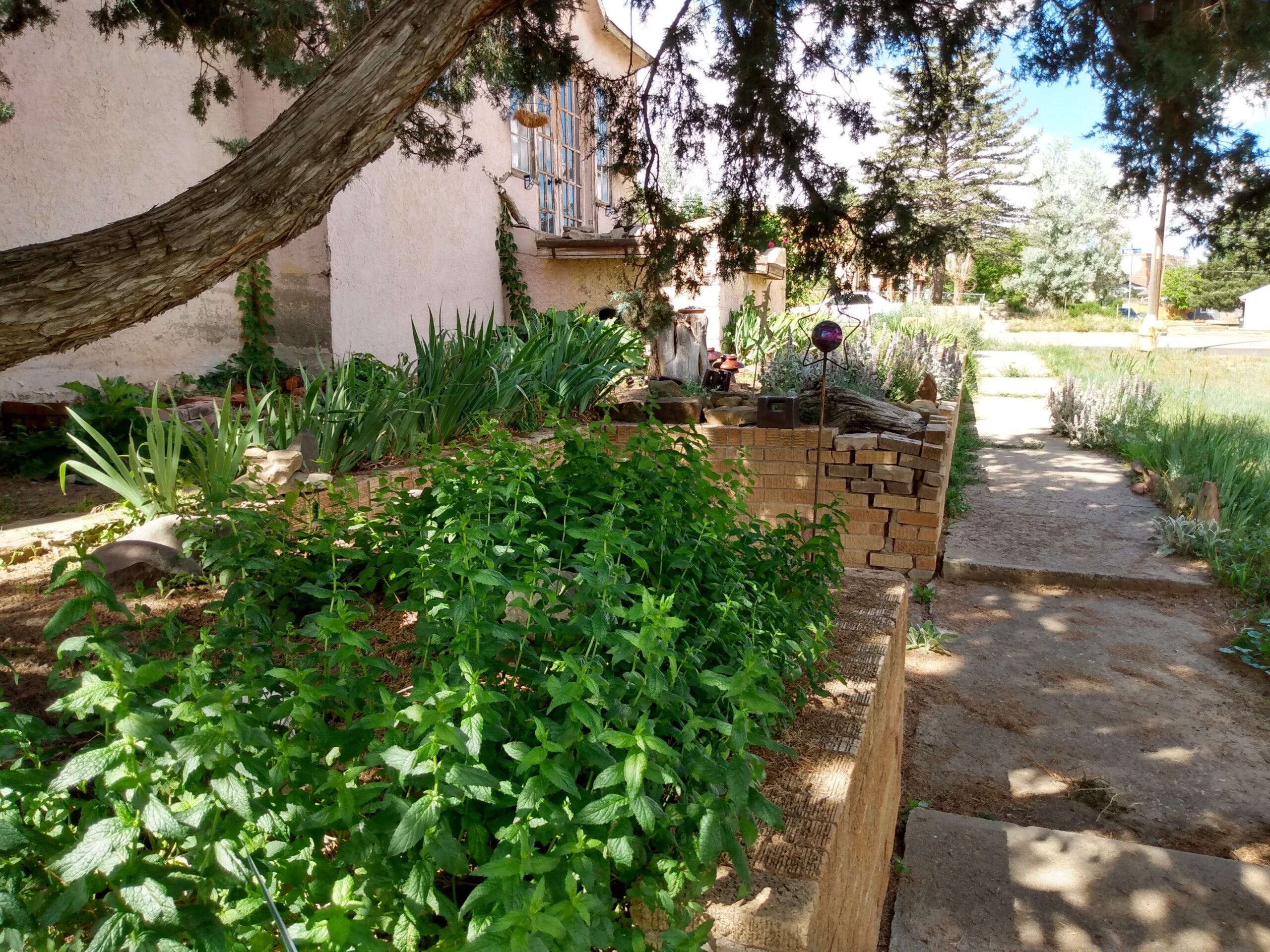
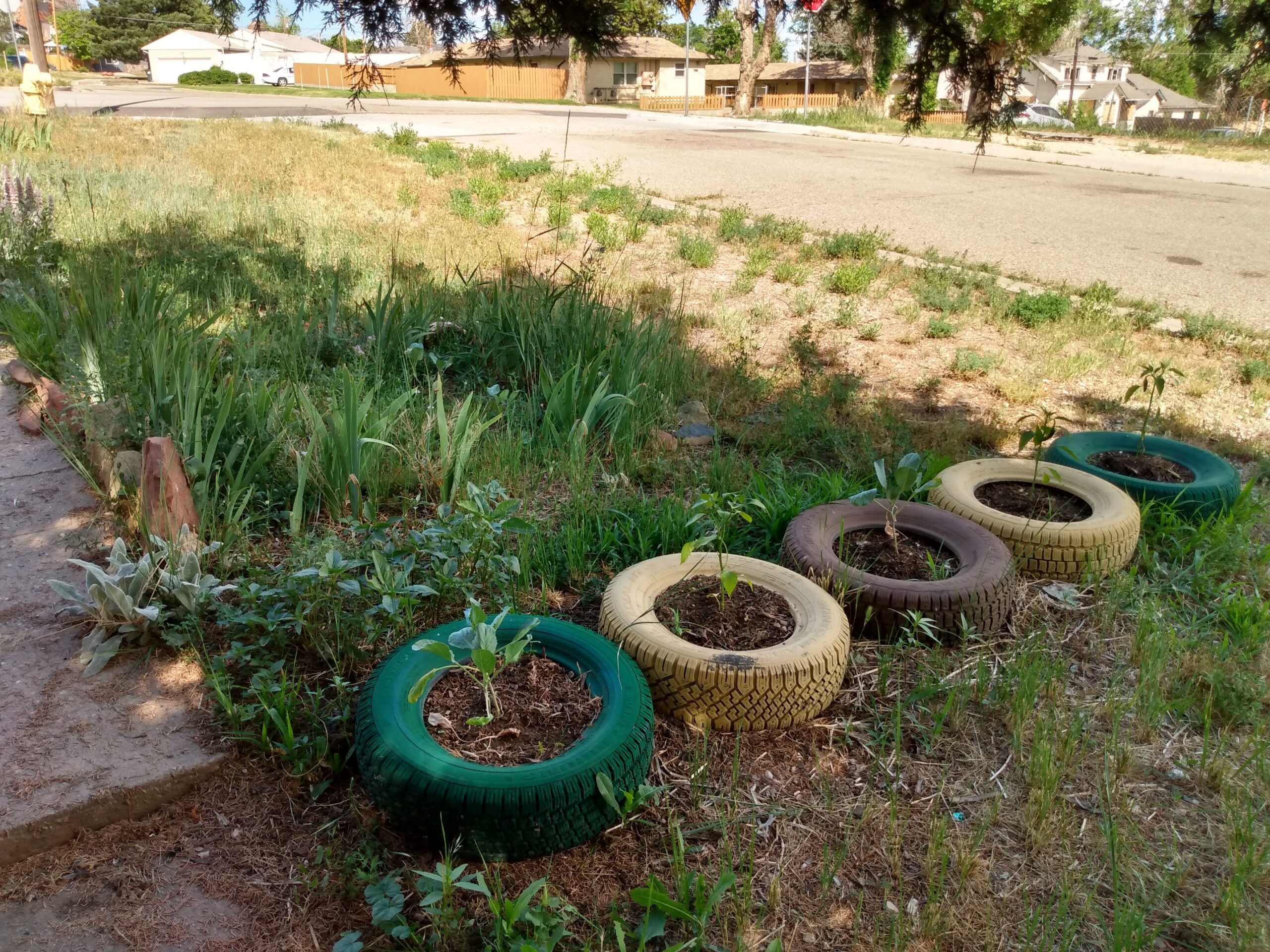
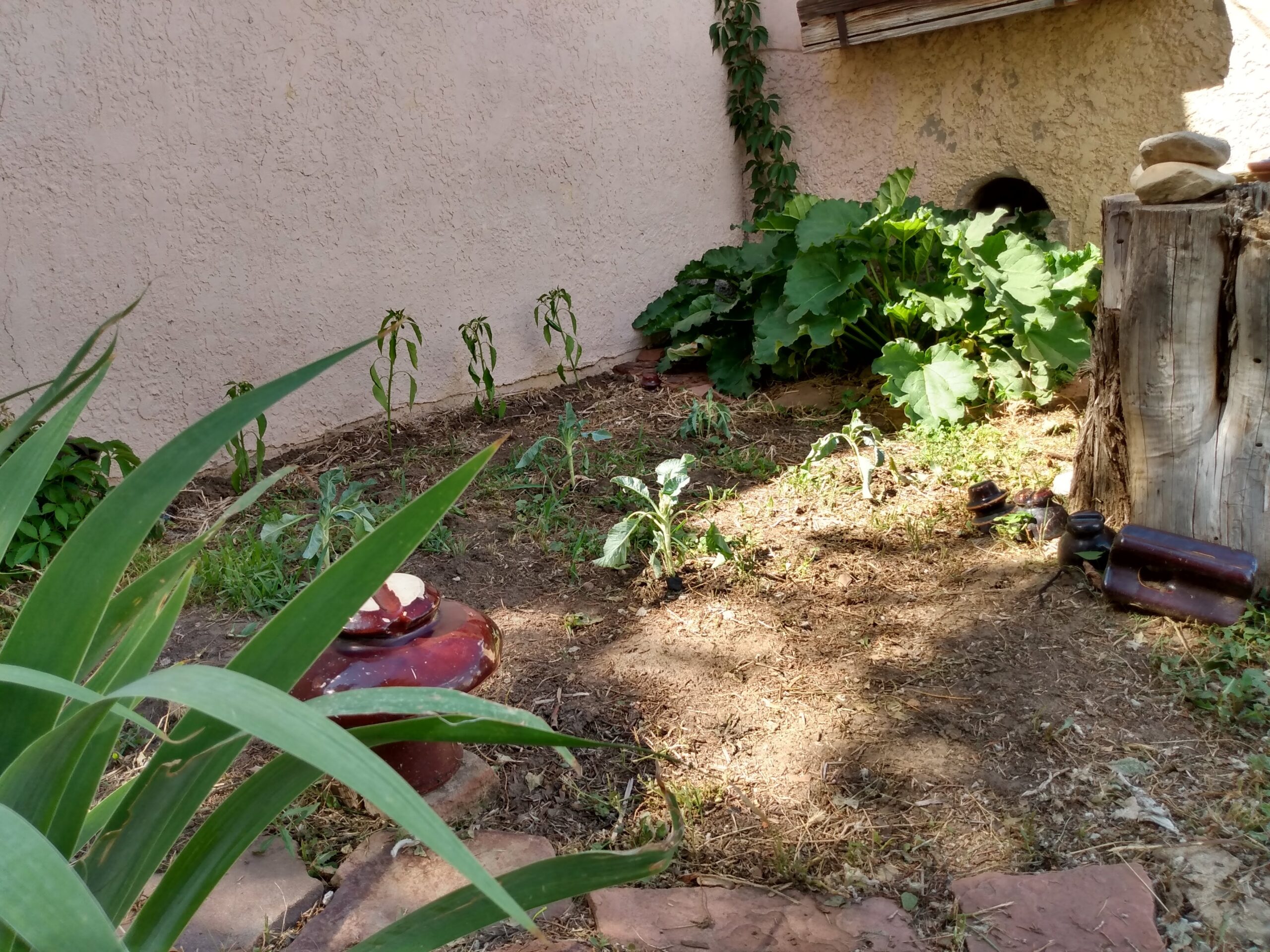
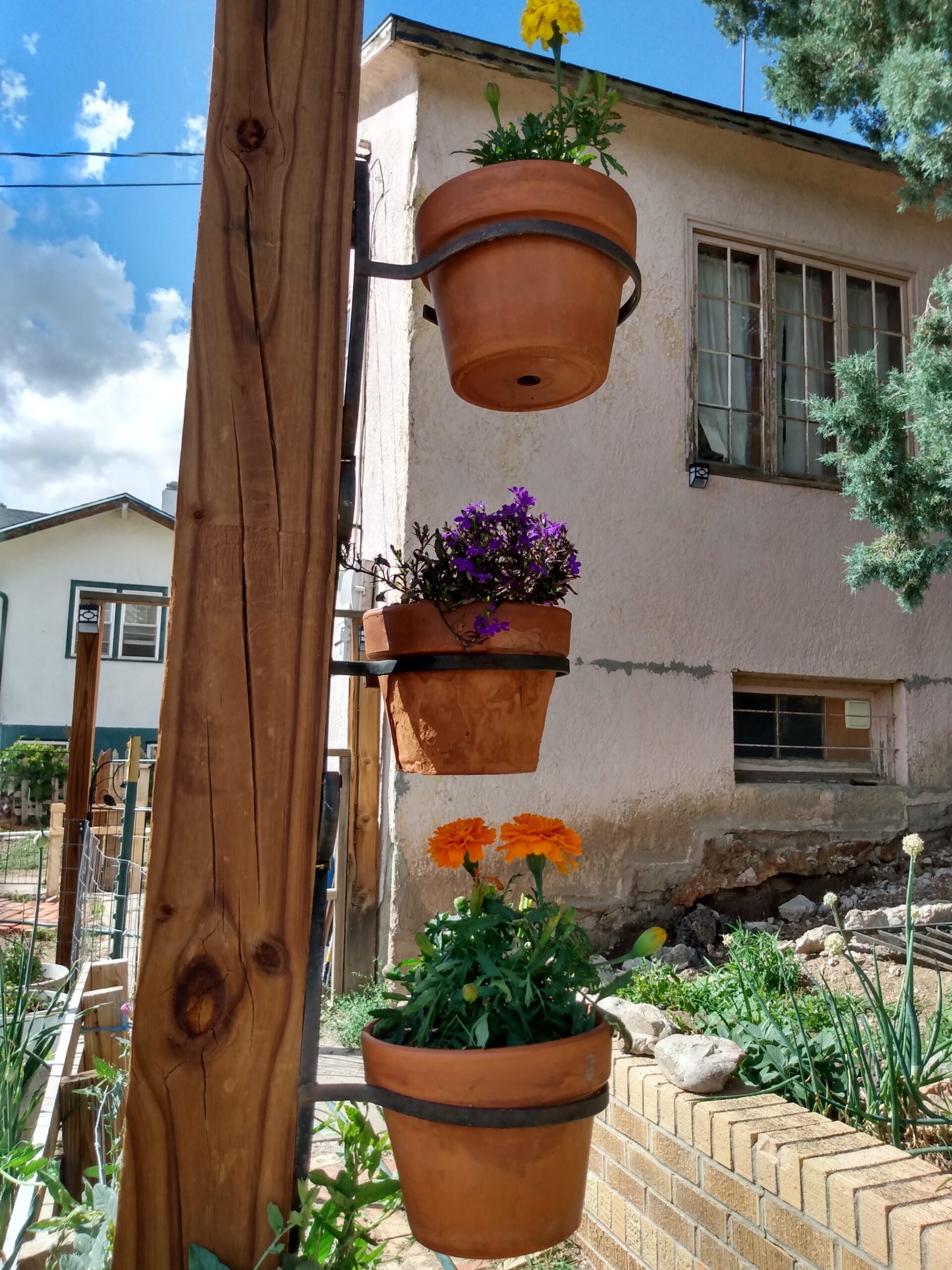
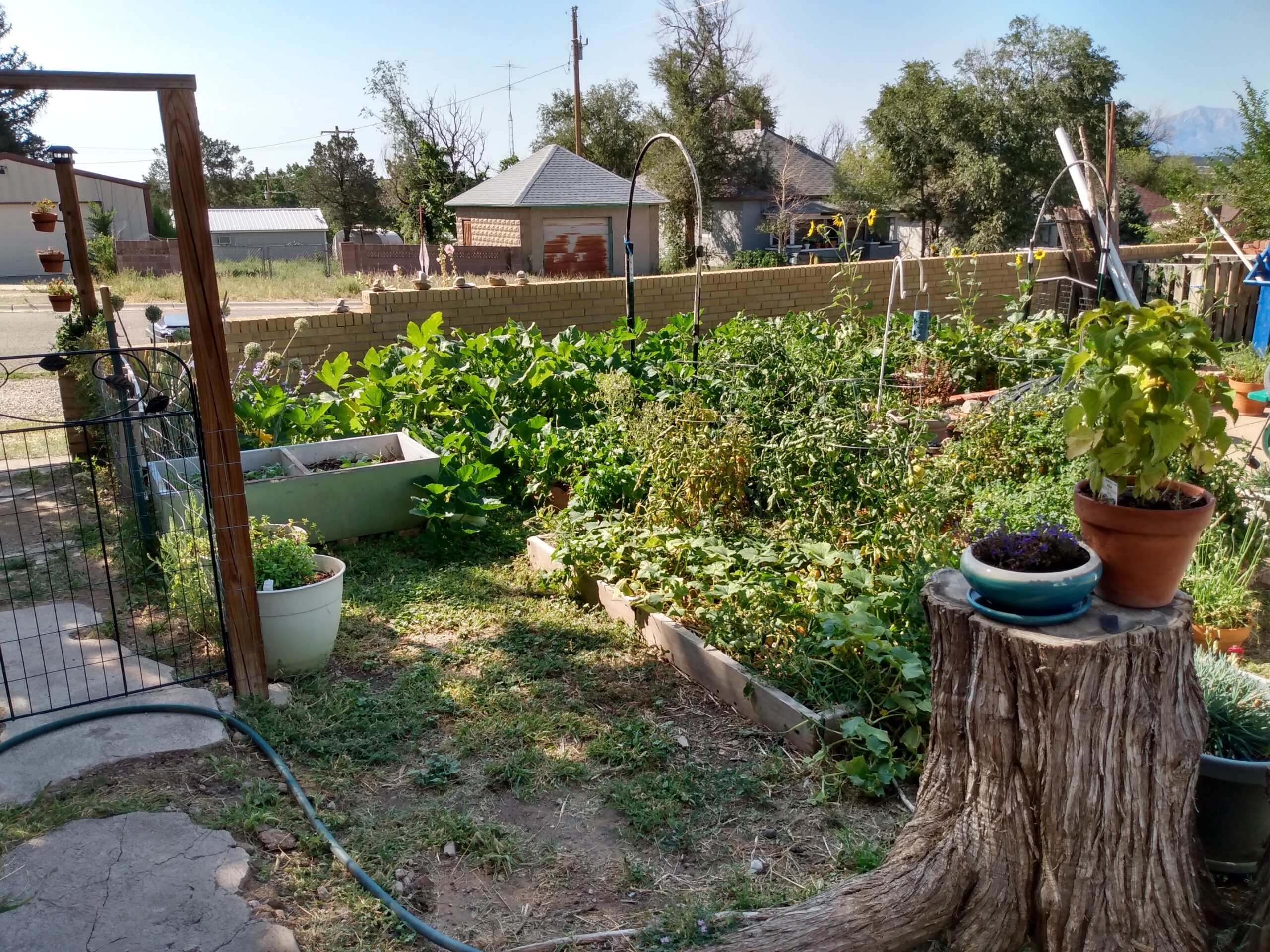
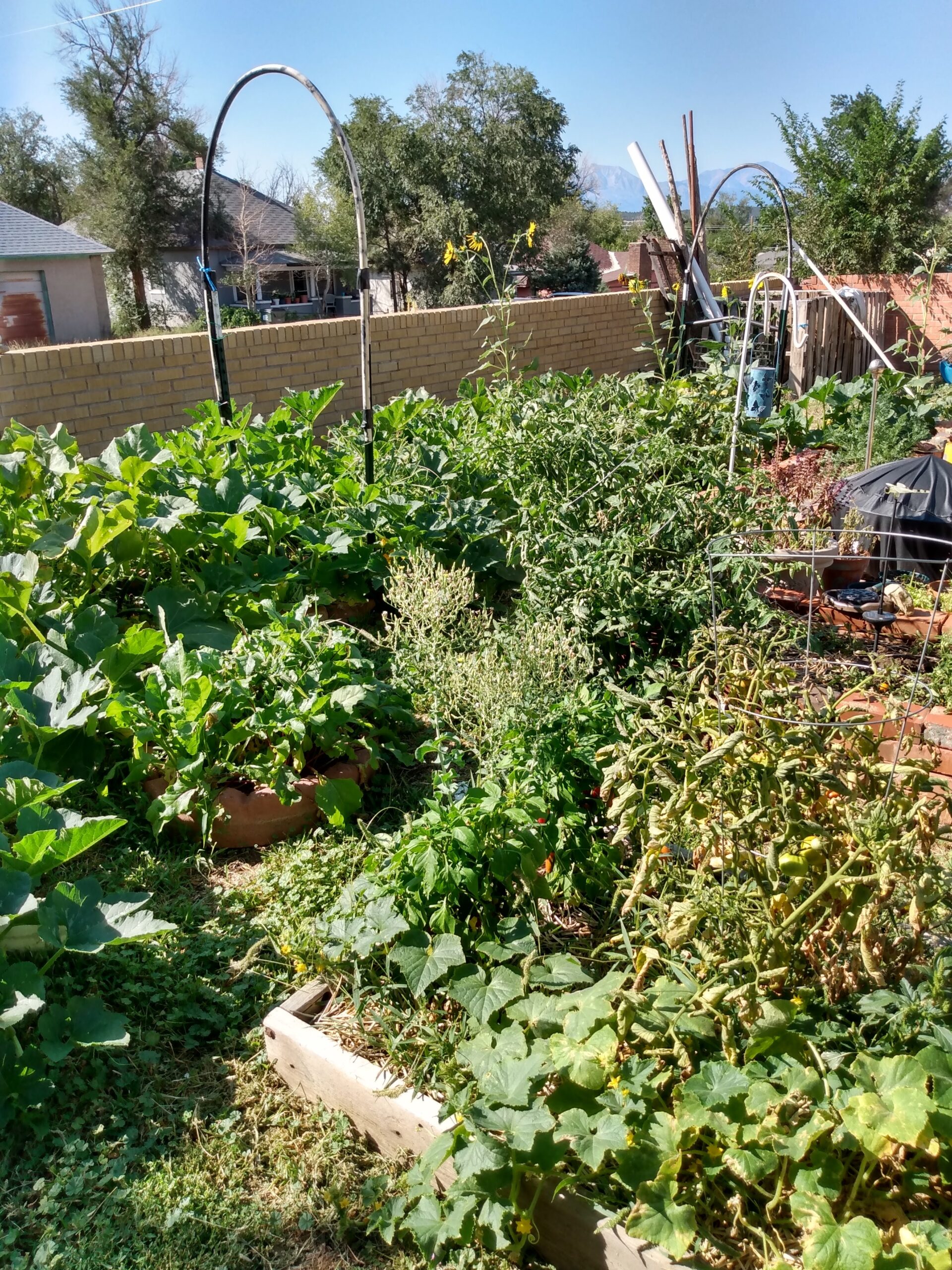
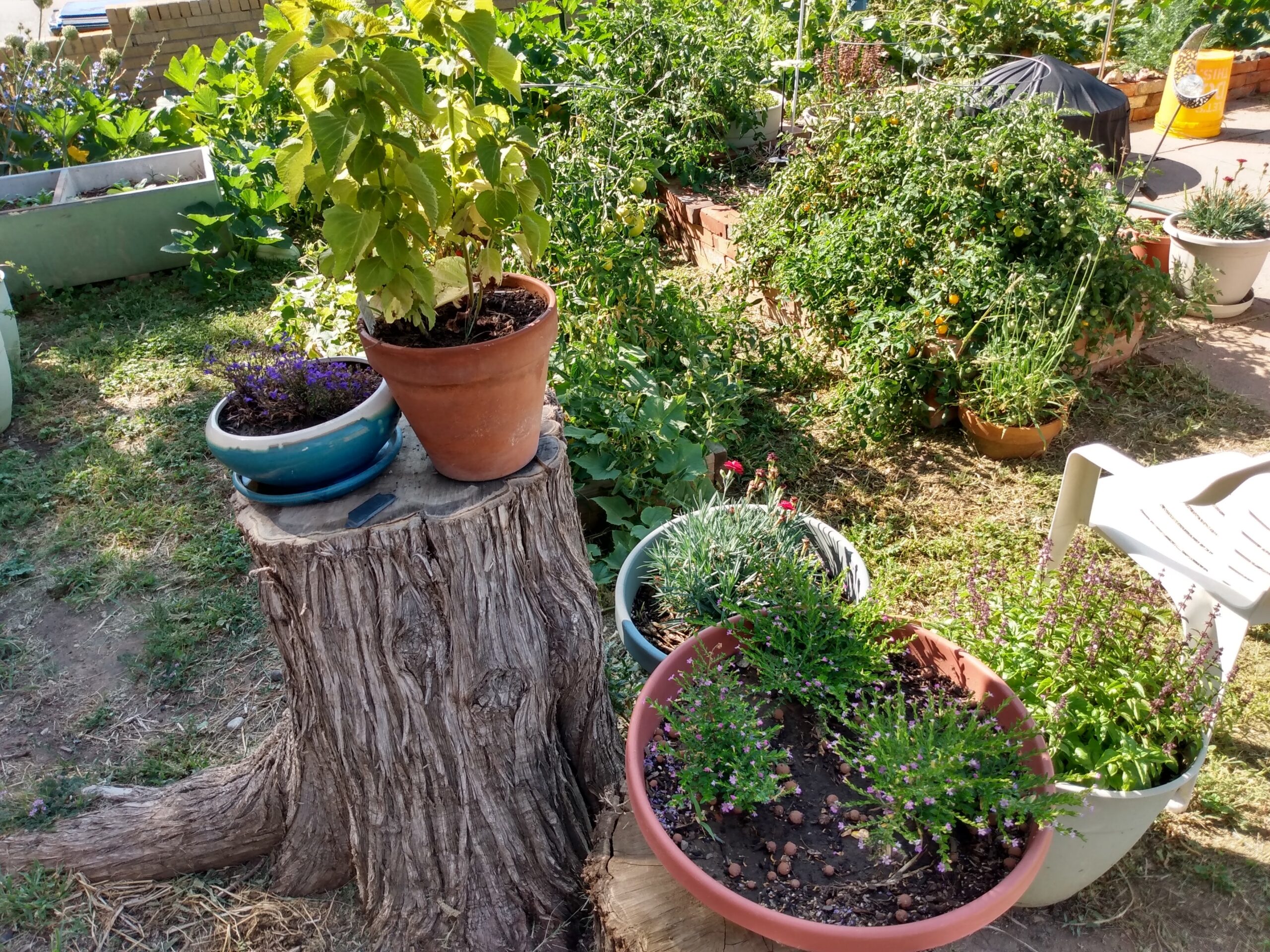
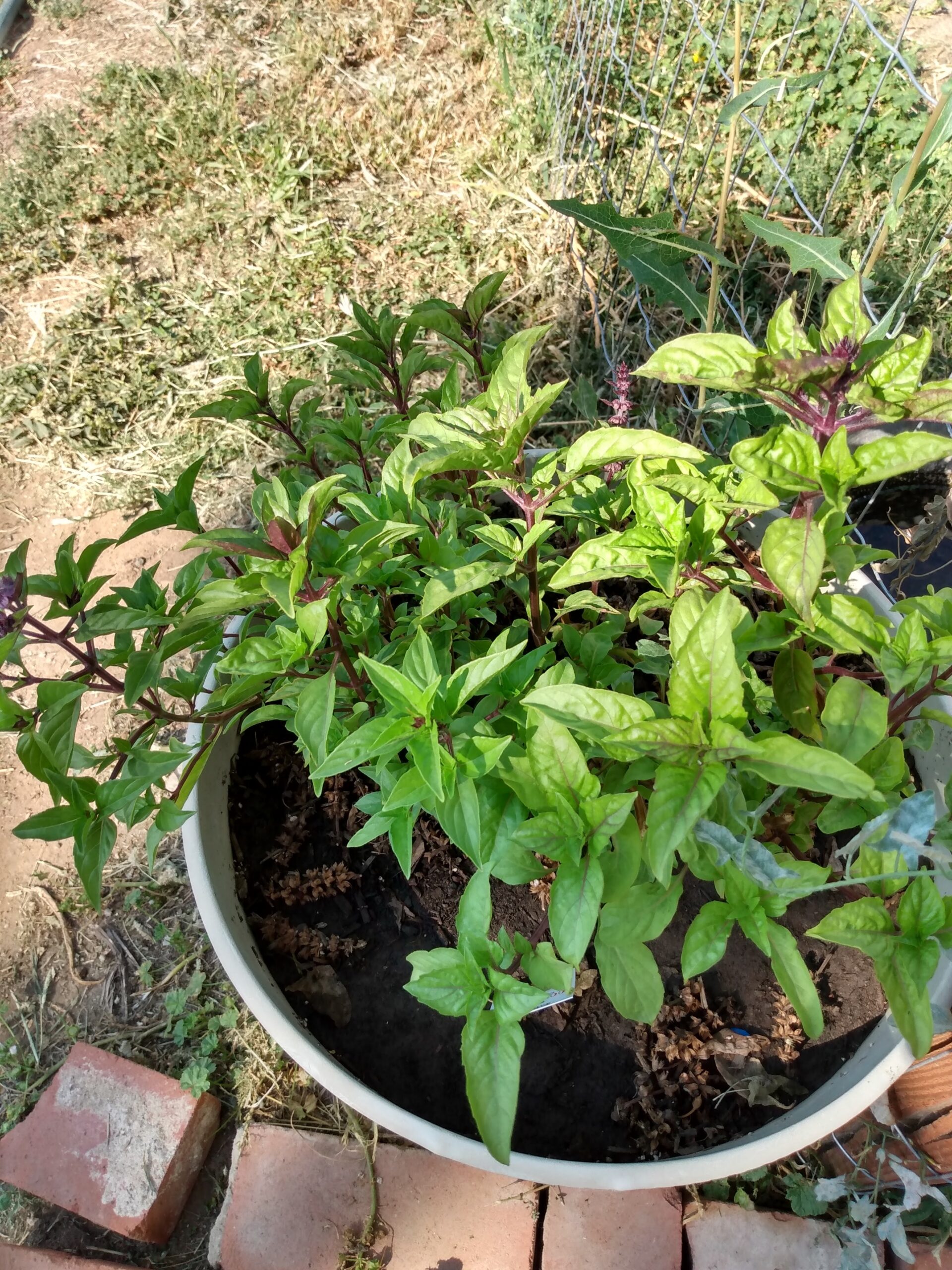
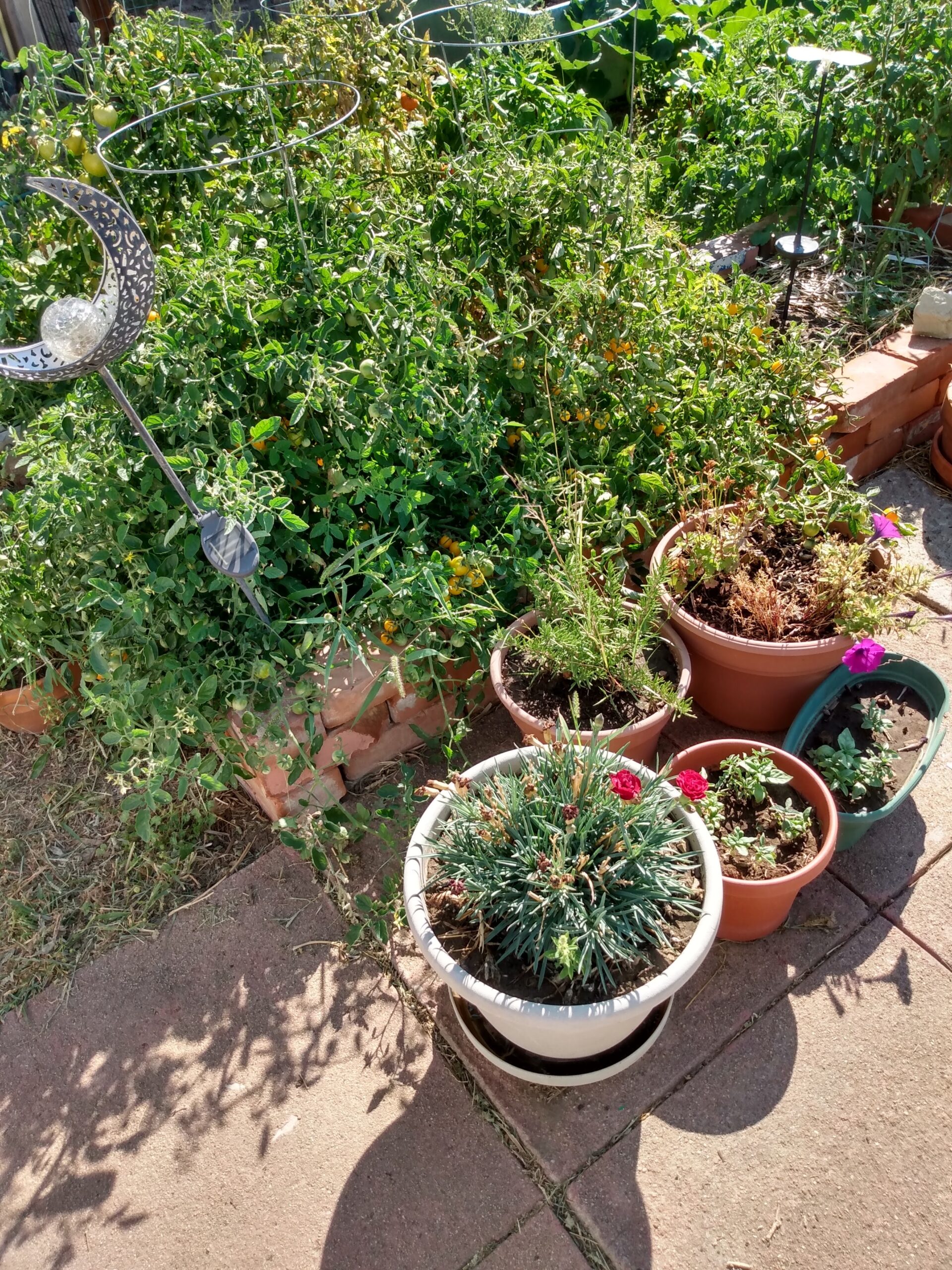
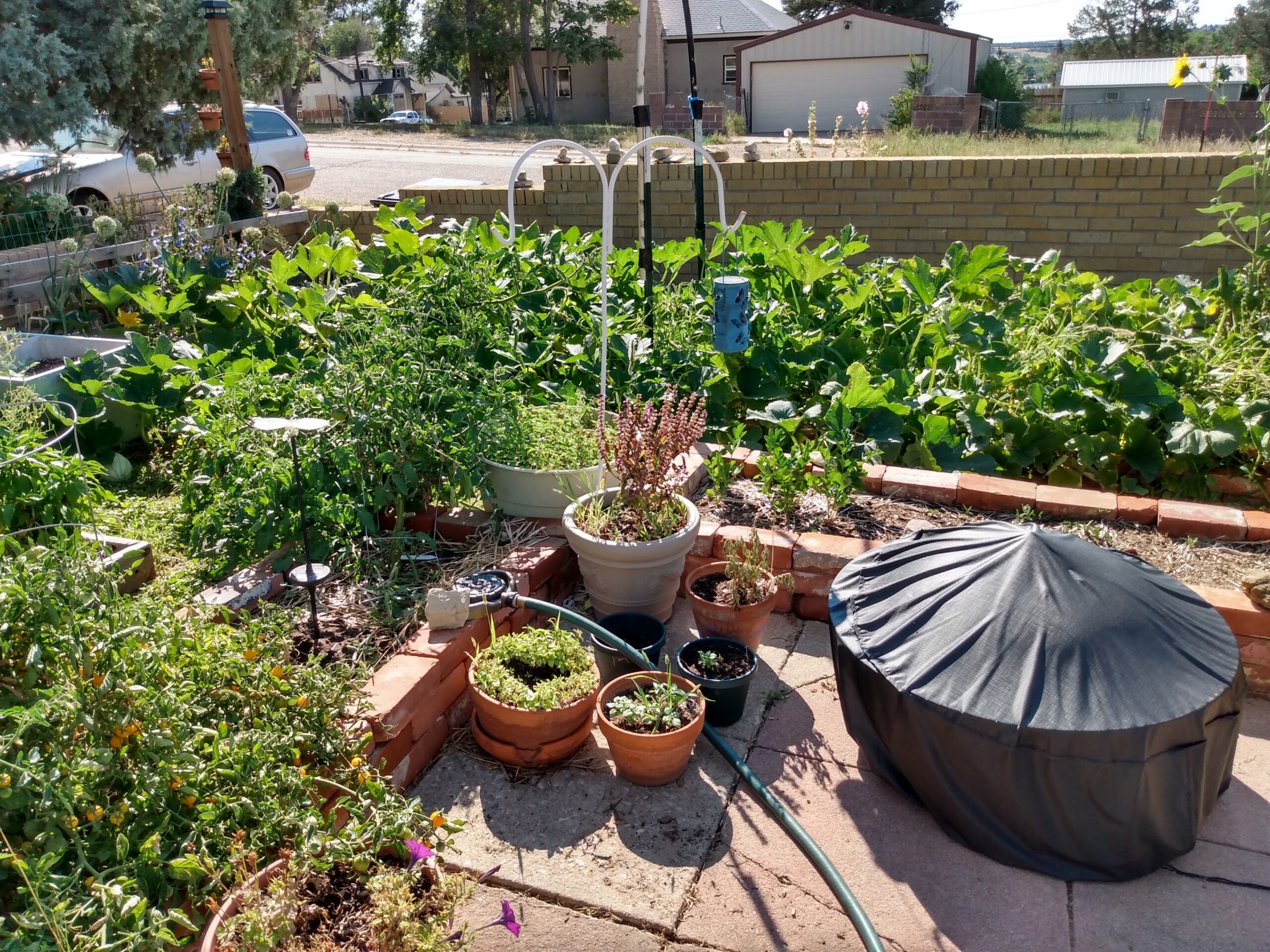
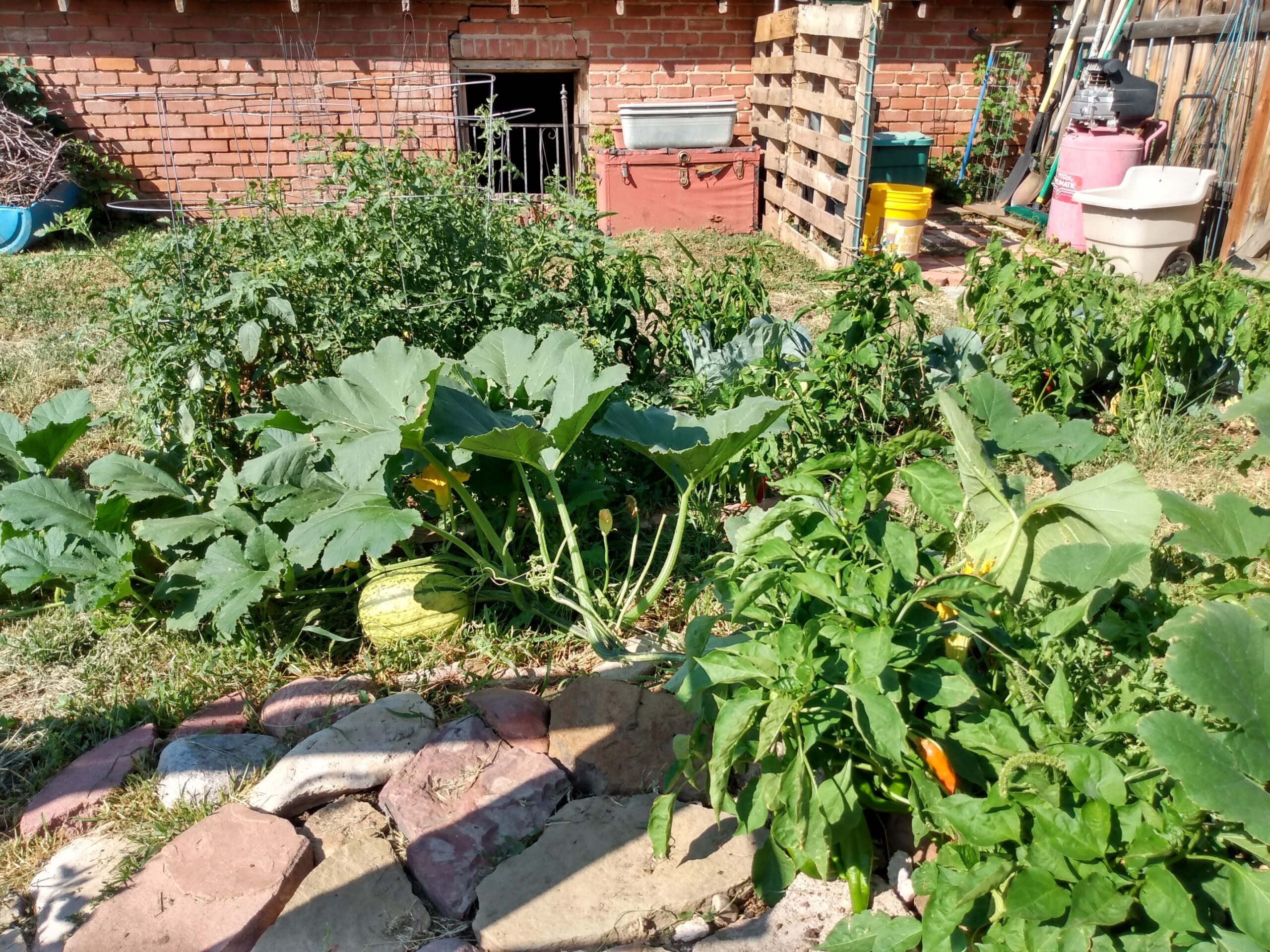
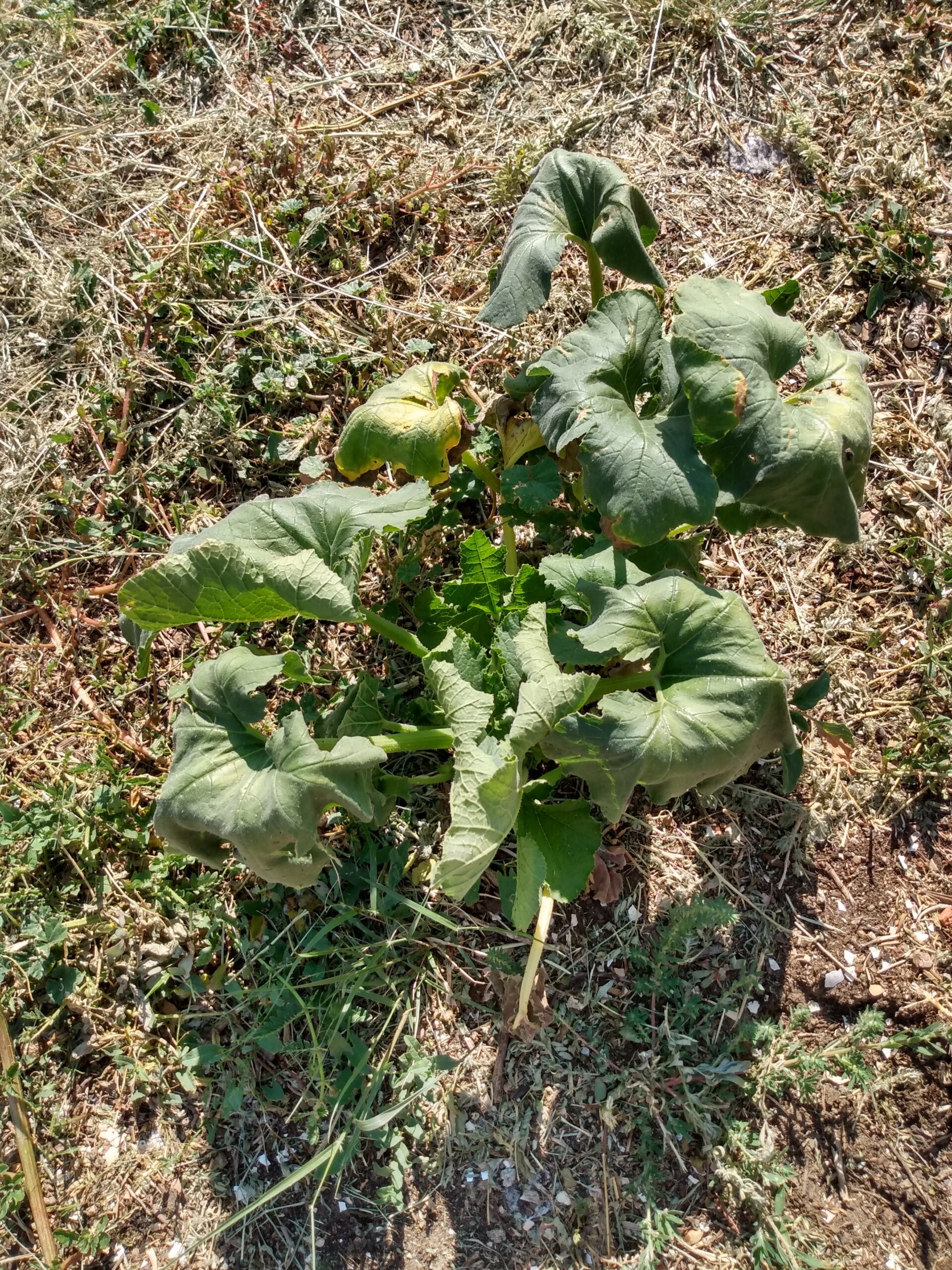
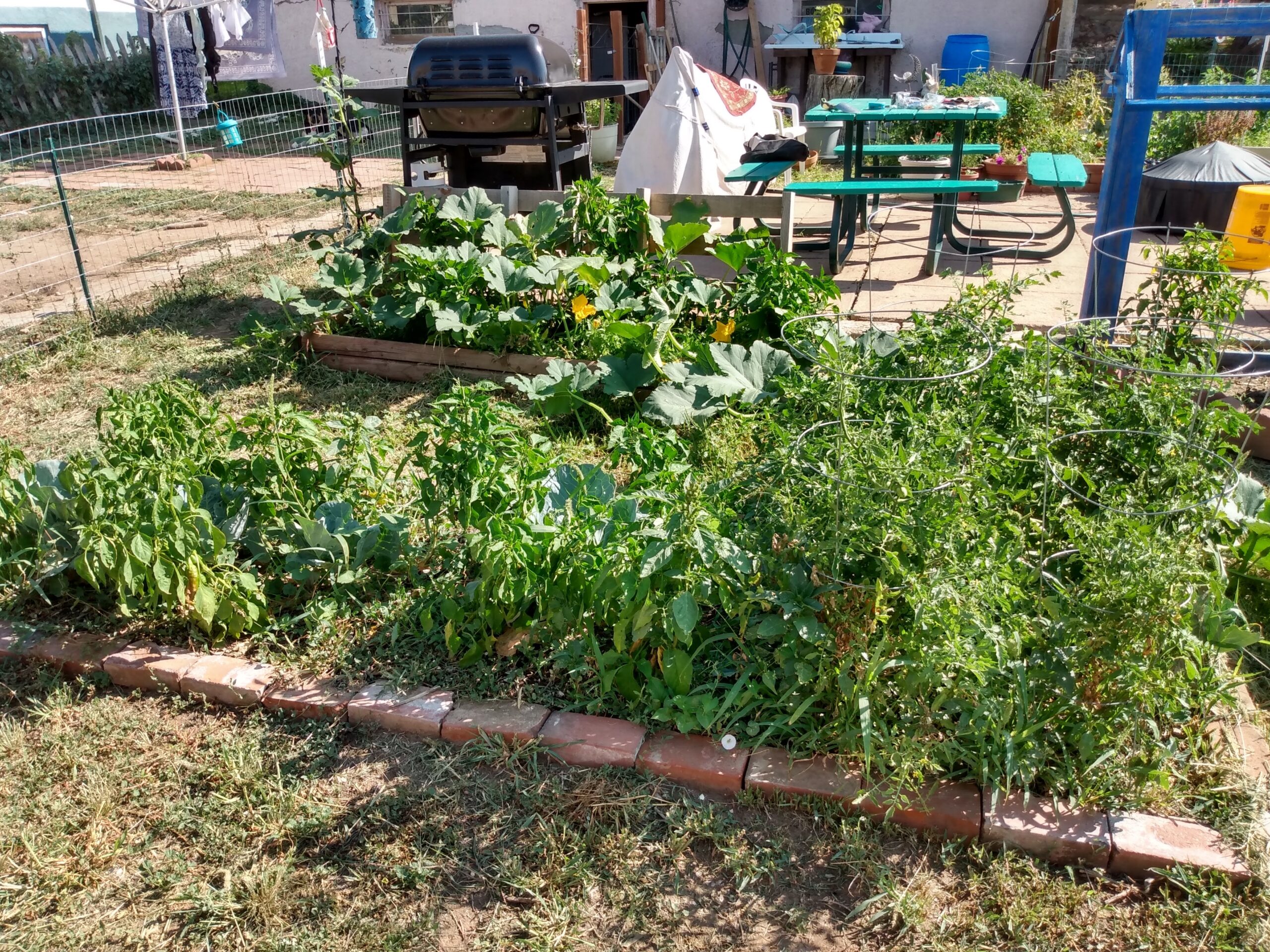
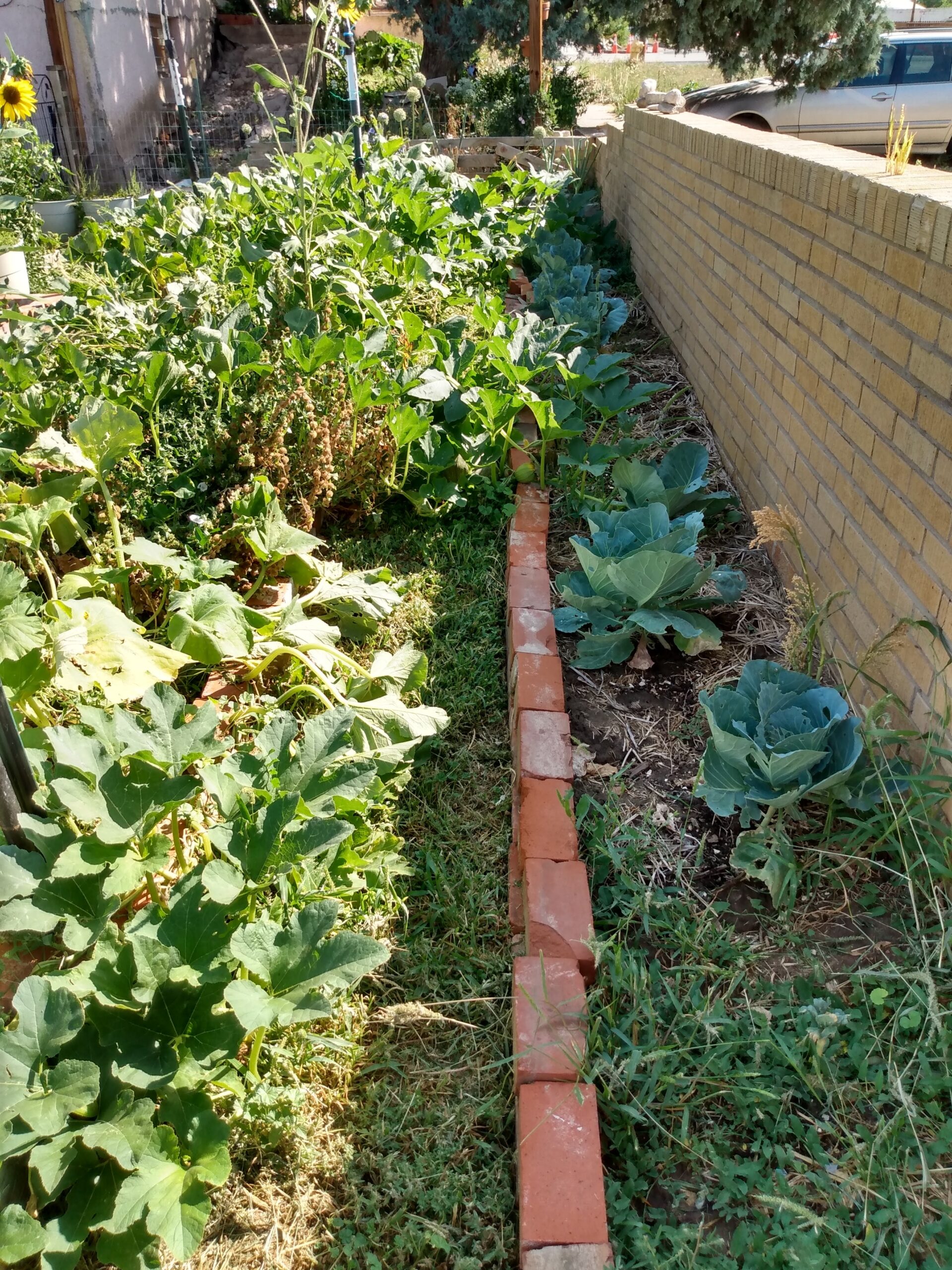
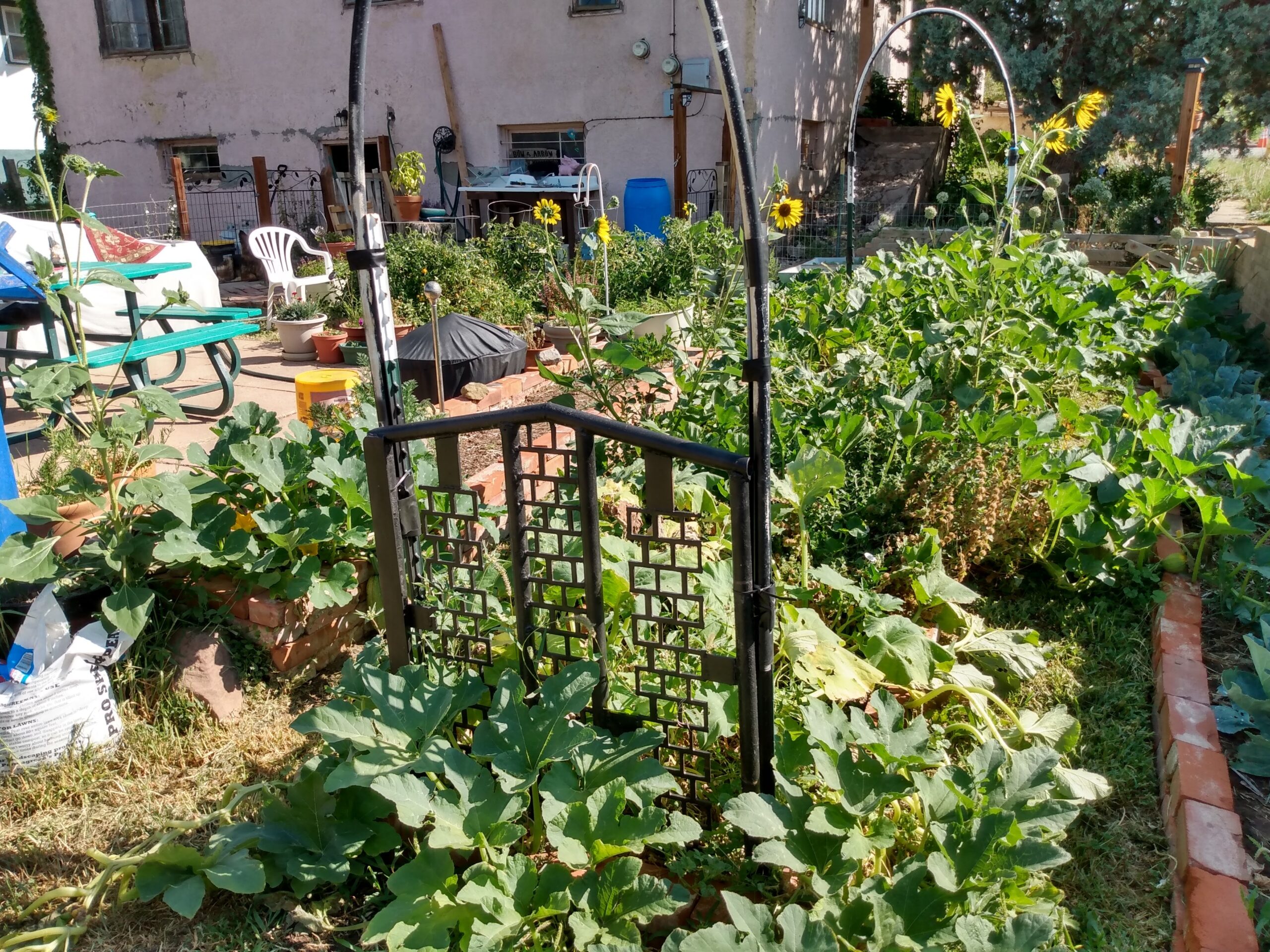
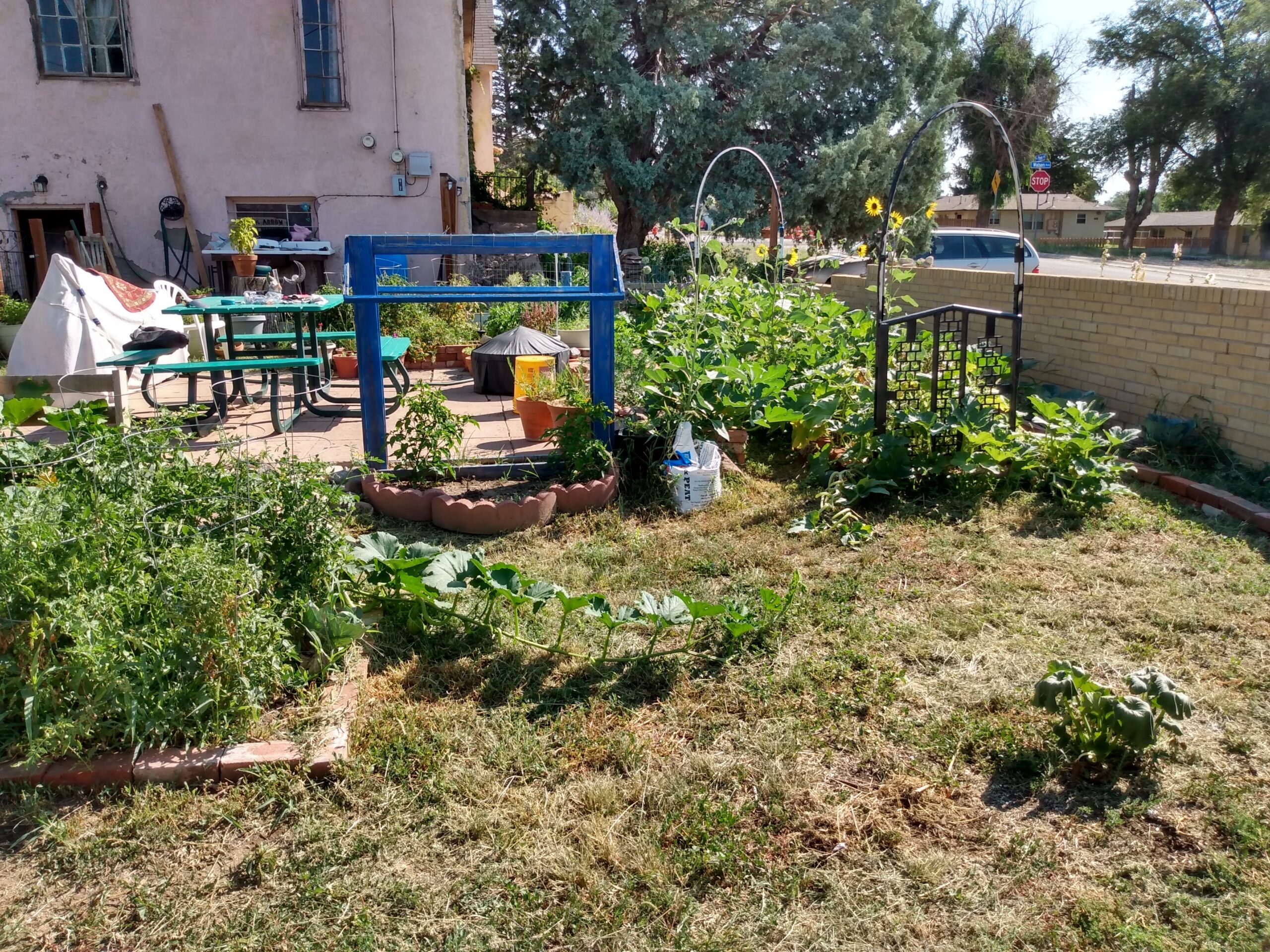
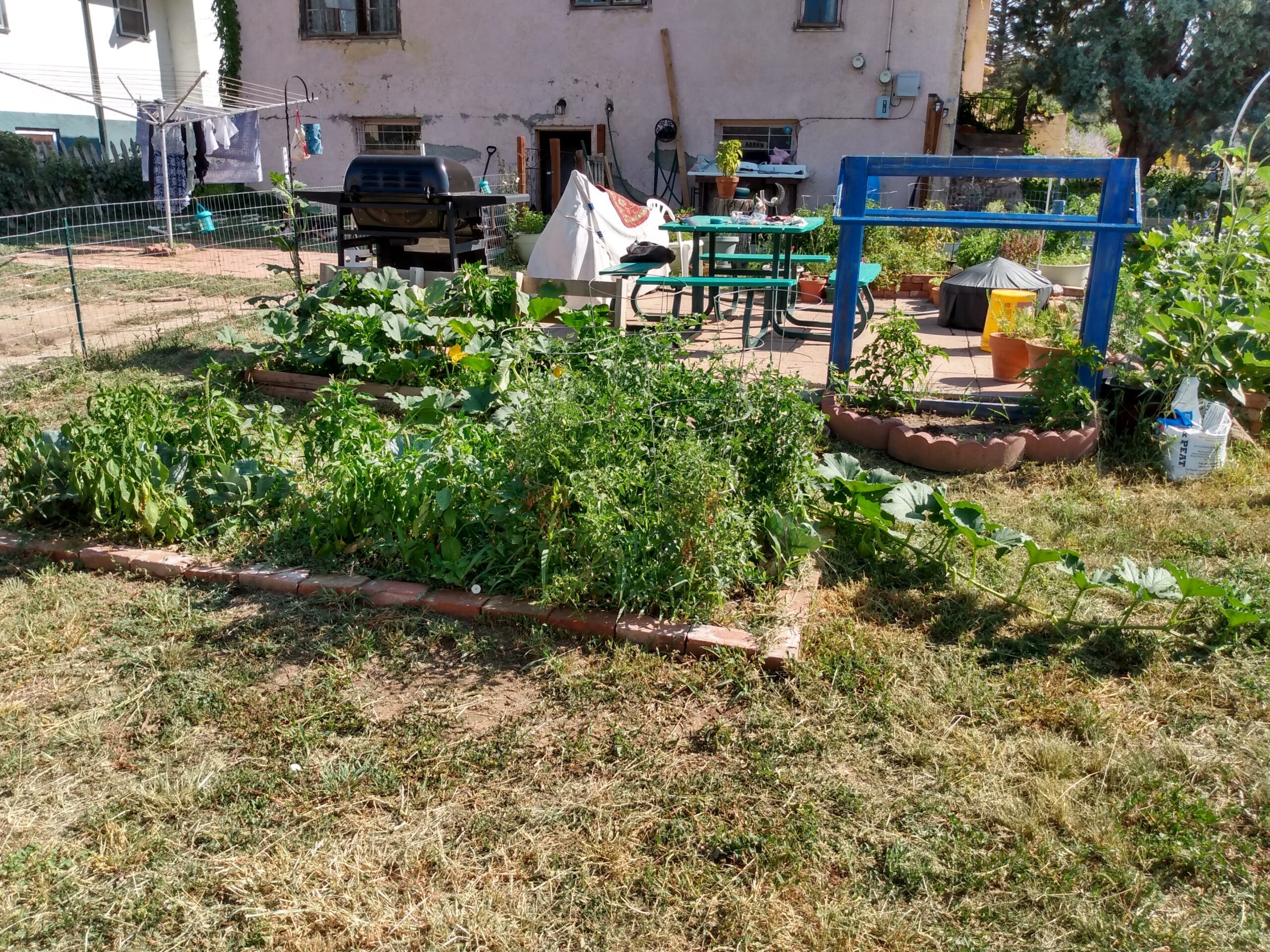



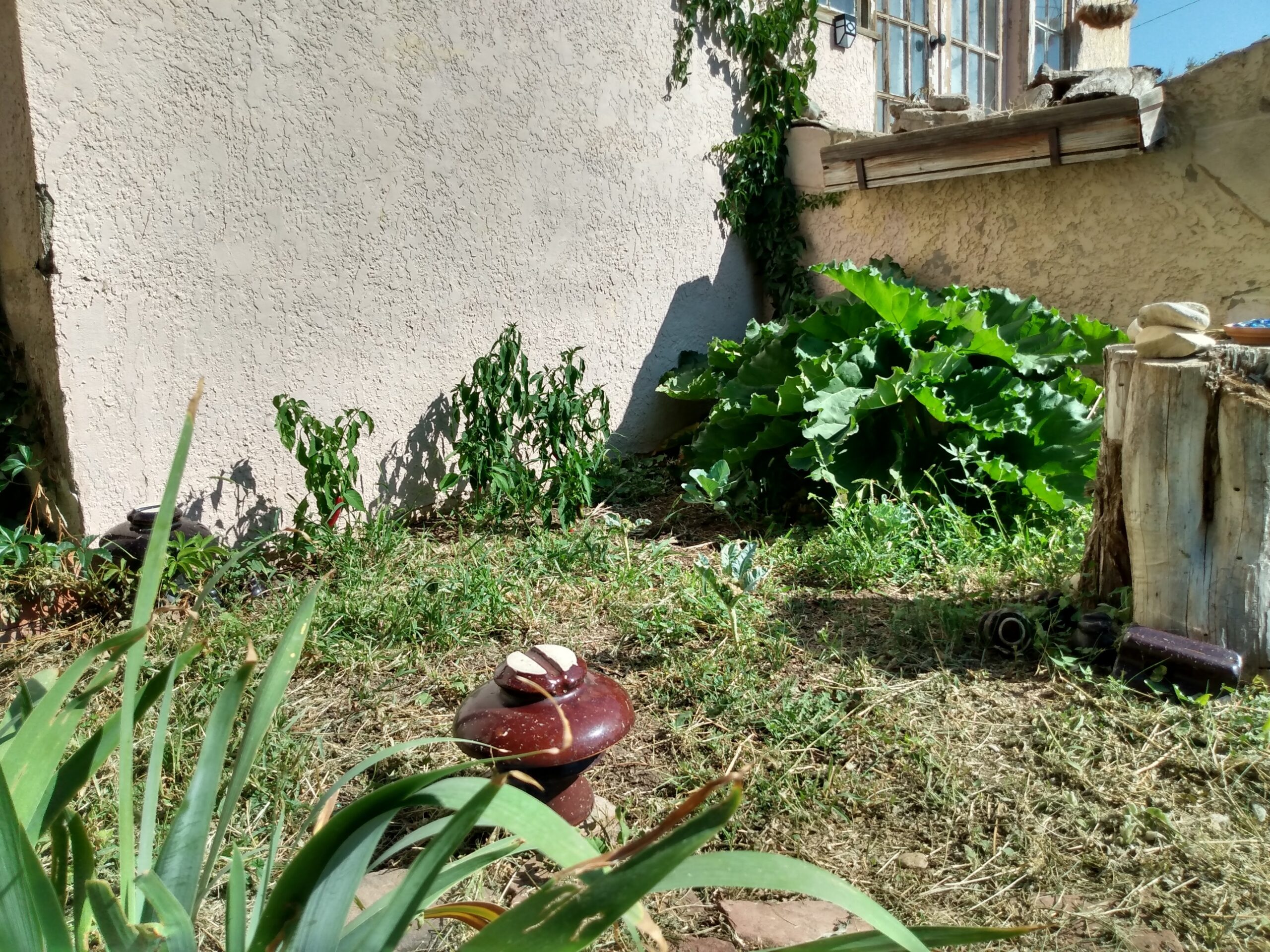
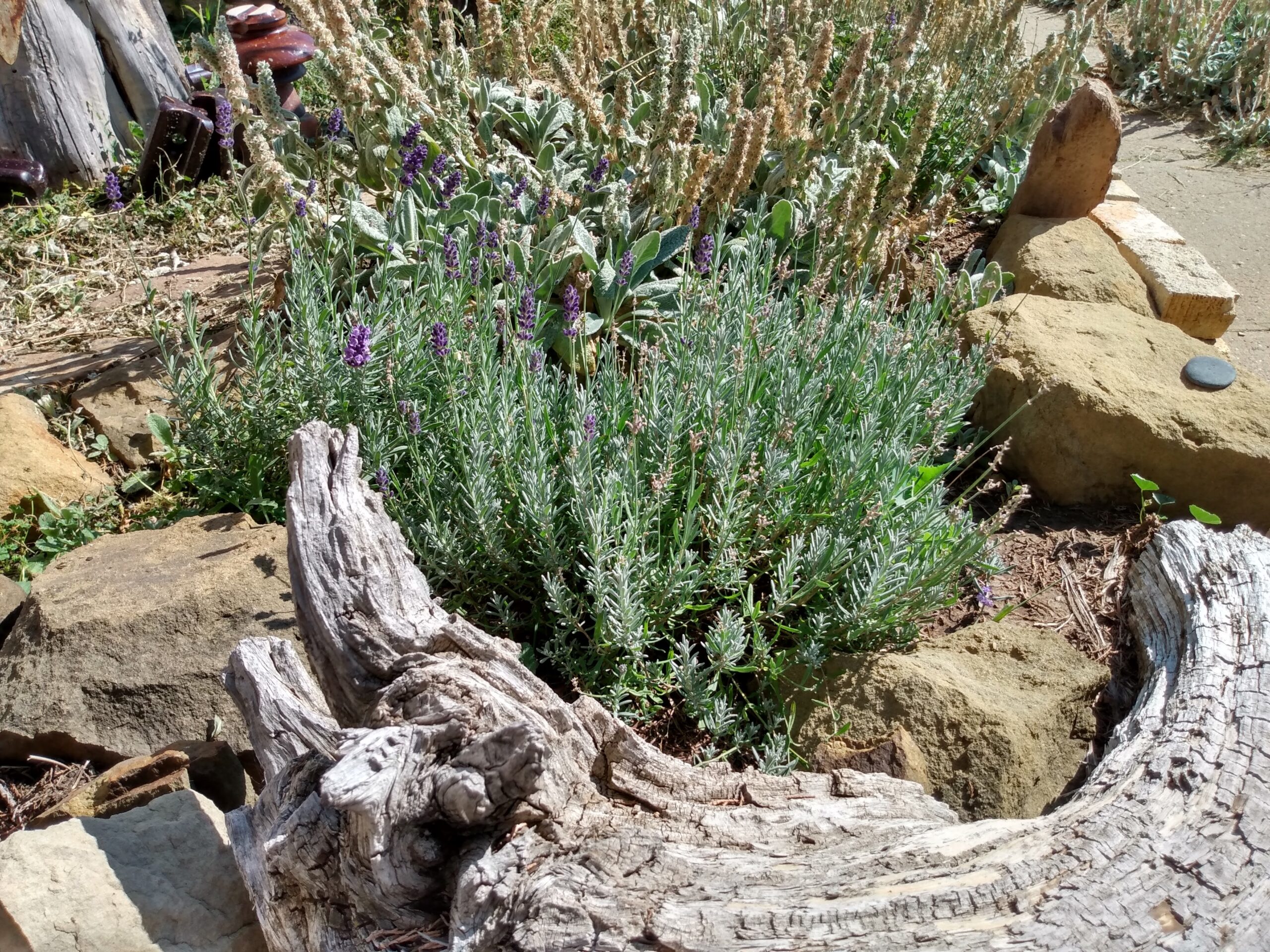
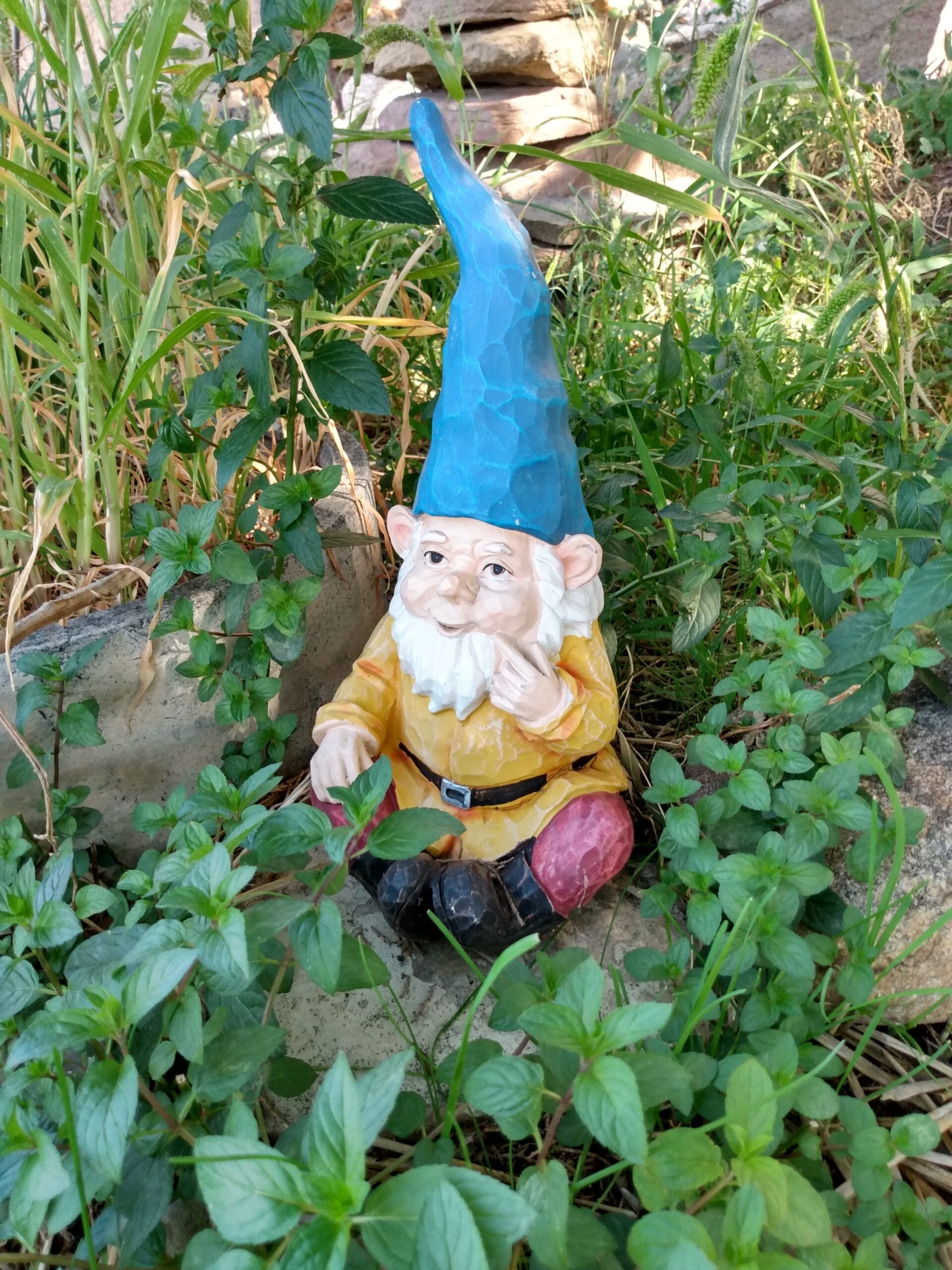
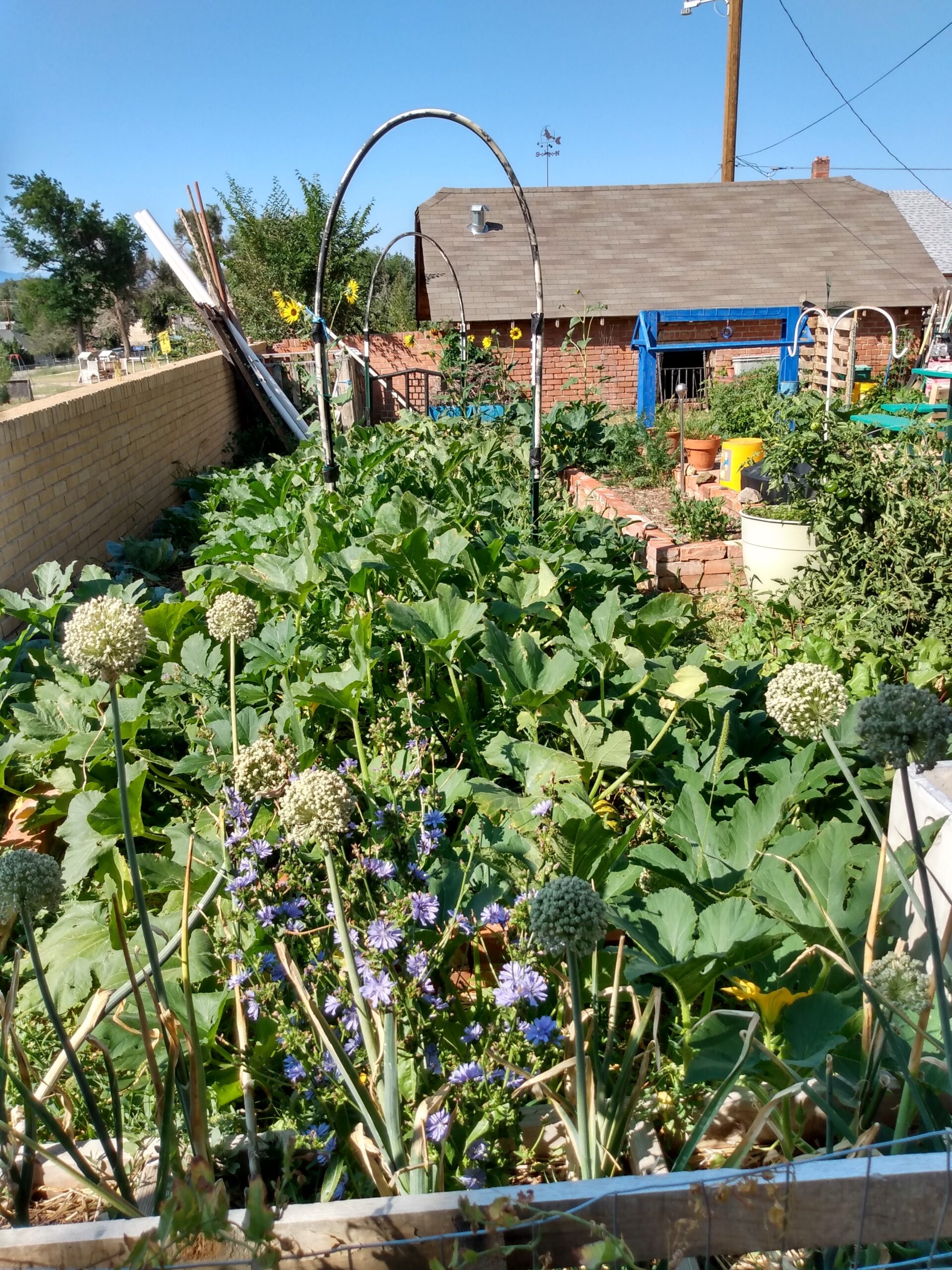
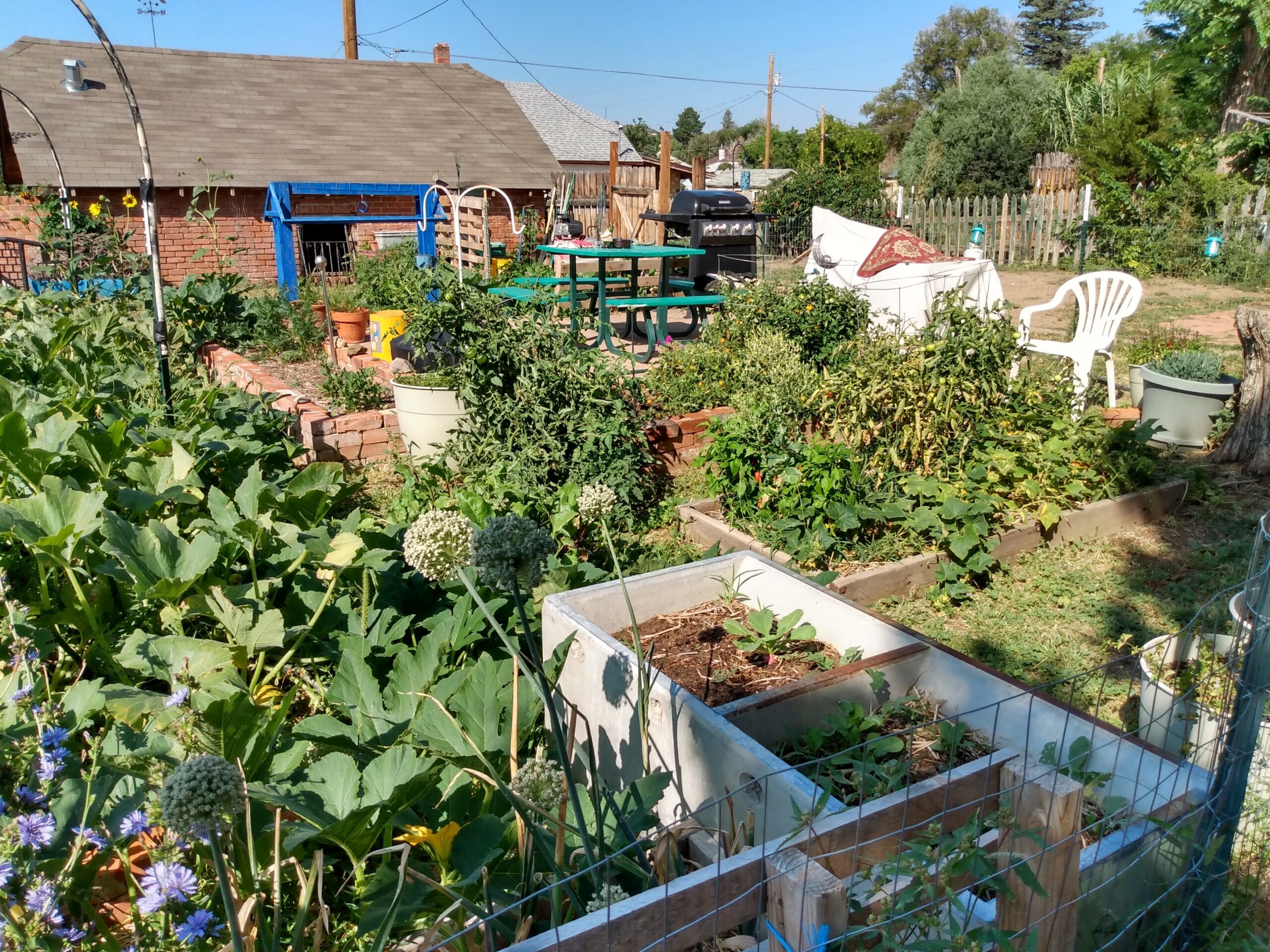
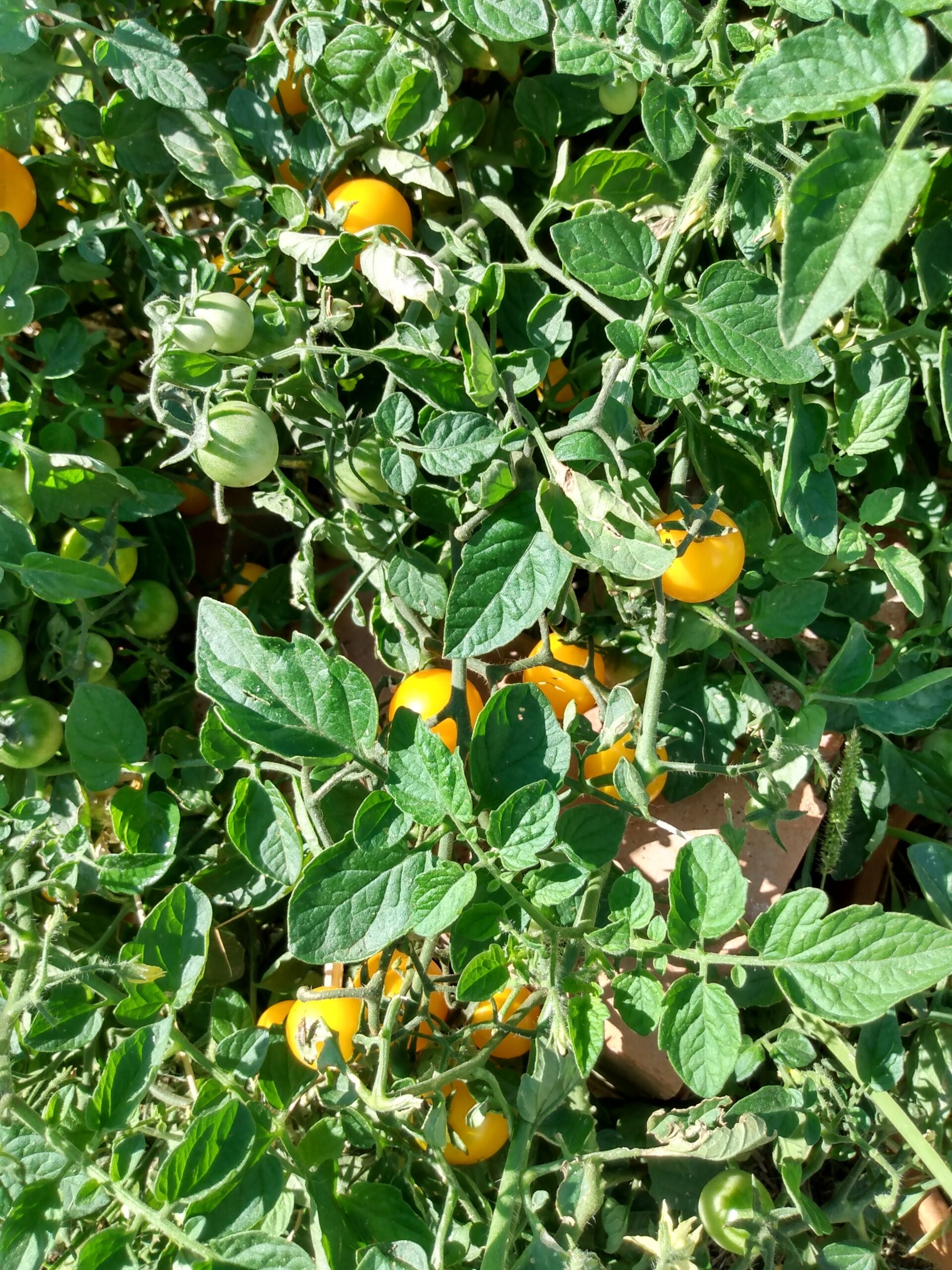
Life and good intentions often get in the way of each other. To be honest, we got run over by the proverbial Mega-Bus. The property we inherited needed more than just a wee clean-up. In fact, it’s still challenging us, although, as of April, it is paid off! Yes, we inherited a hefty debt as well.
We also had to become full time care givers for two years. Between that, needing a health income and then the pandemic, much of life got put on hold. This website was one of them. While it slowed us down, it didn’t stop us.
The garden work… Oh what a challenge. I’ve worn out more helpers than I can think of. I’m not sure which bothers them more; the state of the yard, or that the old lady (me) works just as hard as they do, and often for longer. 🙂 In this post and probably a few to follow, I will post pictures.
In the six years that we’ve had the property, we cleared the yards of trash only to have the roof blow off, and have to start all over. We had to remove an 80+ year old tree, and at present, we’re in the process of removing a cement stairwell that is pulling off the house. We’ve revamped beds, divided the yard to accommodate two dogs, added beds outside of the normal boundaries, and worked constantly to repair/refresh/rewild other parts of the garden. It’s been a challenge.
Some of what I’ve learned shouldn’t be a surprise to any gardener. But…
Now for some pictures.
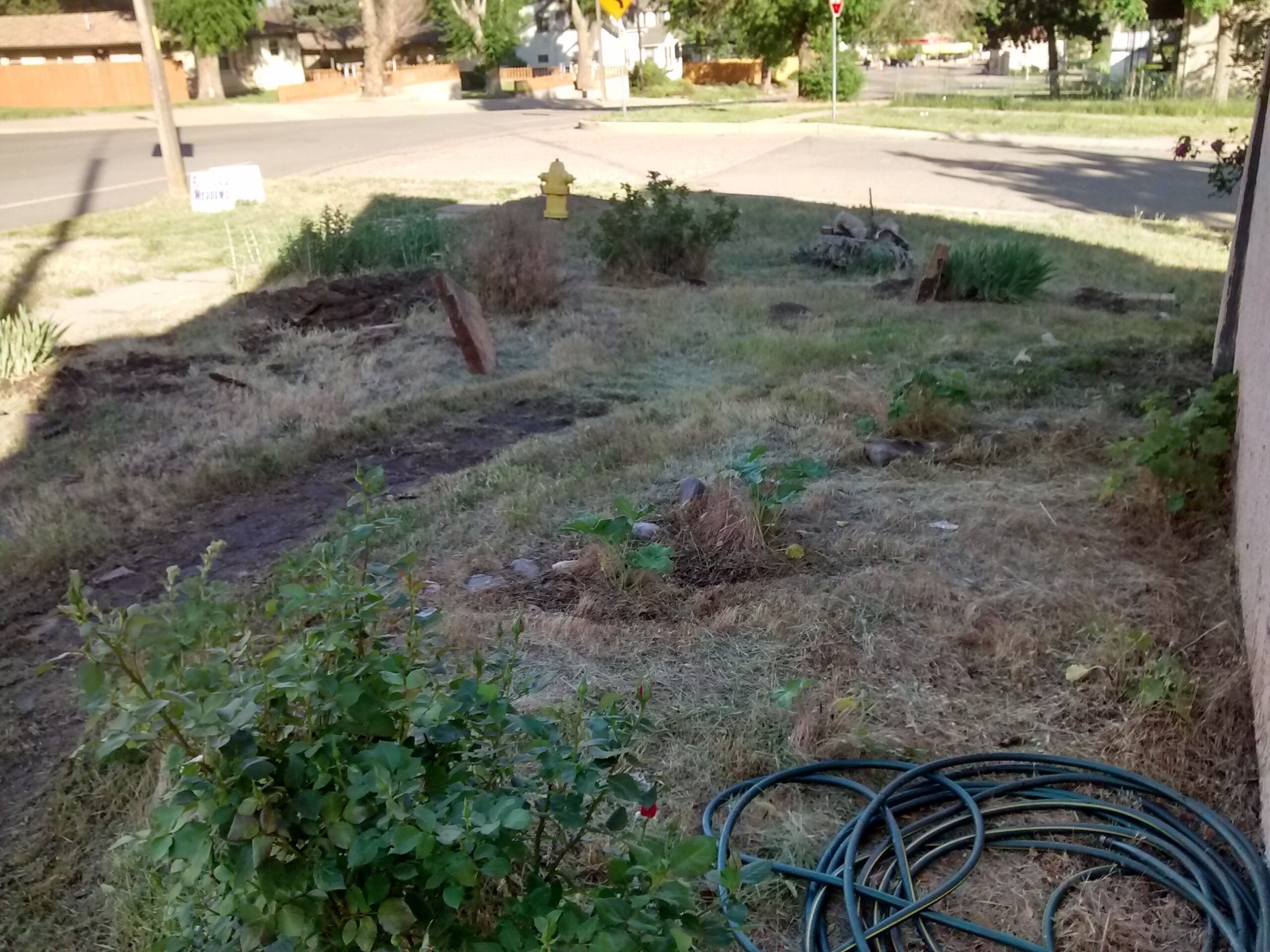
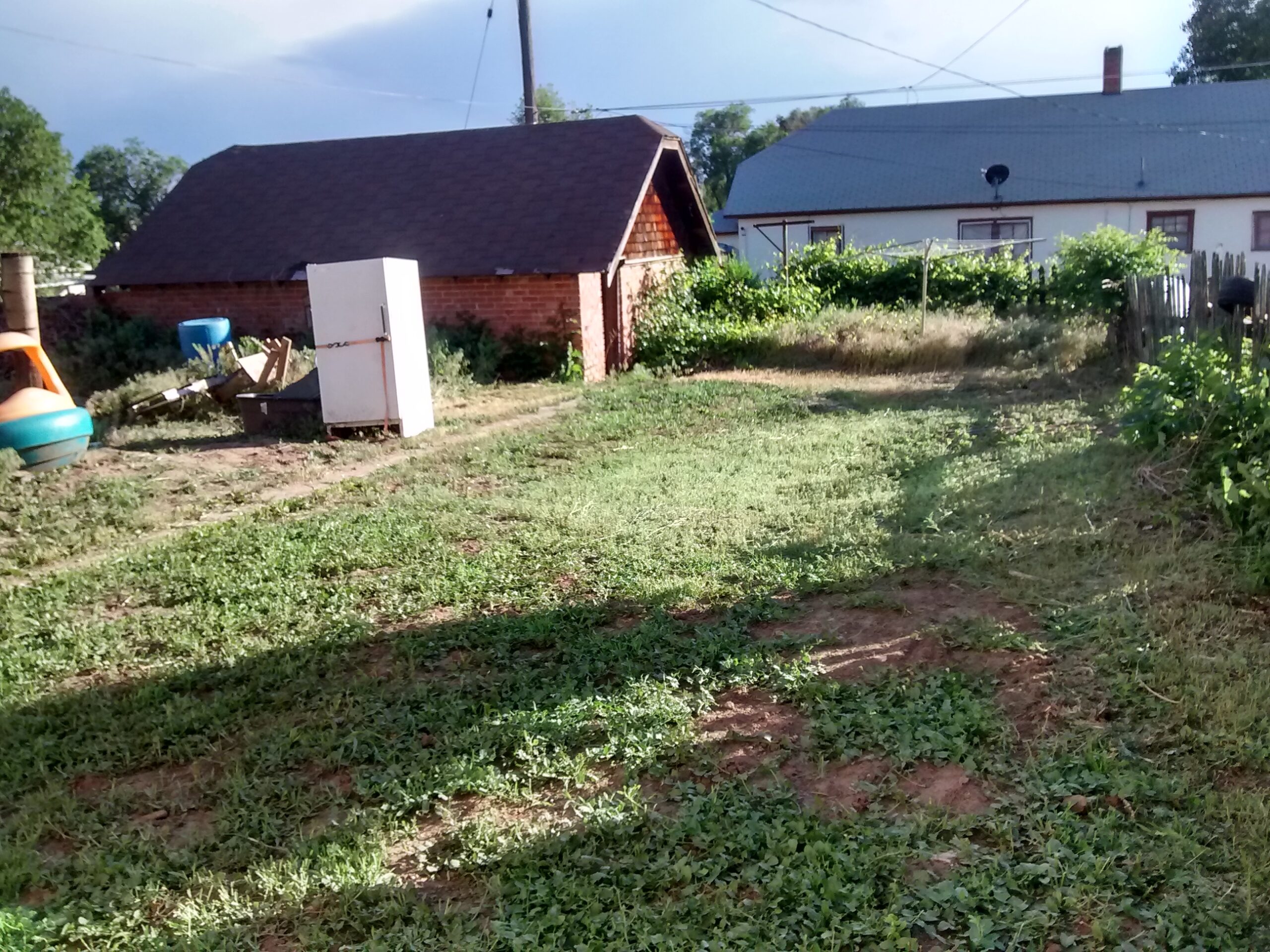

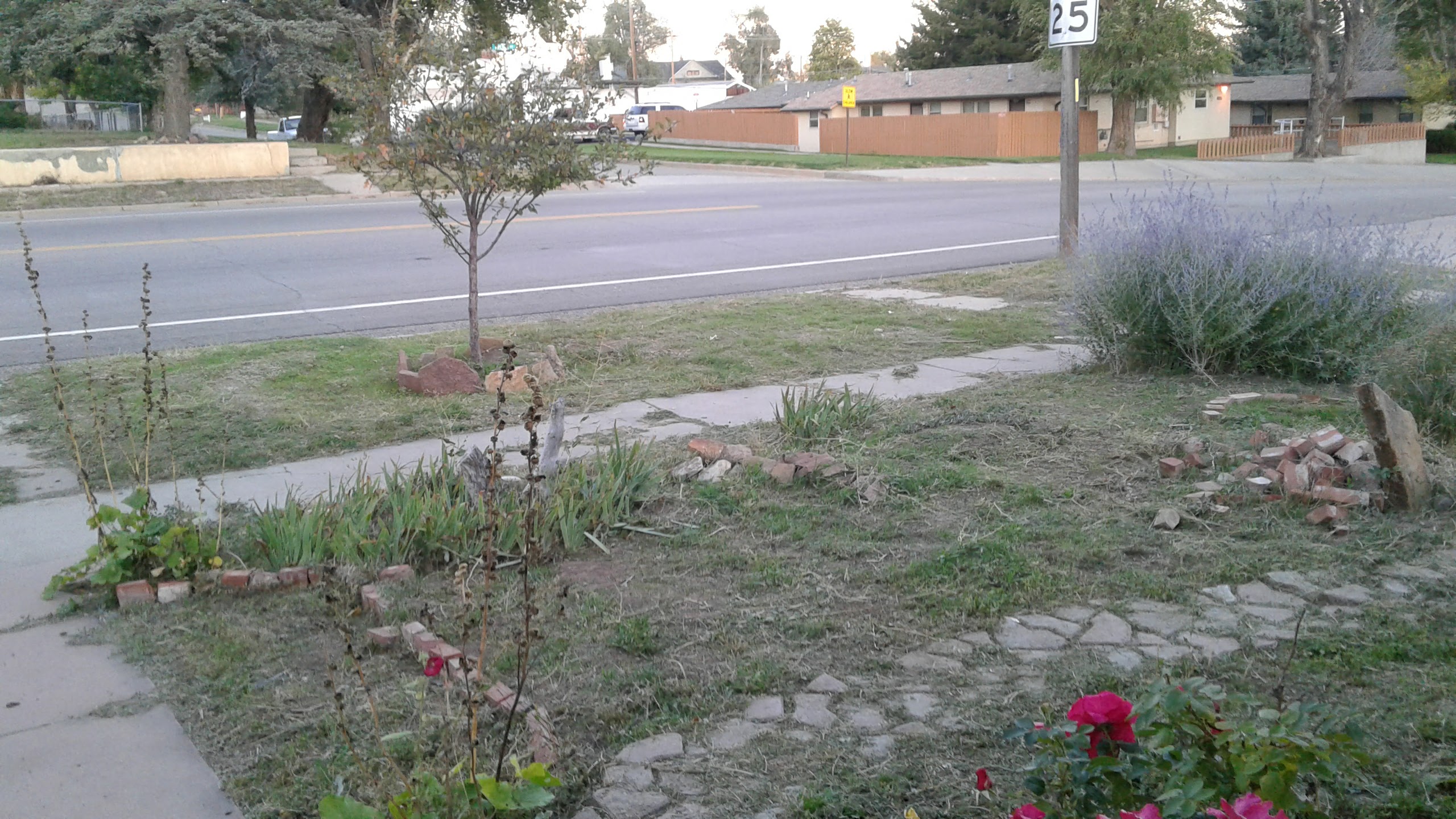
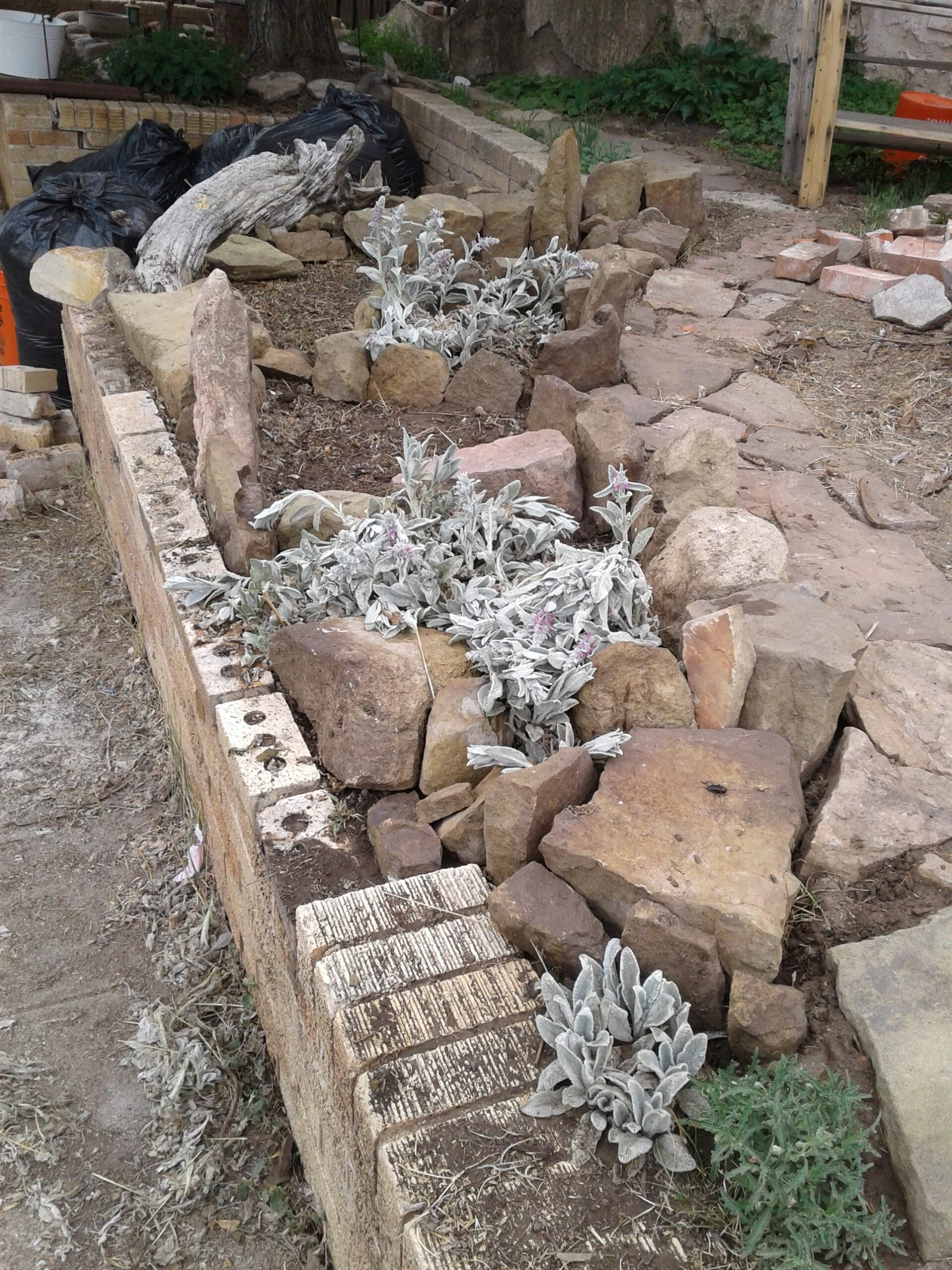
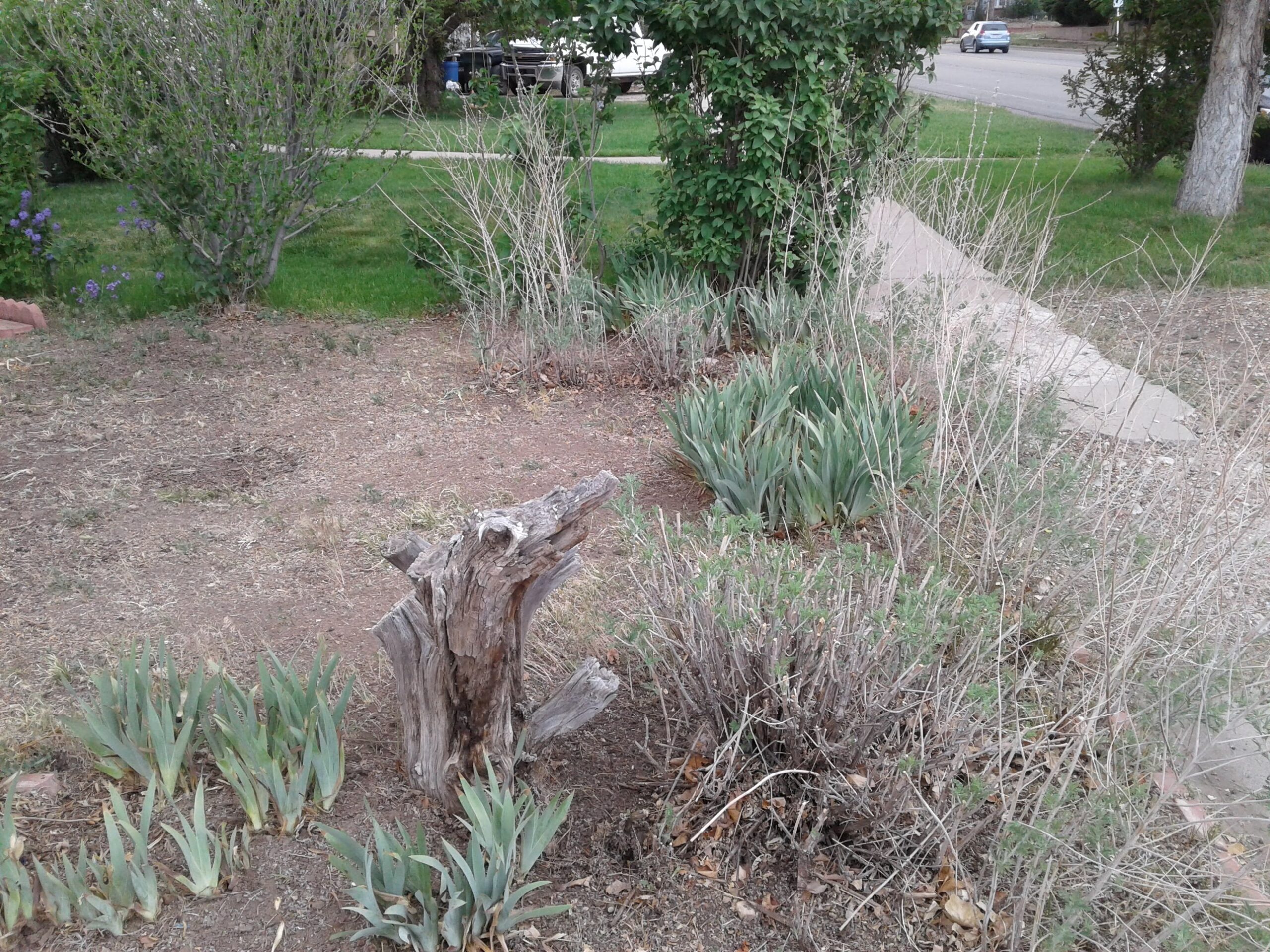
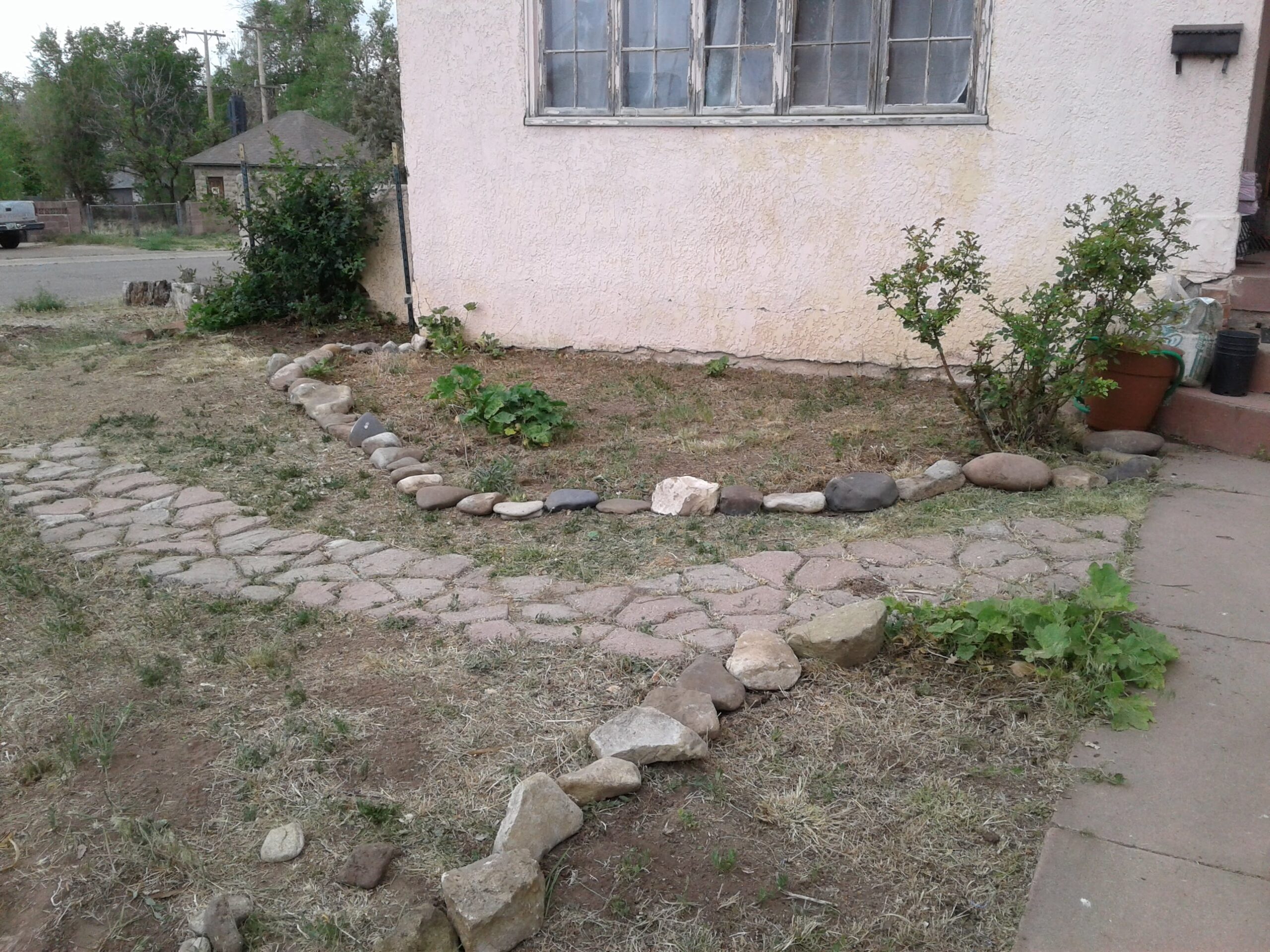
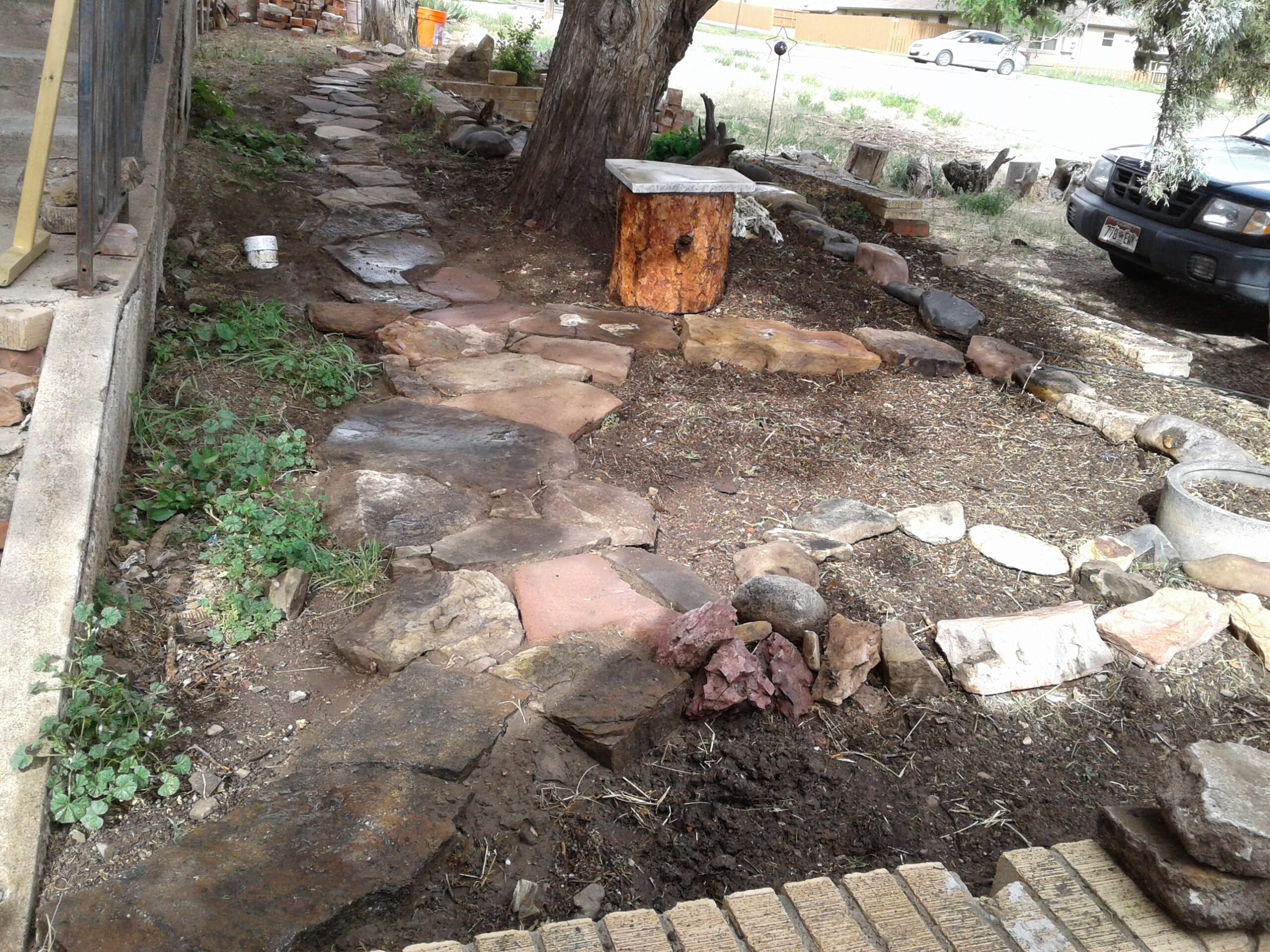

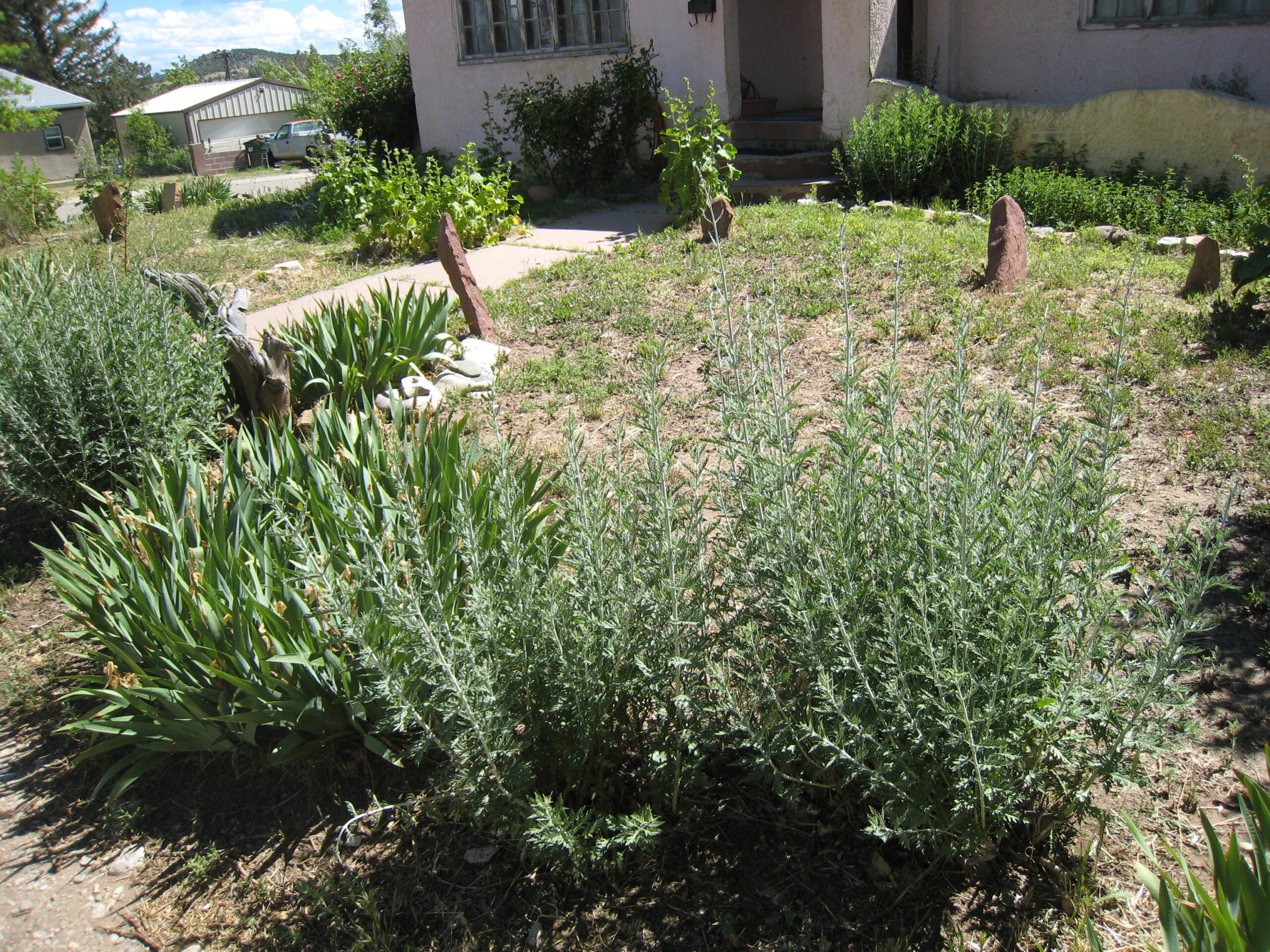


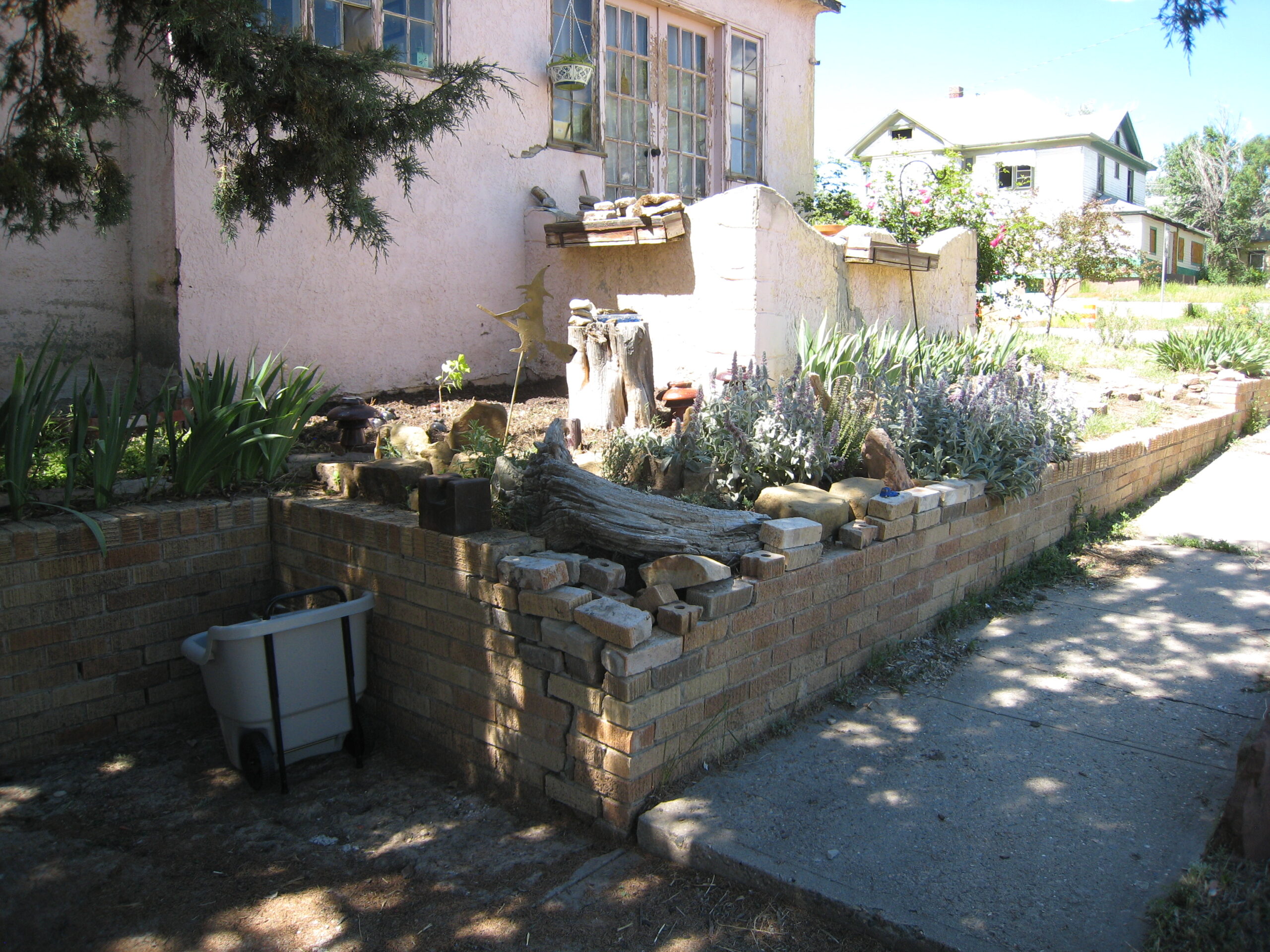
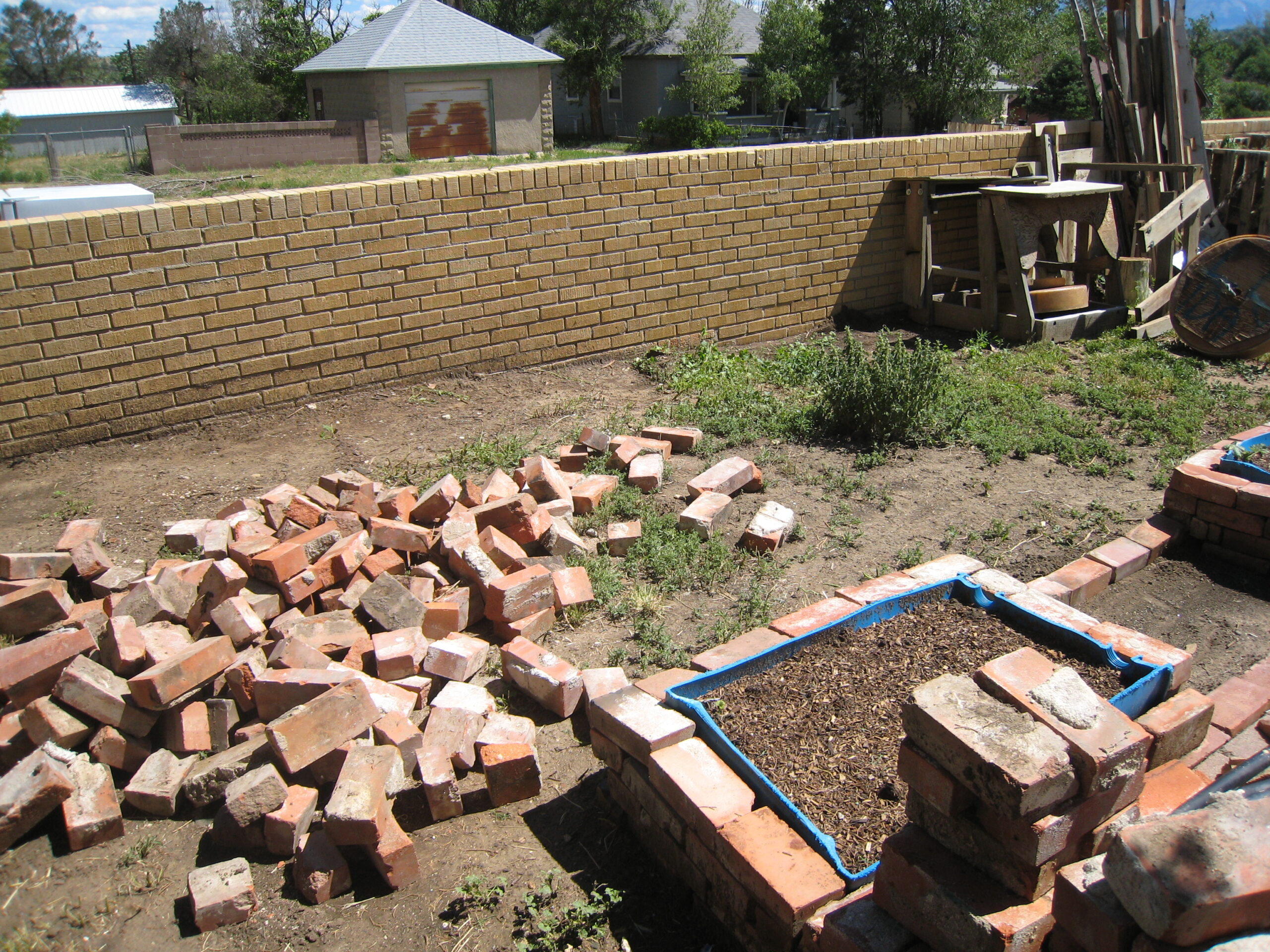
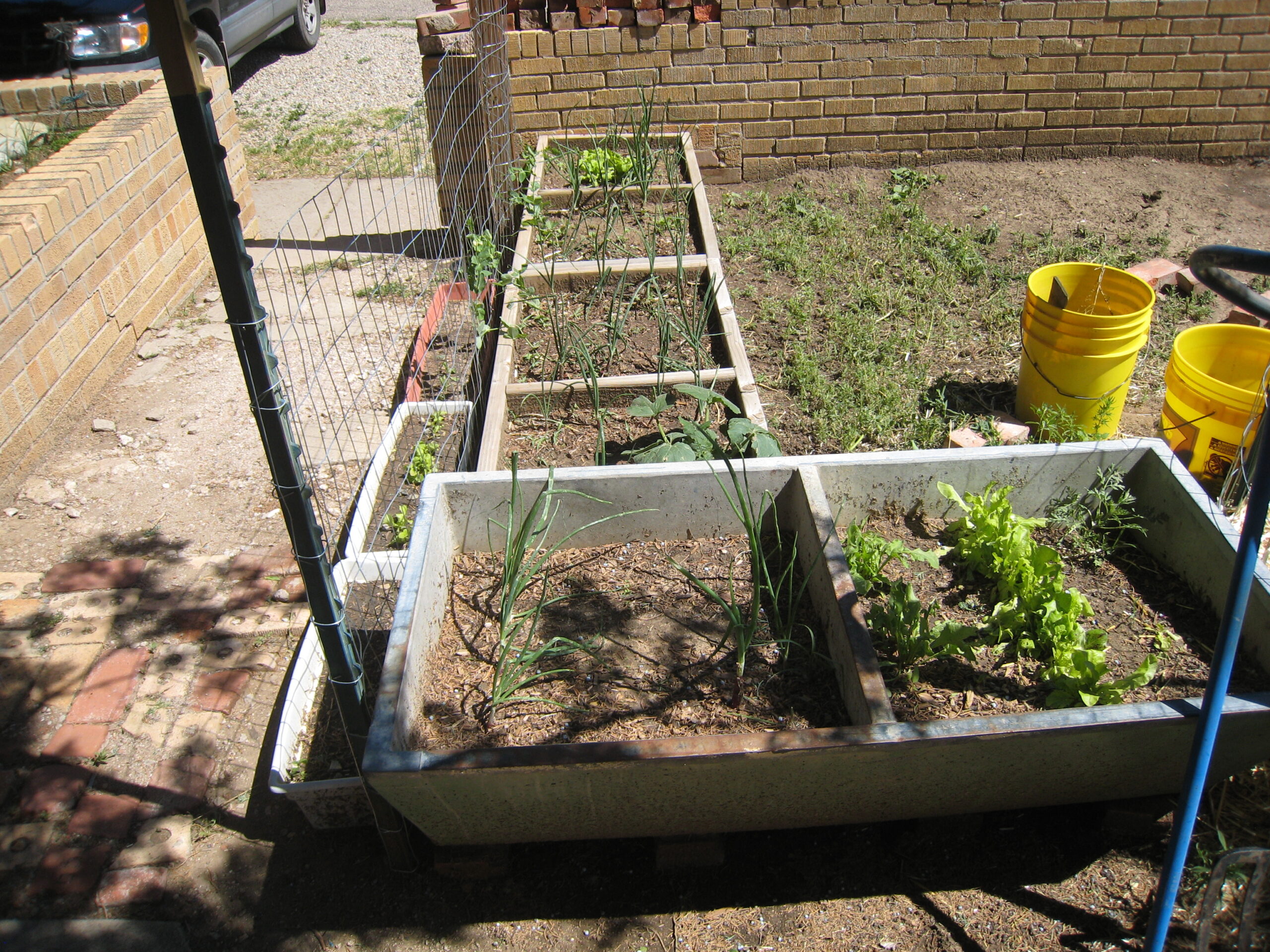
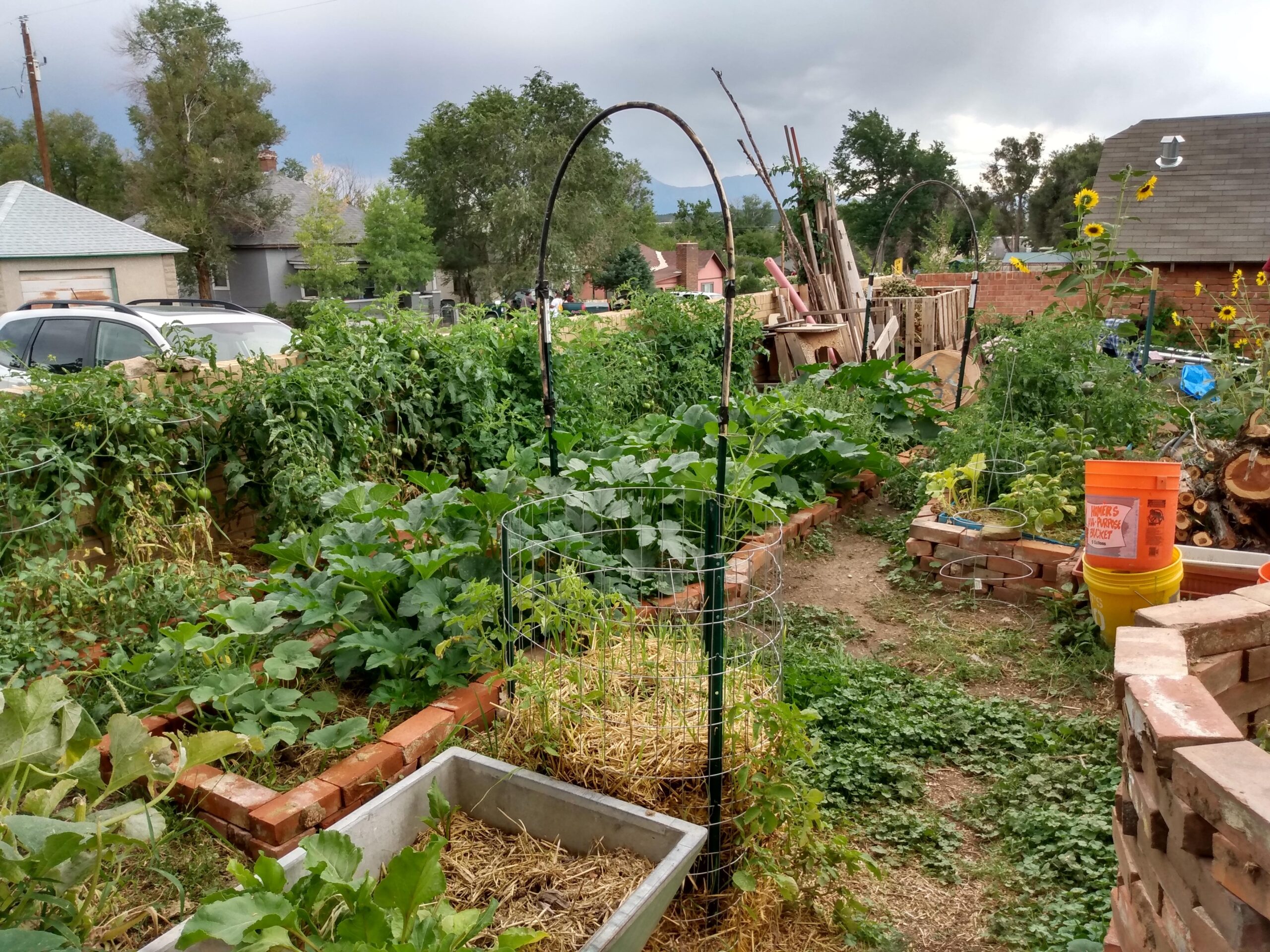
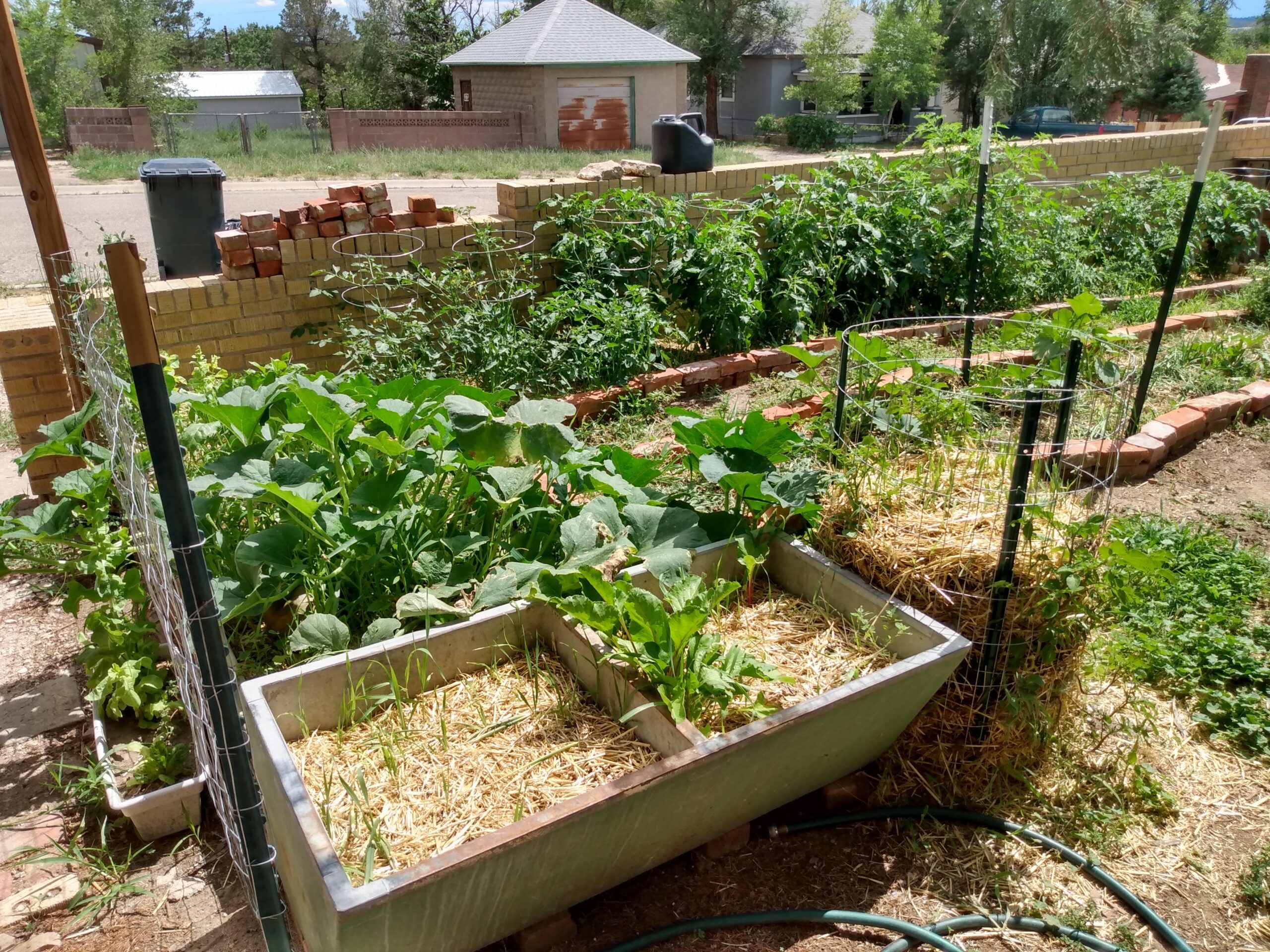
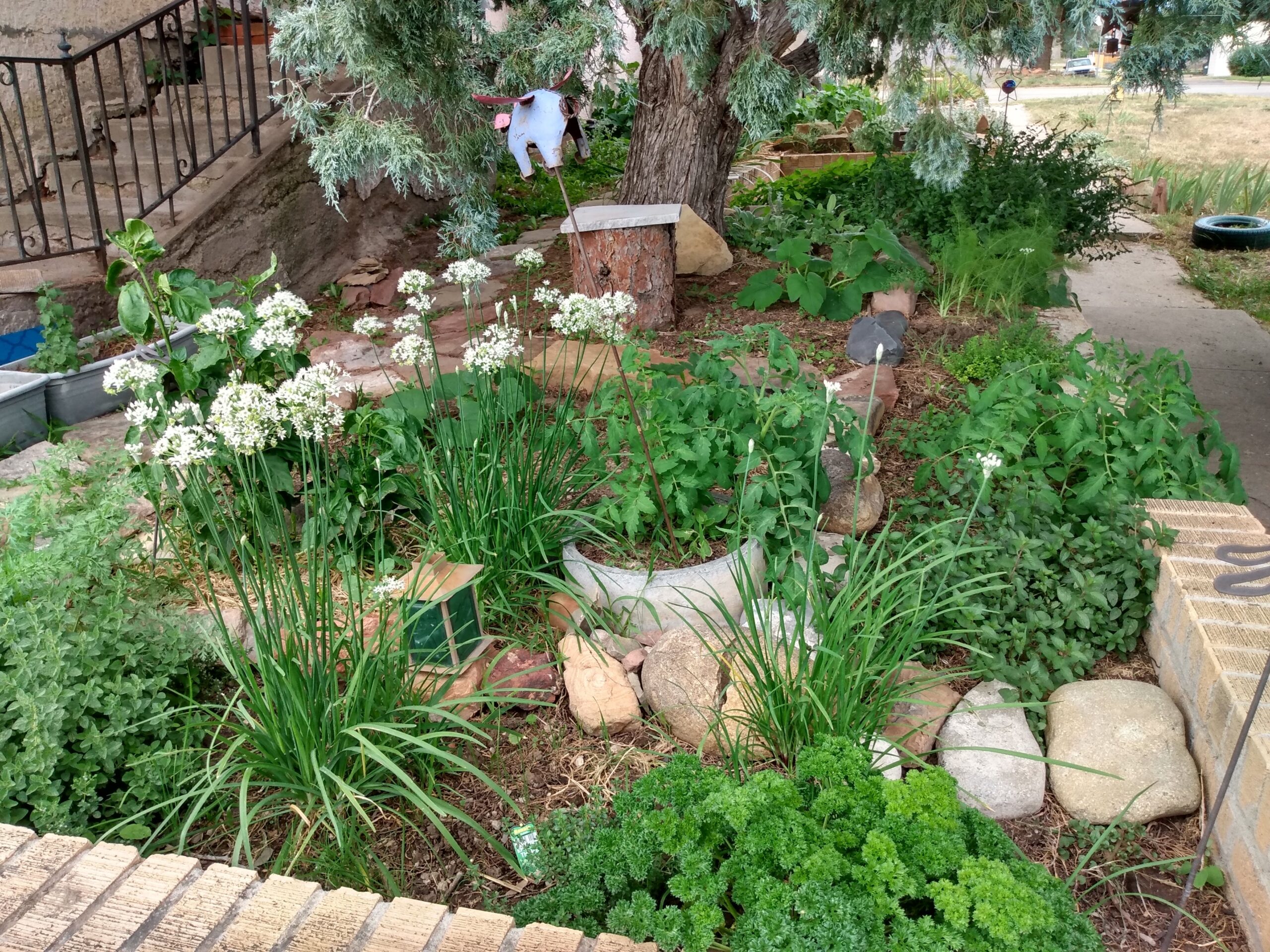
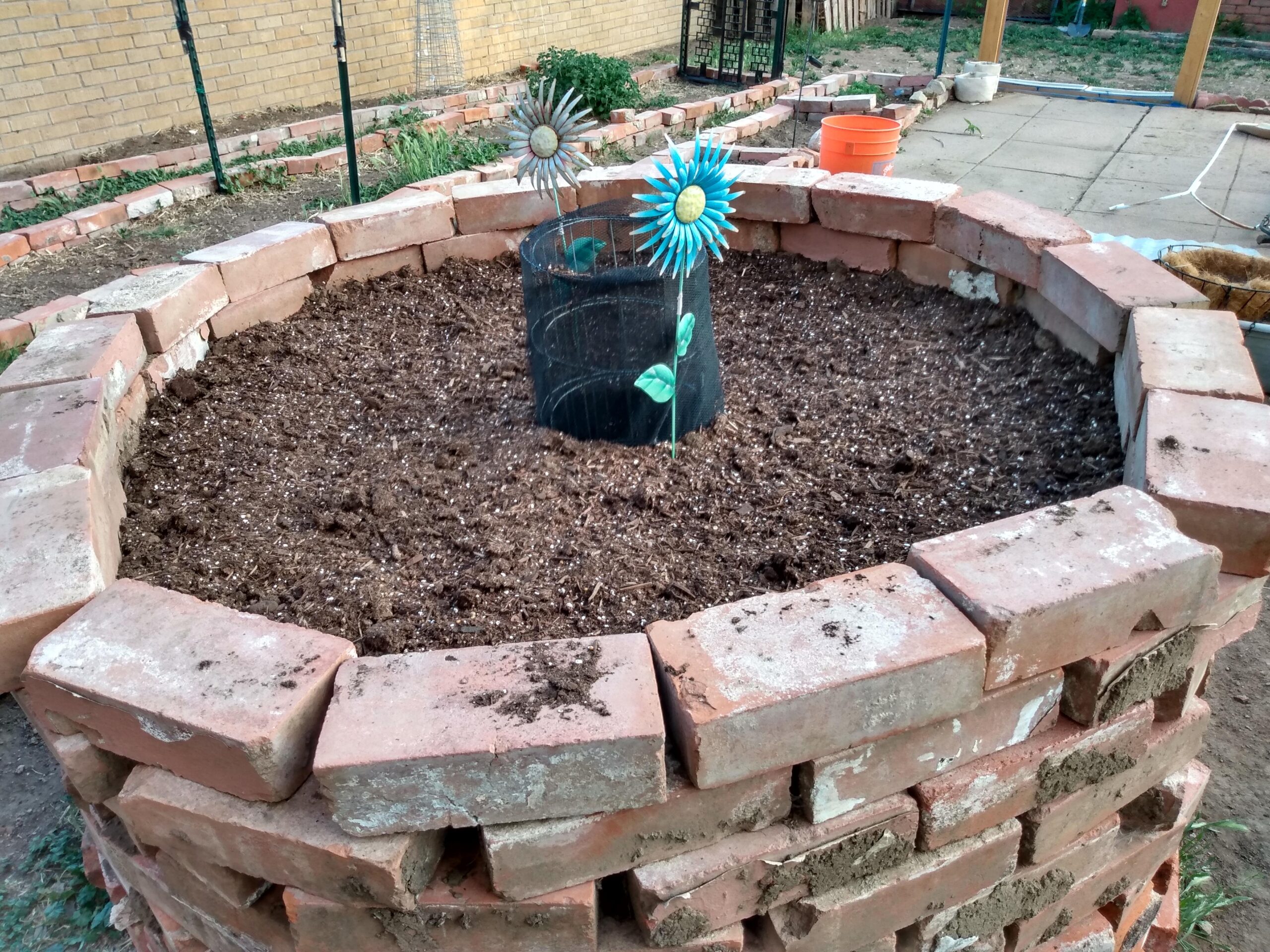
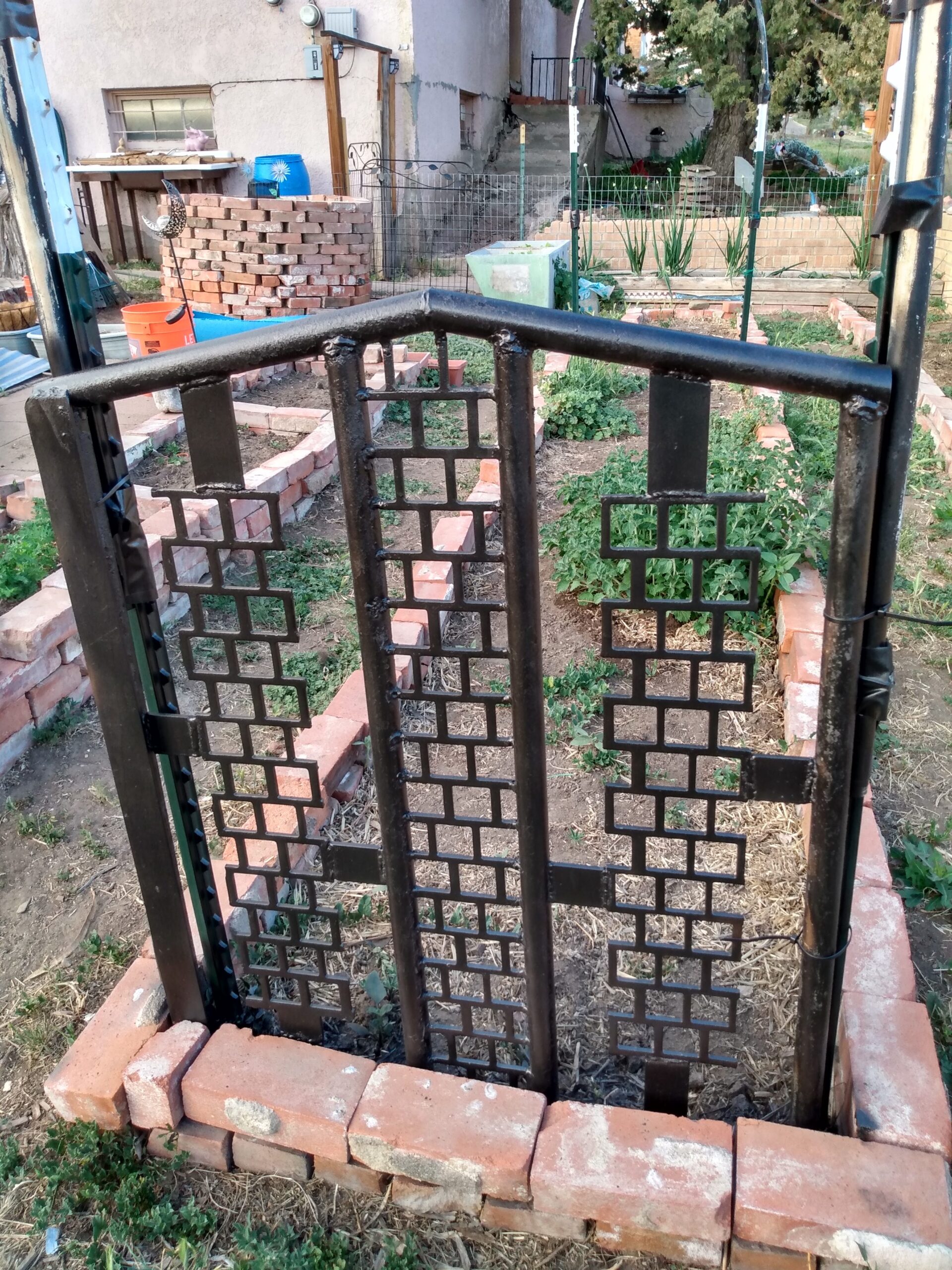
We have been so pleased with how well our garden has done. We’ve given away more produce than we’ve been able to eat or process. It’s been great. The pumpkins we thought would not grow have taken over rows in the garden with their long vines. The butternut squash has not been a prolific, but we have 3-4 ripening. Zucchini have been fantastic, as have the crook neck (two varieties) and the delicata. The tomatoes have exploded and we have all sorts of them growing. The few we’ve had ripen have been heavenly.
We’ve been making plans to expand the garden and add new veggies. Next year we plan to plant Fewer zucchini, acorn squash, cucumbers and eggplants, kale, onions, garlic, corn, green beans, pumpkins, tomatoes, radishes, and the wild variety lettuces. The pics below are of the Bee garden we’ve put in between the compost and the fairy patio. I’ll be taking more pictures this week.
These pics show the growth in the garden and some of the veggies we harvested.
In Huerfano County, we have a group, District O.N.E. which is working to bring fresh local produce from Farm to Table. They’ve started gardens across the city of Walsenburg, and work with LiveWell Huerfano County. Huerfano RE-1 has leased District O.N.E. 2 acres behind the high school campus for farming. A group of Permaculture interested folk will be converging on the land on June 18th to till and plant.
In the mean time, there have been some great articles in the news on Farm to Table and urban ag. This article out of Omaha is great.
District O.N.E. and Livewell Huerfano County are also holding a farmers market every Saturday in Heritage park, from 9 to 2pm. We had our opening day last Saturday, and they figured that they earned more money in one day than they did at any point last year.
In between more rain that this county has had in over 40 years, we have planted the garden. We had an explosion of weeds as well. This weekend, we plan to finish weeding and plant the second round of spinach, carrots and radishes.
We added to the garden areas on the side of the house and added more tomatoes, peppers, cilantro and moved the mint tire. We used ceramic insulators as row markers and with the extra rocks, we built a fairy patio sitting area.
We have begun to garden at my mom’s house. She has a huge backyard, and has given us full rein to do as we please, as long as the front is kept neat. While this is a temporary solution, we are continuing with our gardening experiments. We plan to build a cattle fence greenhouse and begin experiments with hydroponics.
First off, we spruced up the front beds with plants from the other house.
Once we got the front started, we began on the side garden area. Most of the transplanted plants have bounced back.
Then we started on the back yard. We tilled up nearly 500 square feet of the garden and as soon as it stops raining for more than five minutes, we will be planting. I planted kale, a lettuce mix, two kinds of onions and tomatoes on the side. The back will have squash, green beans, pumpkins, radishes and carrots.
Life has been busy. While the weather has been wild, we’ve gotten a lot done. Between unseasonably warm weather, snow and wind, we’ve managed to paint and trim the Wendy House and construct another raised bed. We’ve trimmed trees of deadwood and chopped, split and stacked a lot of firewood. We still have a lot to chop, as two truck loads were donated.
We’ve planned for new buildings as well. We hope to have at least one greenhouse by spring. We came across plans for a greenhouse made from deer fence and scrap wood. We will be making one or two of them. Plus, we plan to build a small barn/chicken coop. All of this of course is dependent on funding and time.
We did have a bit of fun. As the weather got colder, we moved all of the herbs inside. The front part of the Wendy House is full of herbs. This of course started a discussion. Aaron had been looking into hydroponics and aquaponics. He began looking at things online and discovered Dutch Buckets.
Next thing I know, we are off to Home Depot and Lowes. Things didn’t go exactly as planned, but we learned some things, and will incorporate them in the spring. Below are a few pictures. I’ll be posting a full article after this one.
As the weather warms up, we are beginning to work on a variety of projects. Aaron is cleaning up the lab and I have begun work in the garden. We have a number of projects lined up and one is to clear our back yard enough to build a greenhouse. The greenhouse will be where Aaron works on the plant respiration experiments. We will be starting aquaponics there as well if all goes well. In the meantime, we are gardening in a variety of manners. Among the projects on the list is a keyhole garden.
For those not familiar with this concept, keyhole gardens are raised beds combined with compost bins. They take up very little room and less water than your average garden bed. We will be building one in the yard to see just how they work. Aaron of course wants to hook one into an aquaponics system. That was the subject of a long debate, and it was decided to build and understand a basic keyhole garden first.
After we understand how this functions, we will see about the aquaponics. As it is, Aaron has a number of tests he wants to run using his Beaglebone electronics packet. 🙂 Below is one of my many recycled planters.
Today we are working on a grant to fund our Plant Respiration Project that is presently on ODE. This grant is through SpaceGambit We learned of the grant through Mach 30. If we can complete the application and receive funding, we will start one of the first projects that came from discussing and wargaming the novel Issyroo.
This involves studying the respiration rates of plants. Once we have a test apparatus that gives us the data, we can make much better decisions on the kinds of plants necessary to survive in space or on Mars.While we know that it takes about 400 plants per person per year to provide oxygen to survive, we have no clue as to what plants will work for oxygen and food production. As we’ve discussed before, there simply isn’t enough data out there. Hence the plant respiration project.
The project was the brainchild of a late night discussion on Google+ with a bunch of Mach 30 and maker space members. The realization that no one had tested food plants astounded us. It gave a major plot line to the story as well as made Aaron and I think about whether or not we could do this.
While major science experiments are usually the purview of the scientific community, we wanted to do something that the ‘common man’ could do. That students in high school or the avid gardener could accomplish. We realize that if we are to become a space faring civilization, we must have mixed facets of society involved, and not just the military, scientific or educational communities. We need to include the dreamer, visionary, gardener with dirt on their hands and the social engineers that lurk under the guise of grandparents or loving family. It has to be a mix of people. Moreover, it is our belief that the major occupations of humanity in space or on other worlds will be life support and agriculturalists. Scientific exploration may only comprise 10-20% of those involved. The rest will be involved in keeping the colony alive. This means we must understand the symbiosis of humans, plants and atmospheres.
It is this experiment about plant respiration, which may lead to better understanding of extraterrestrial agriculture, that we hope to fund via SpaceGambit.